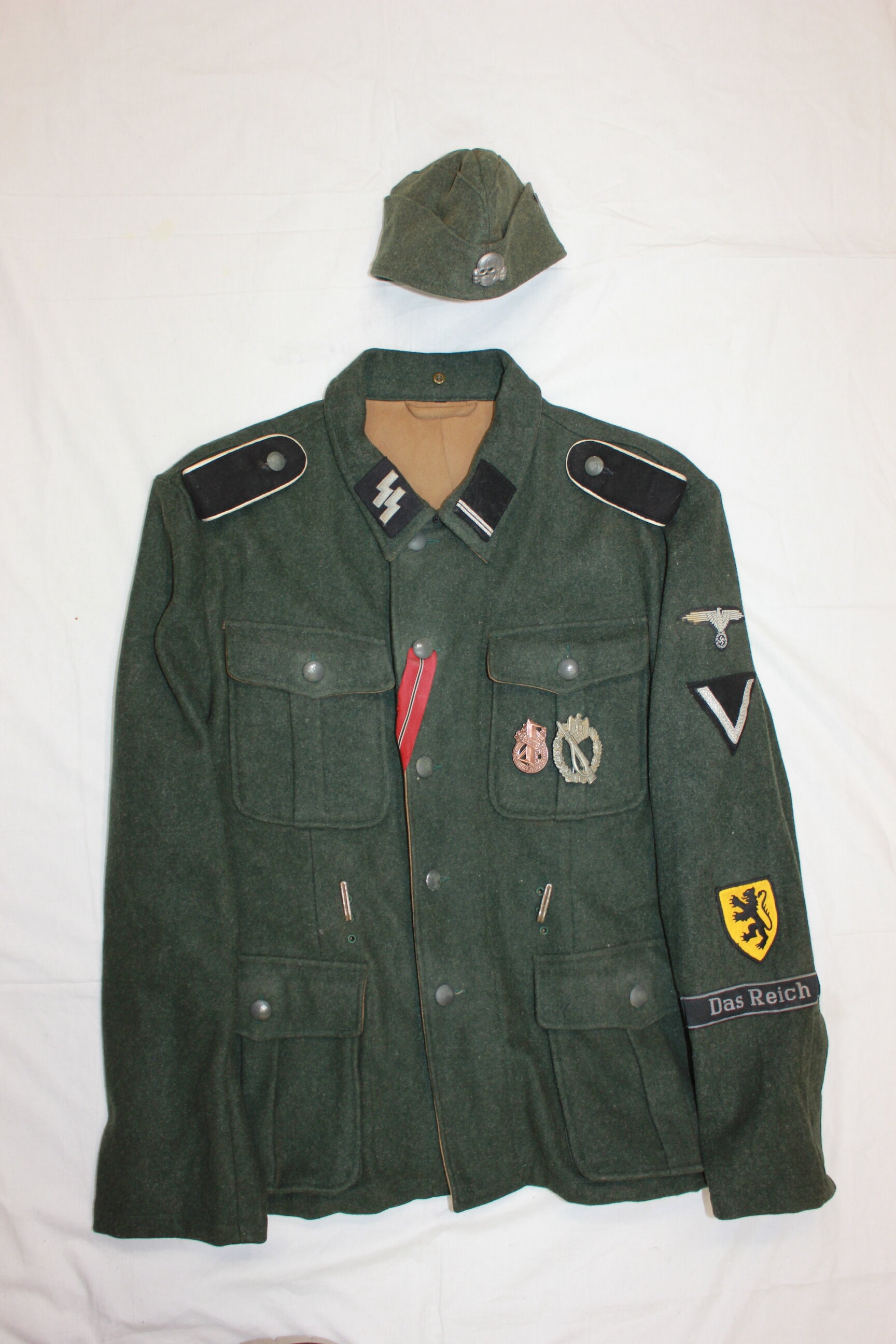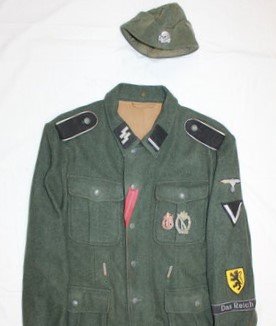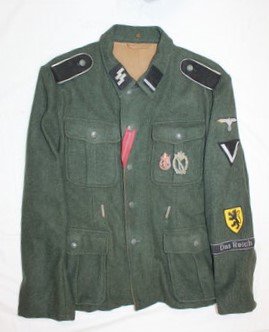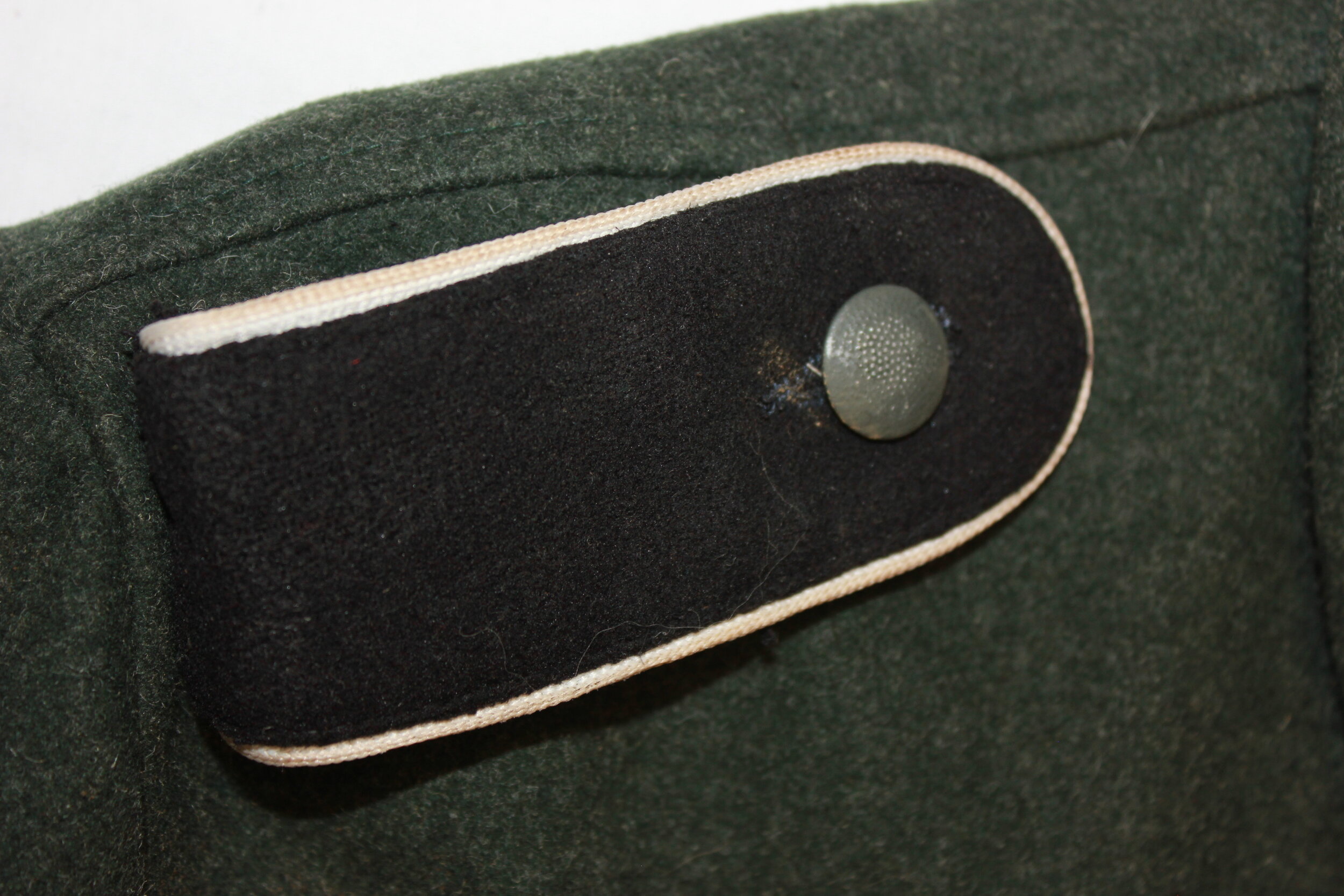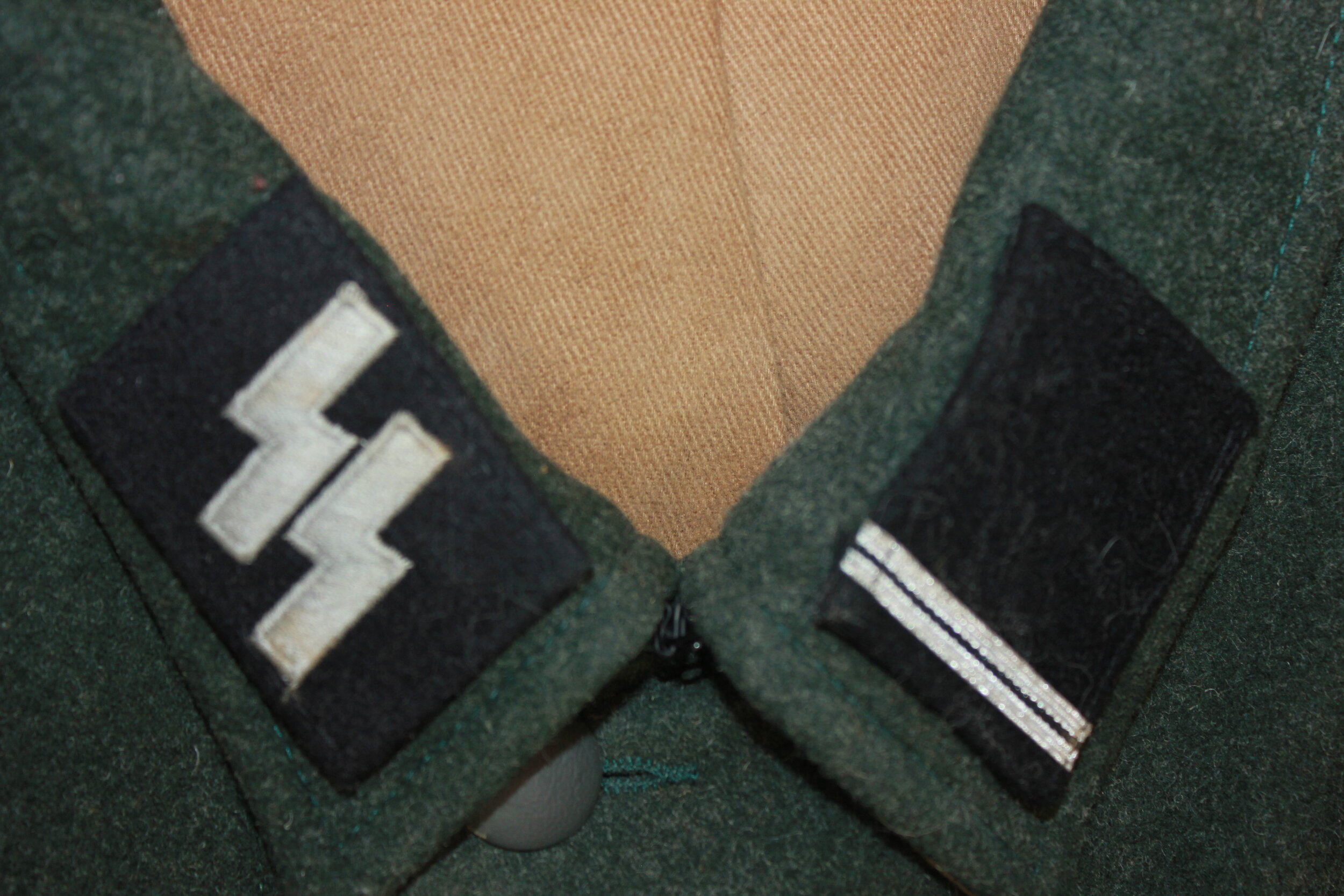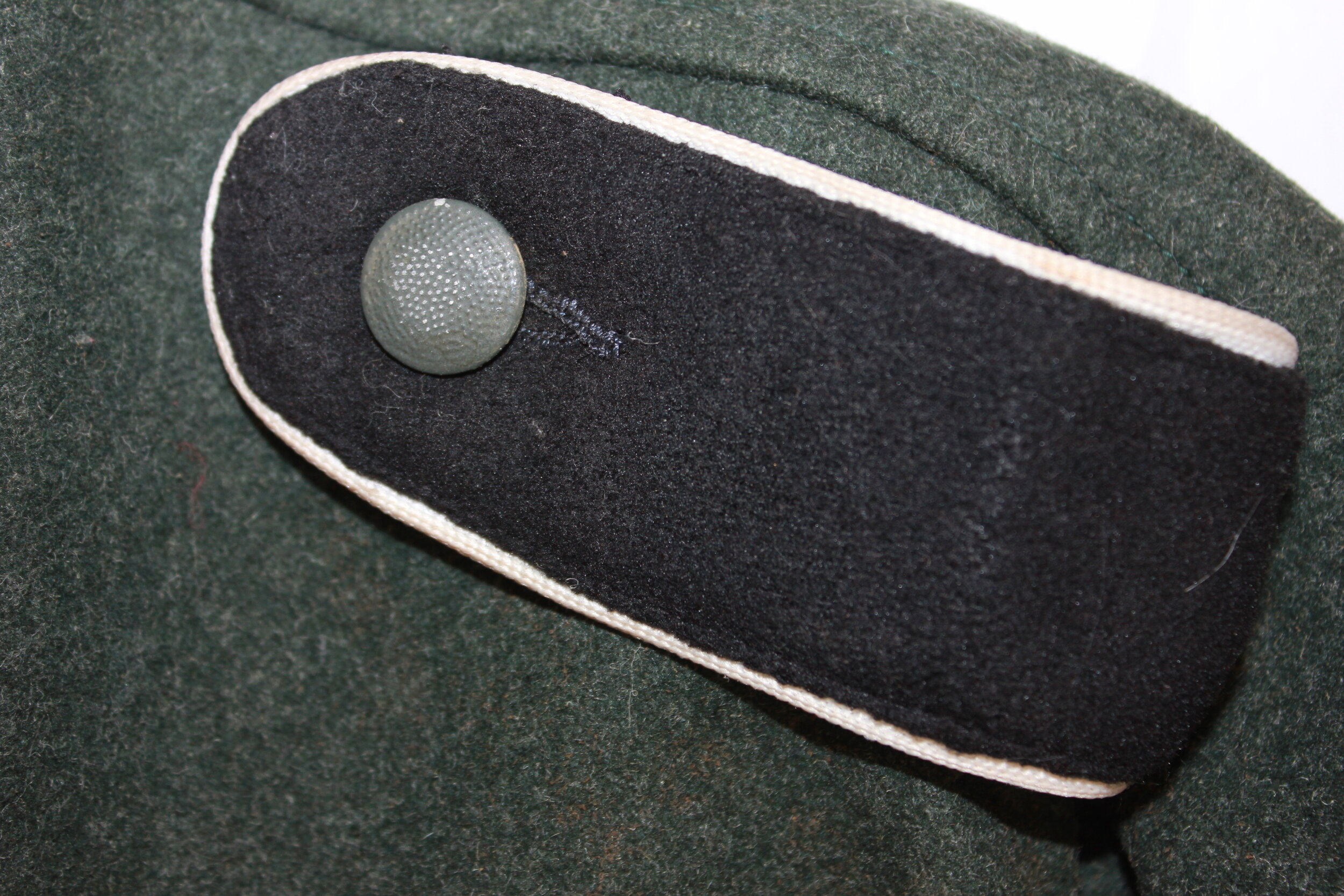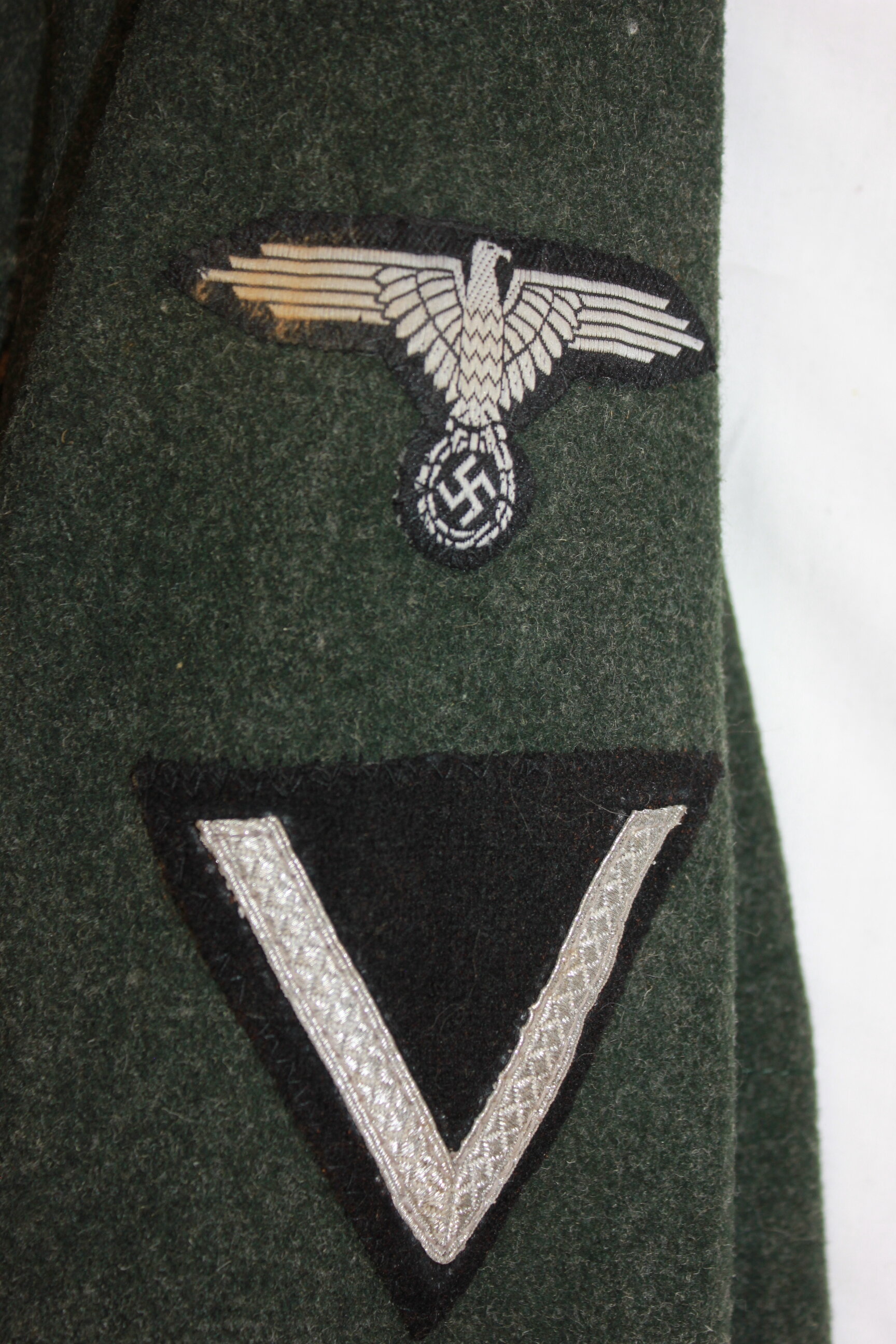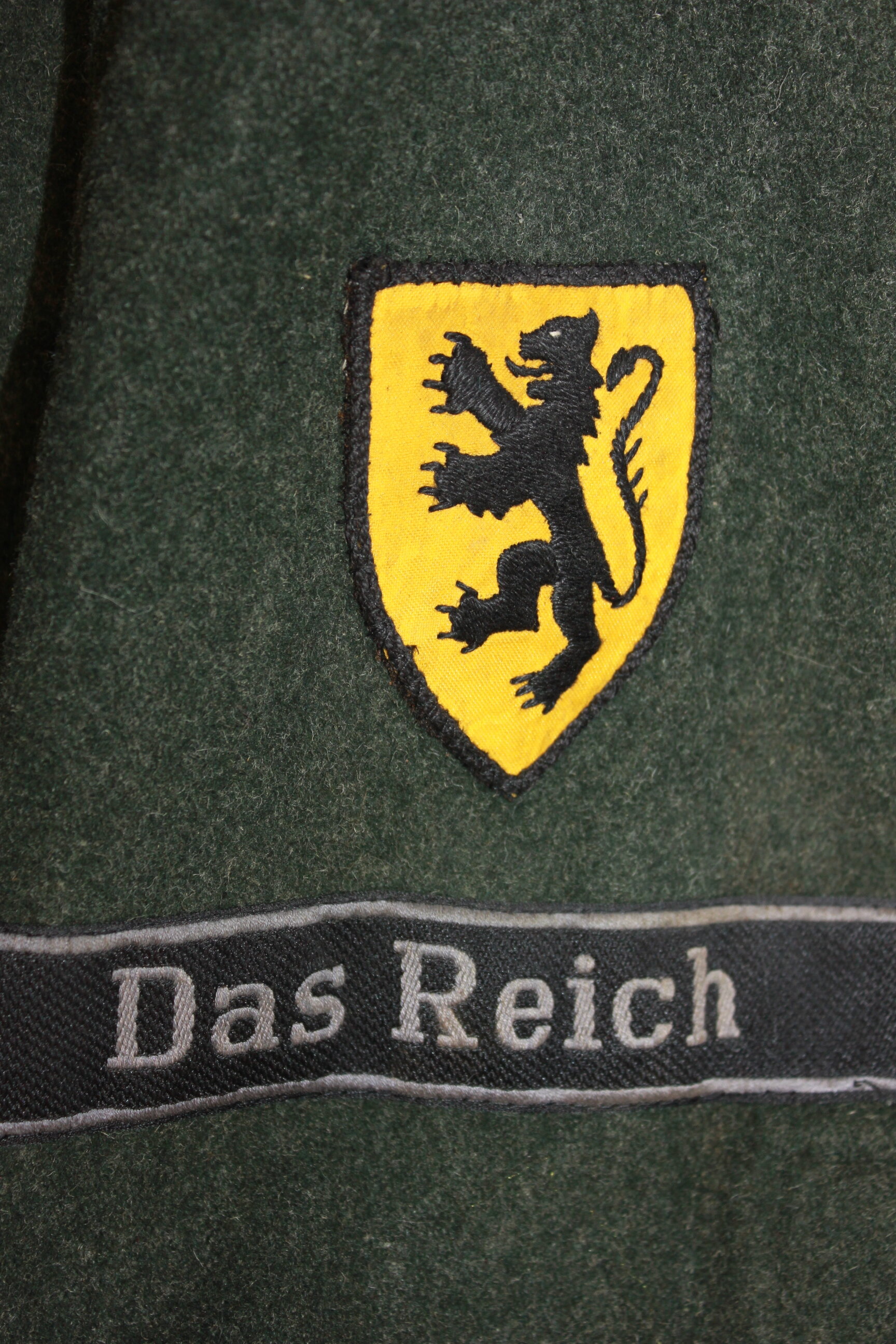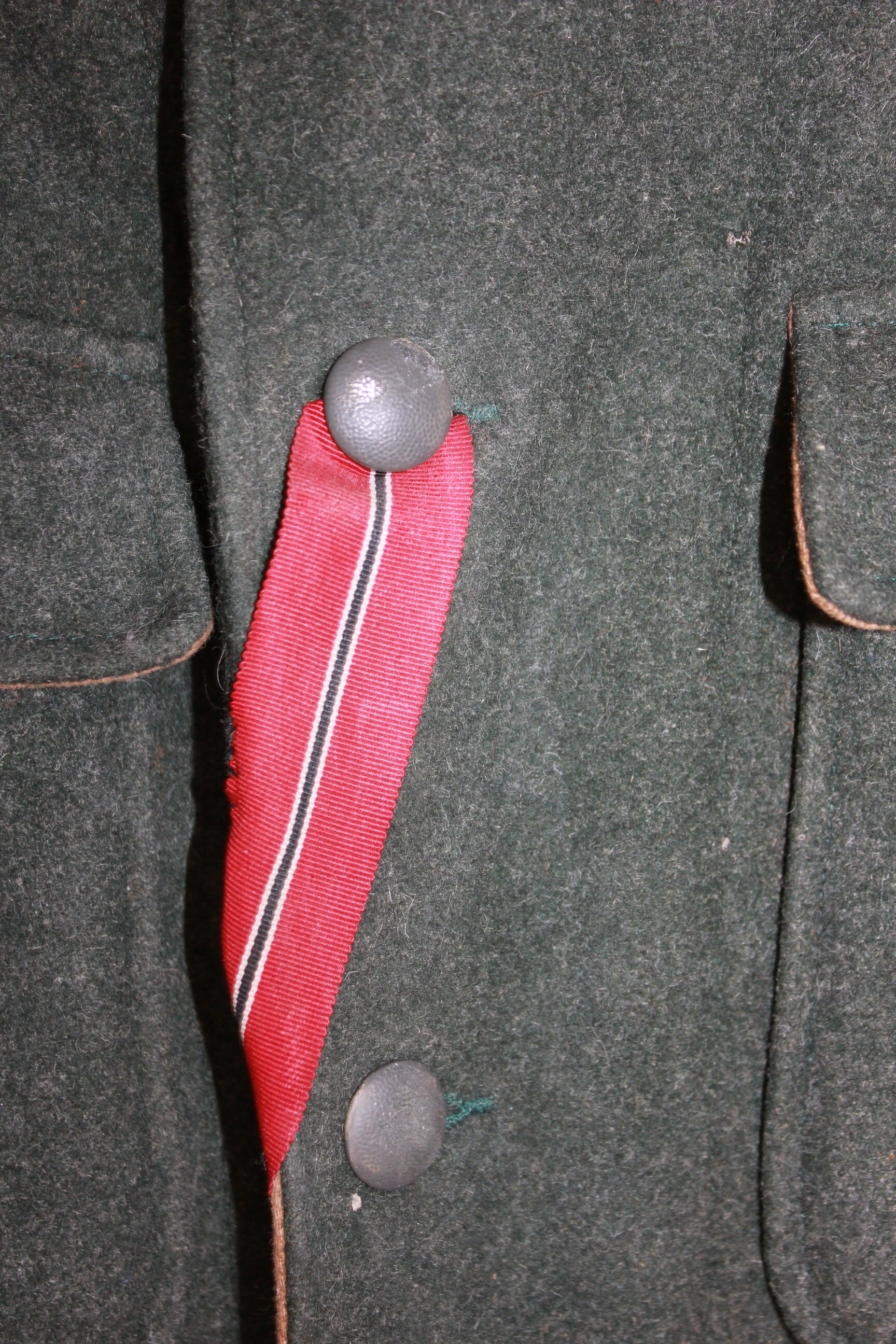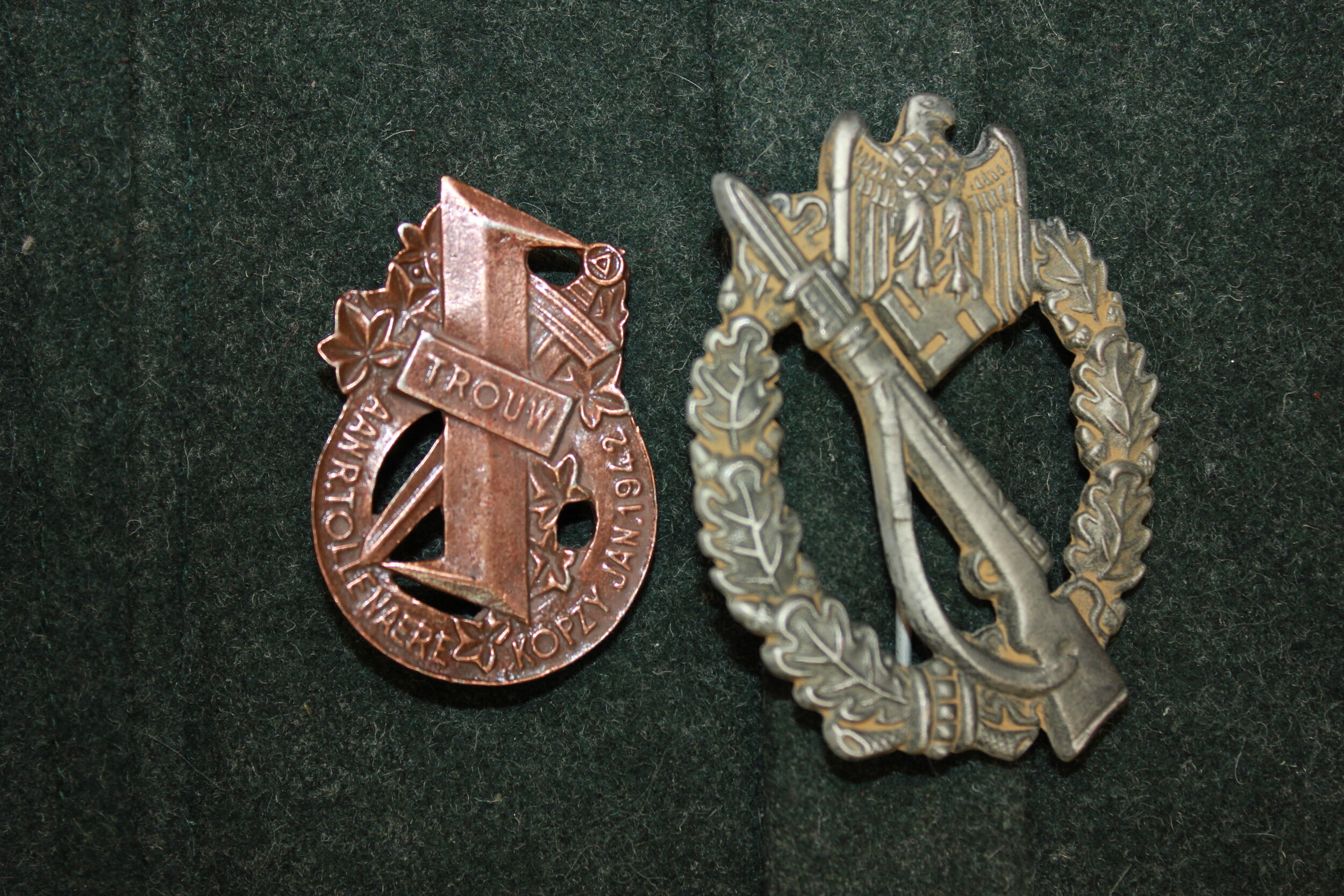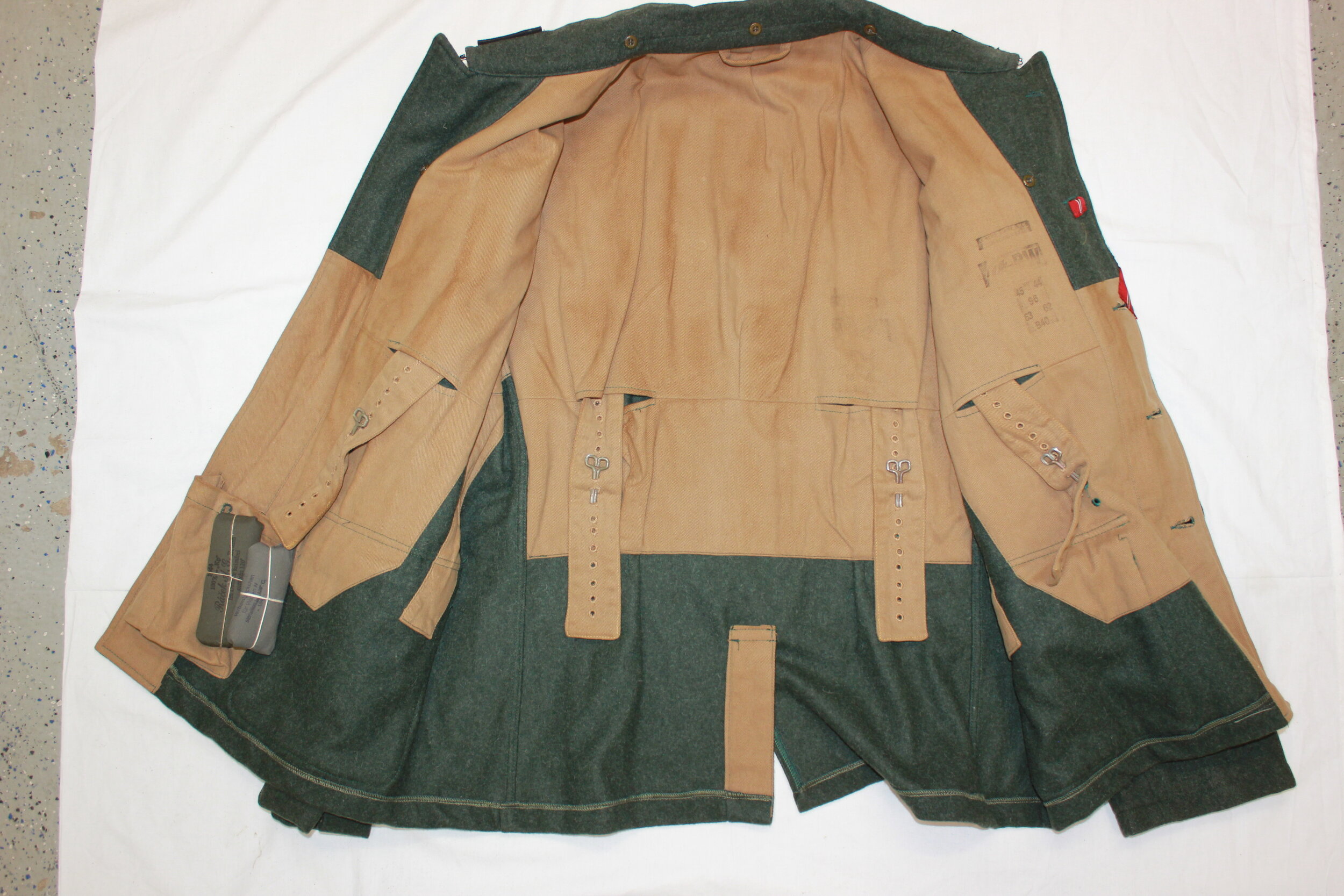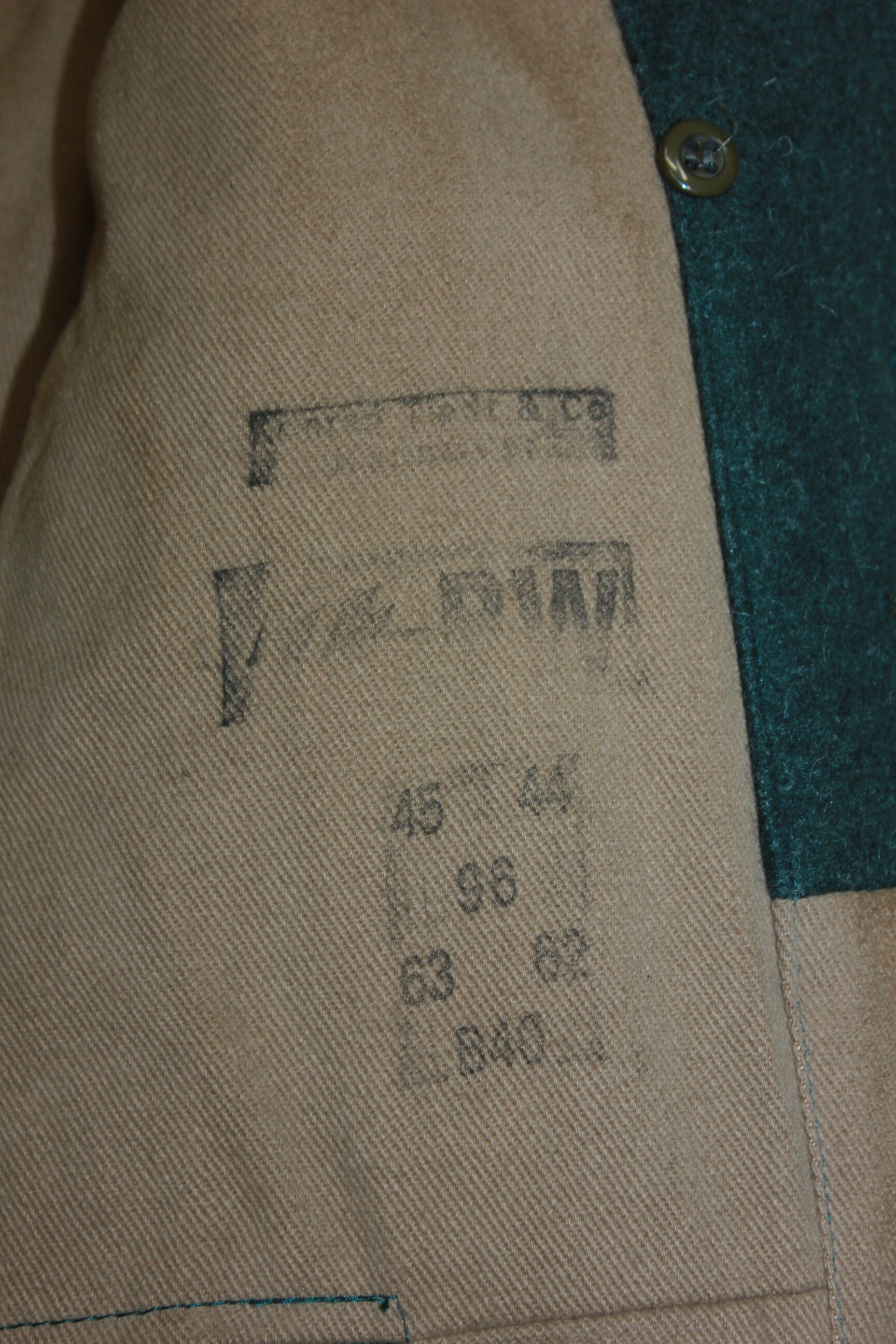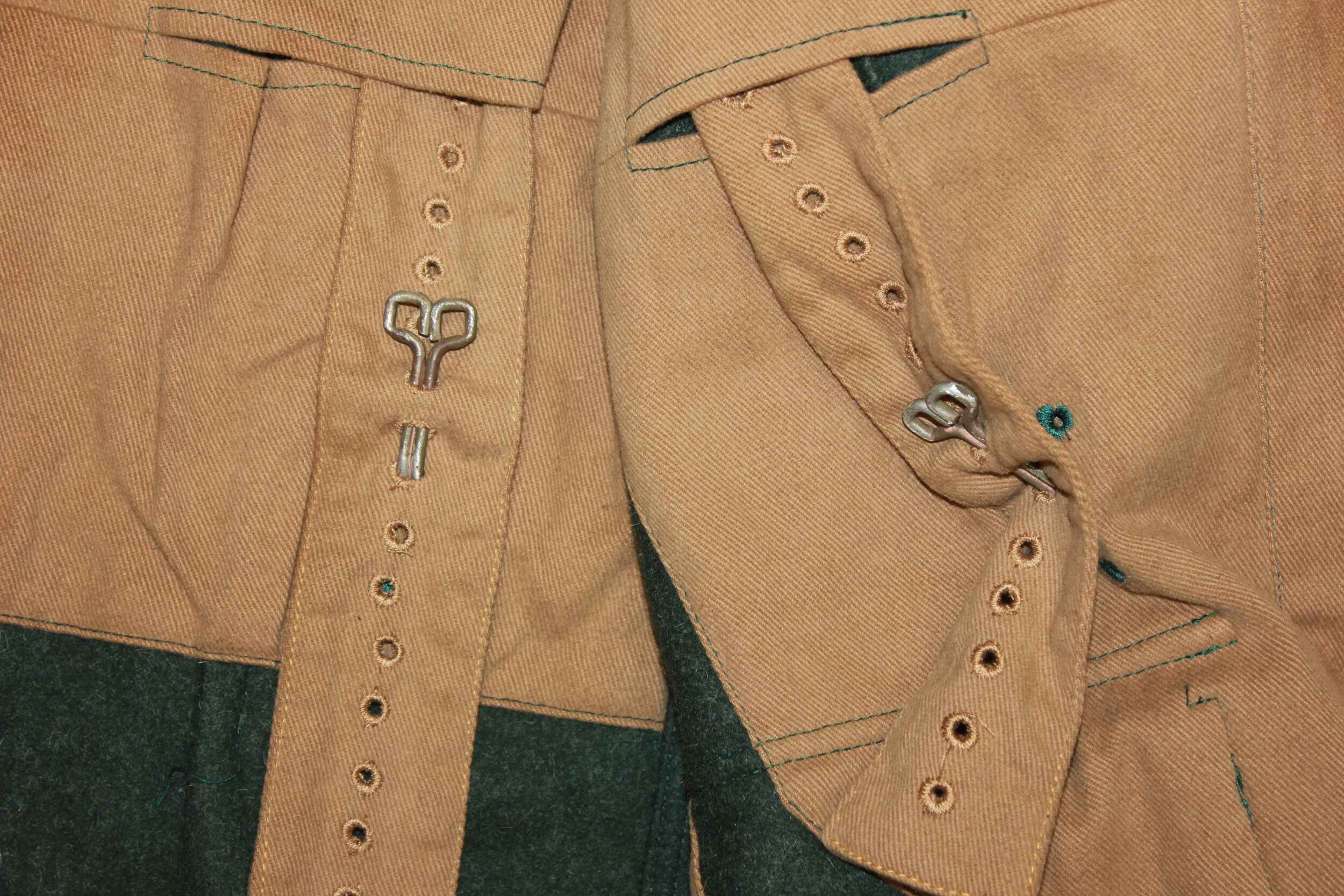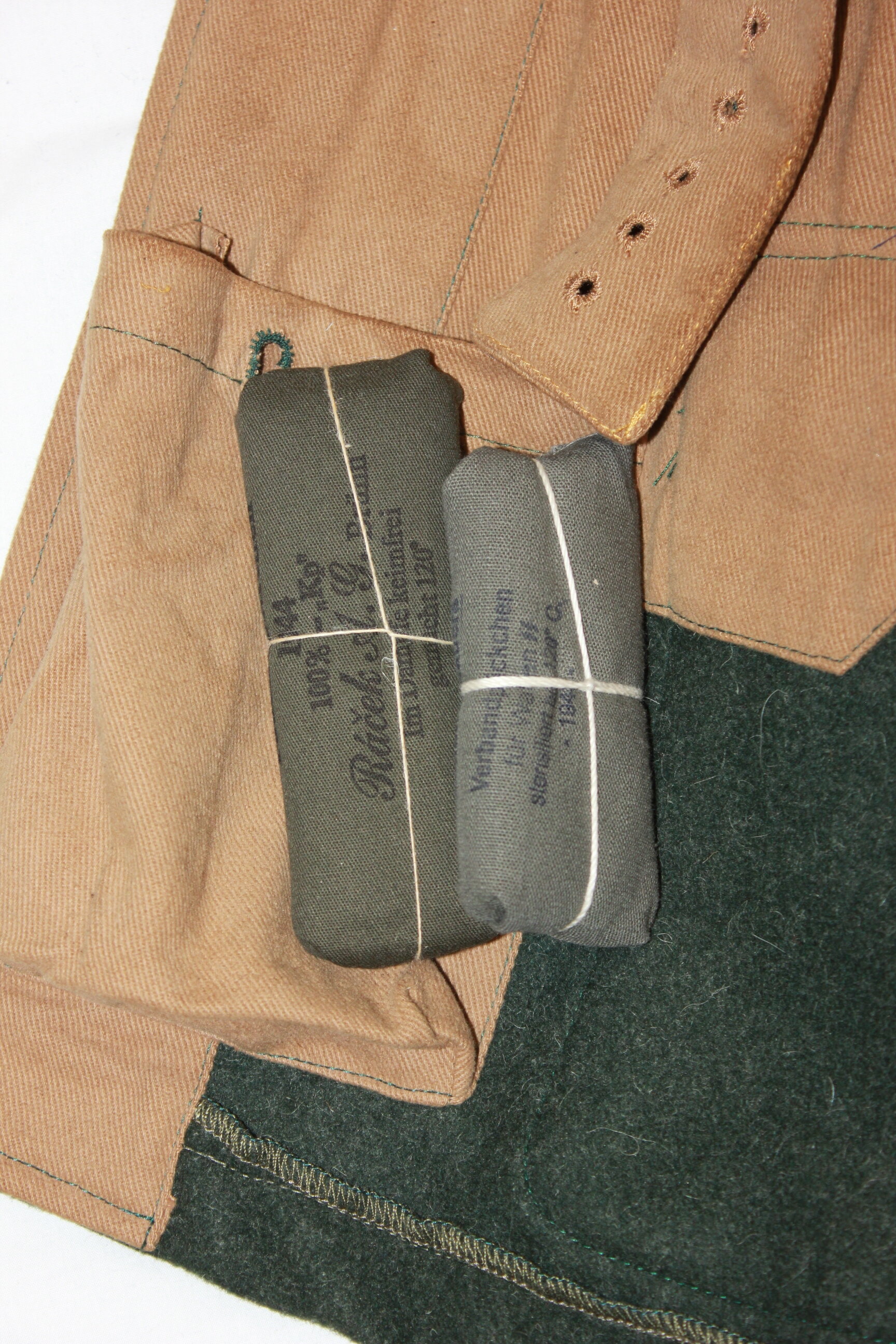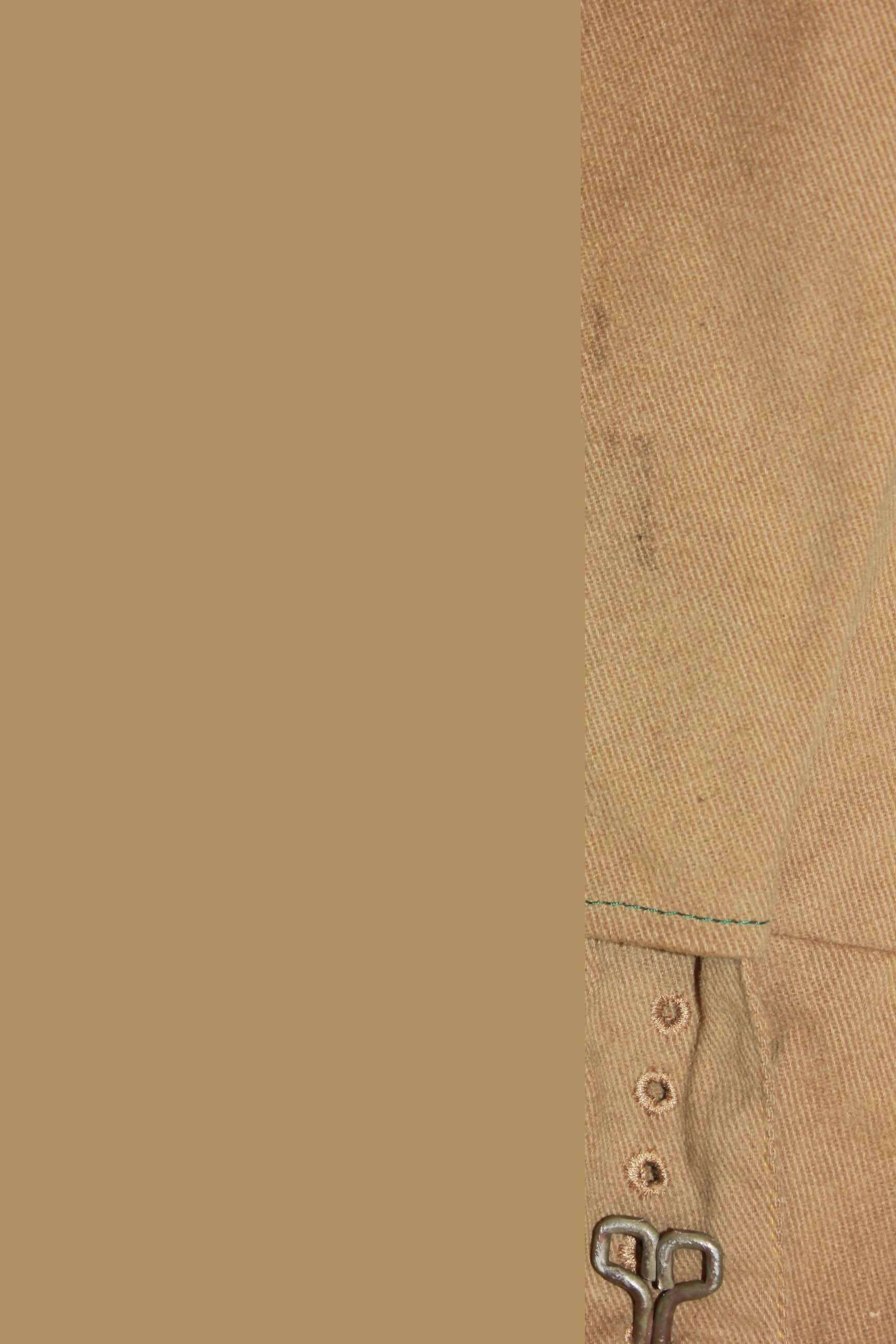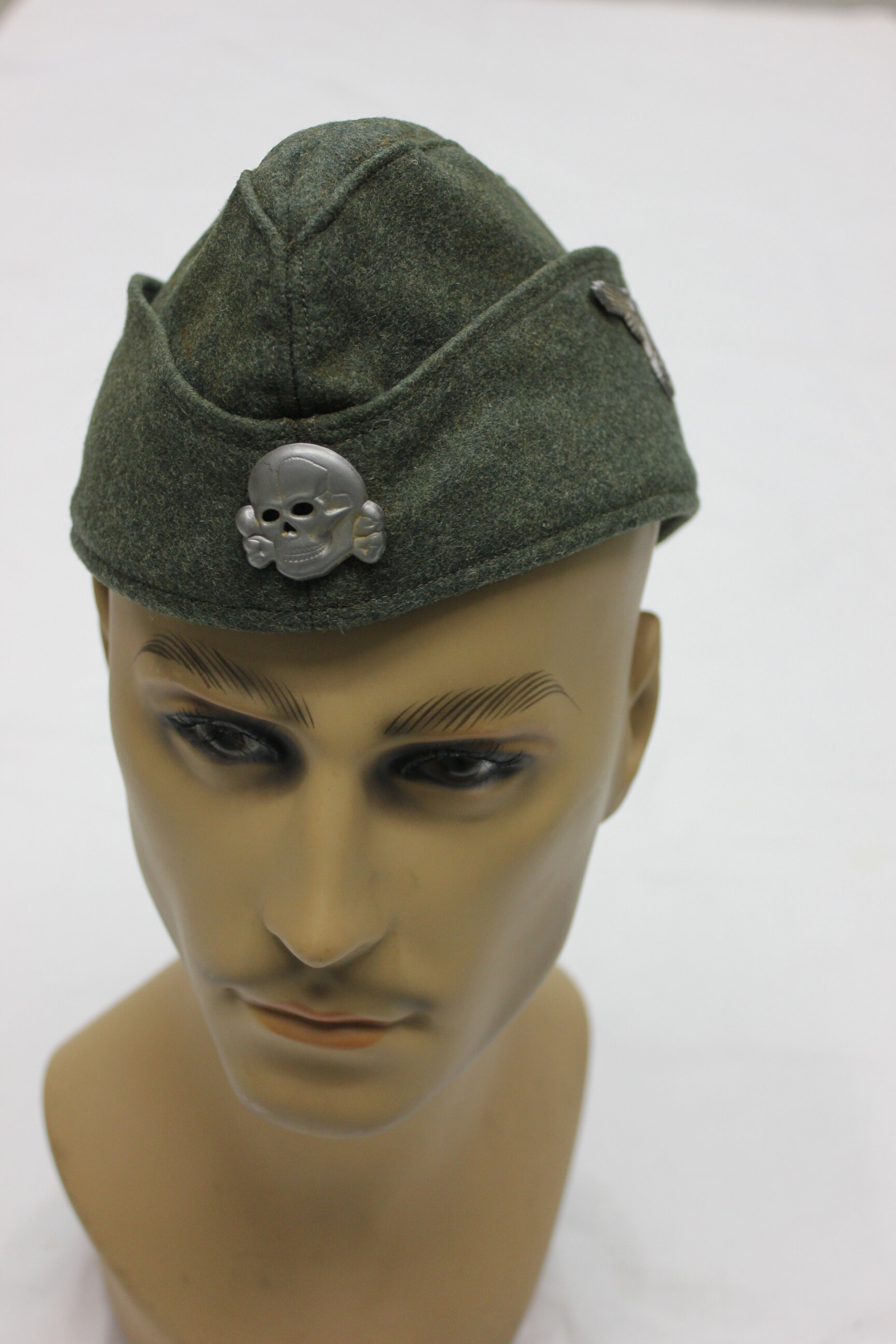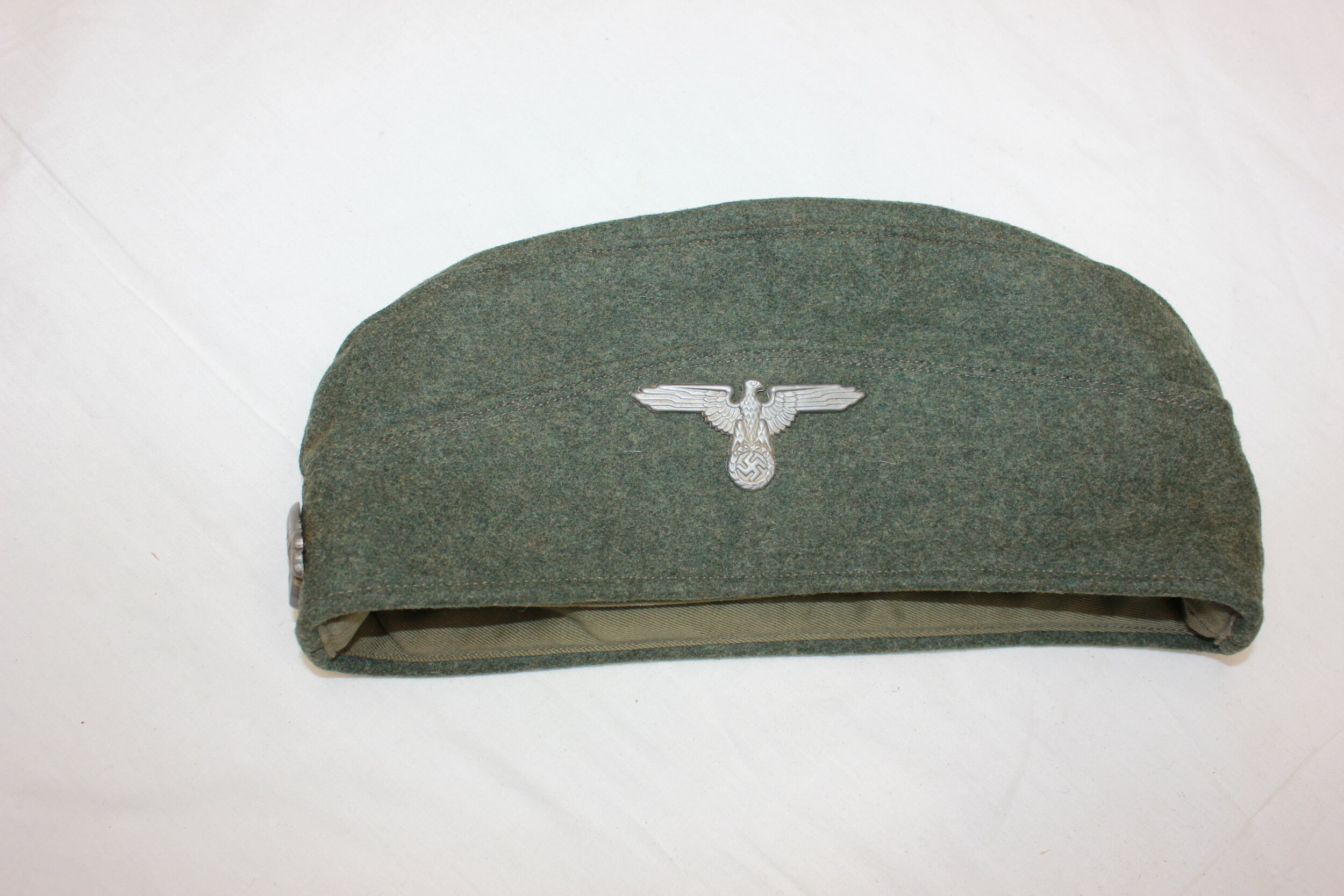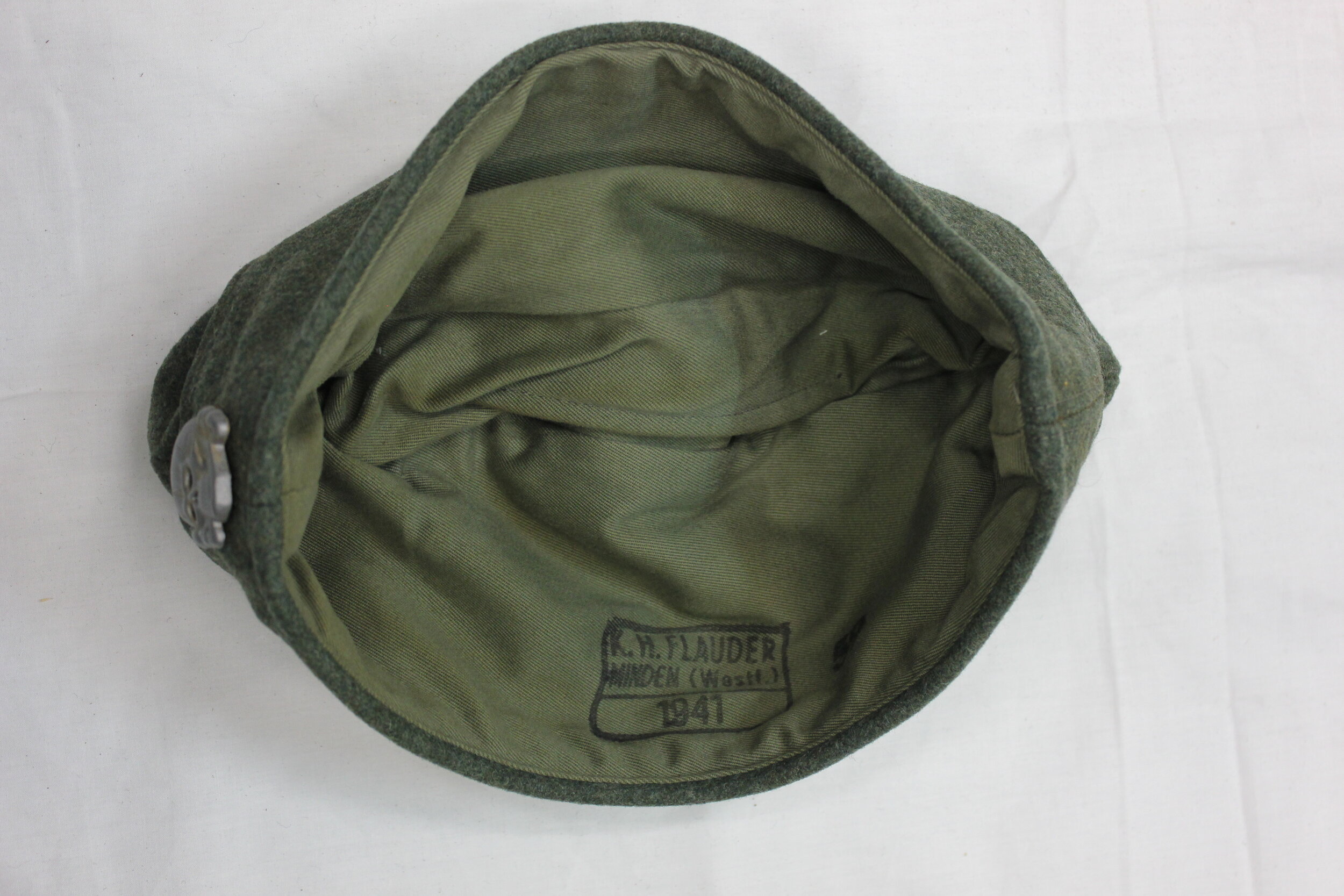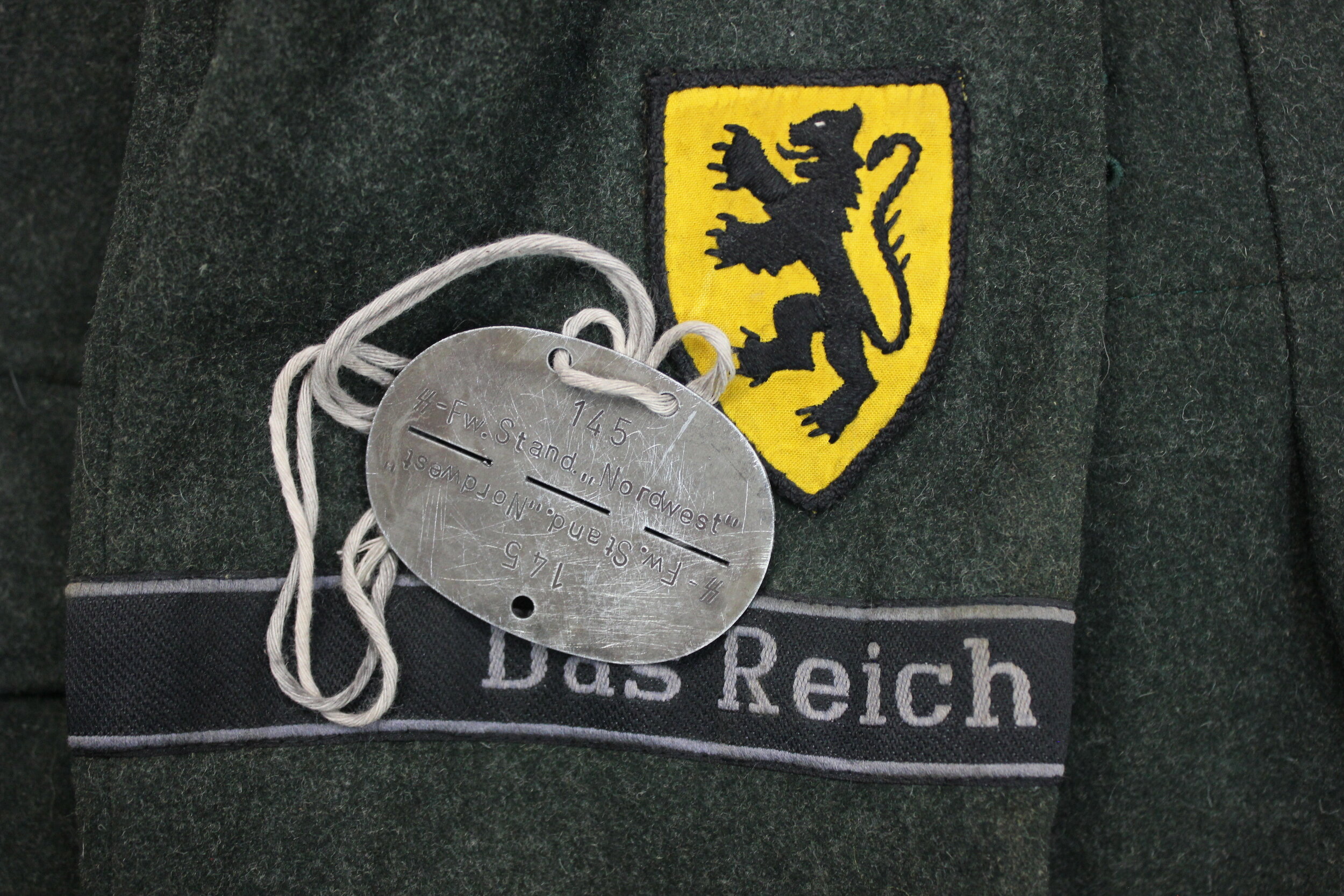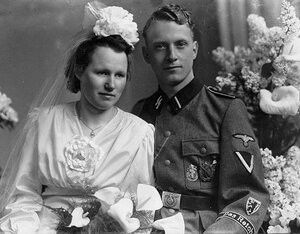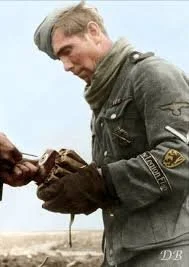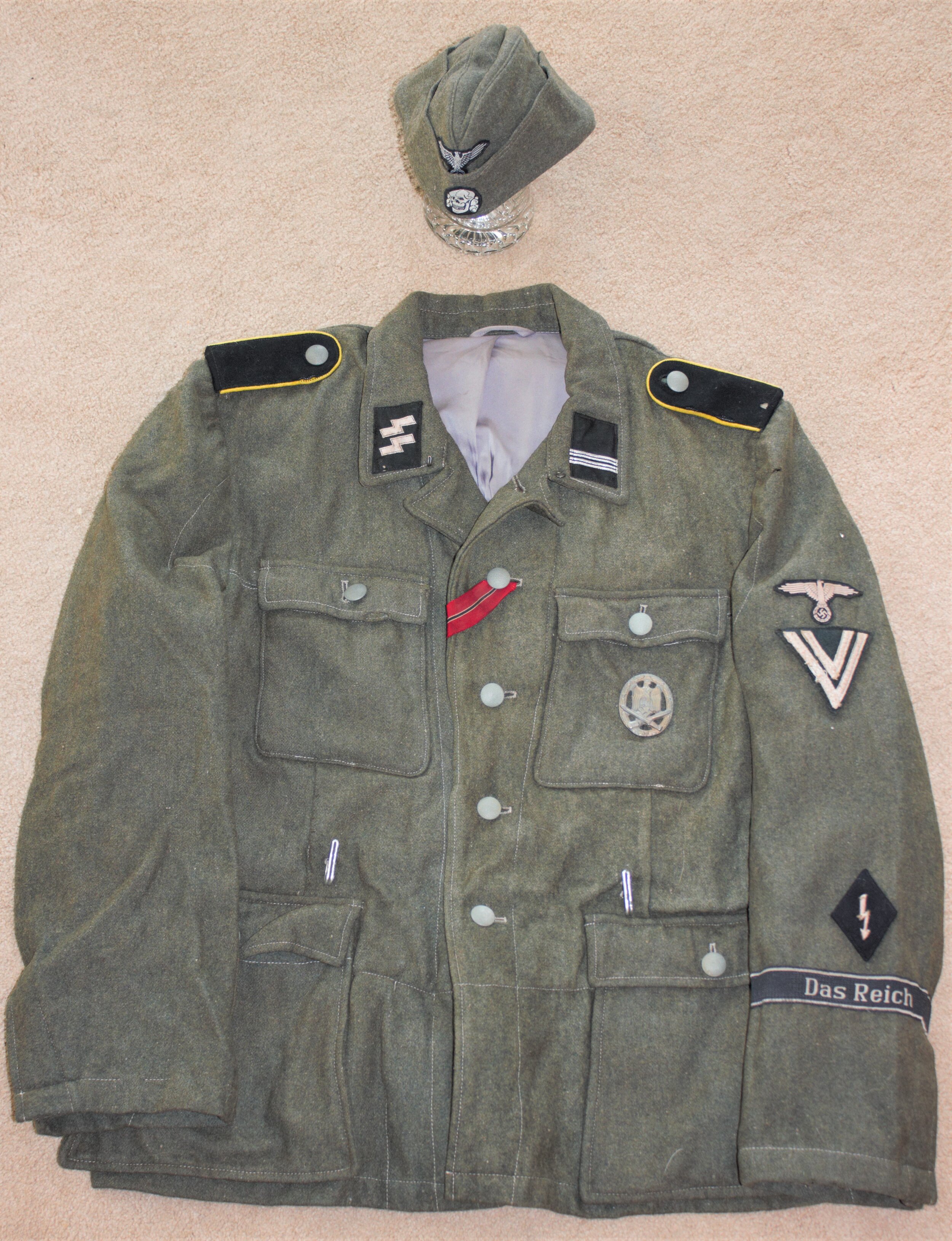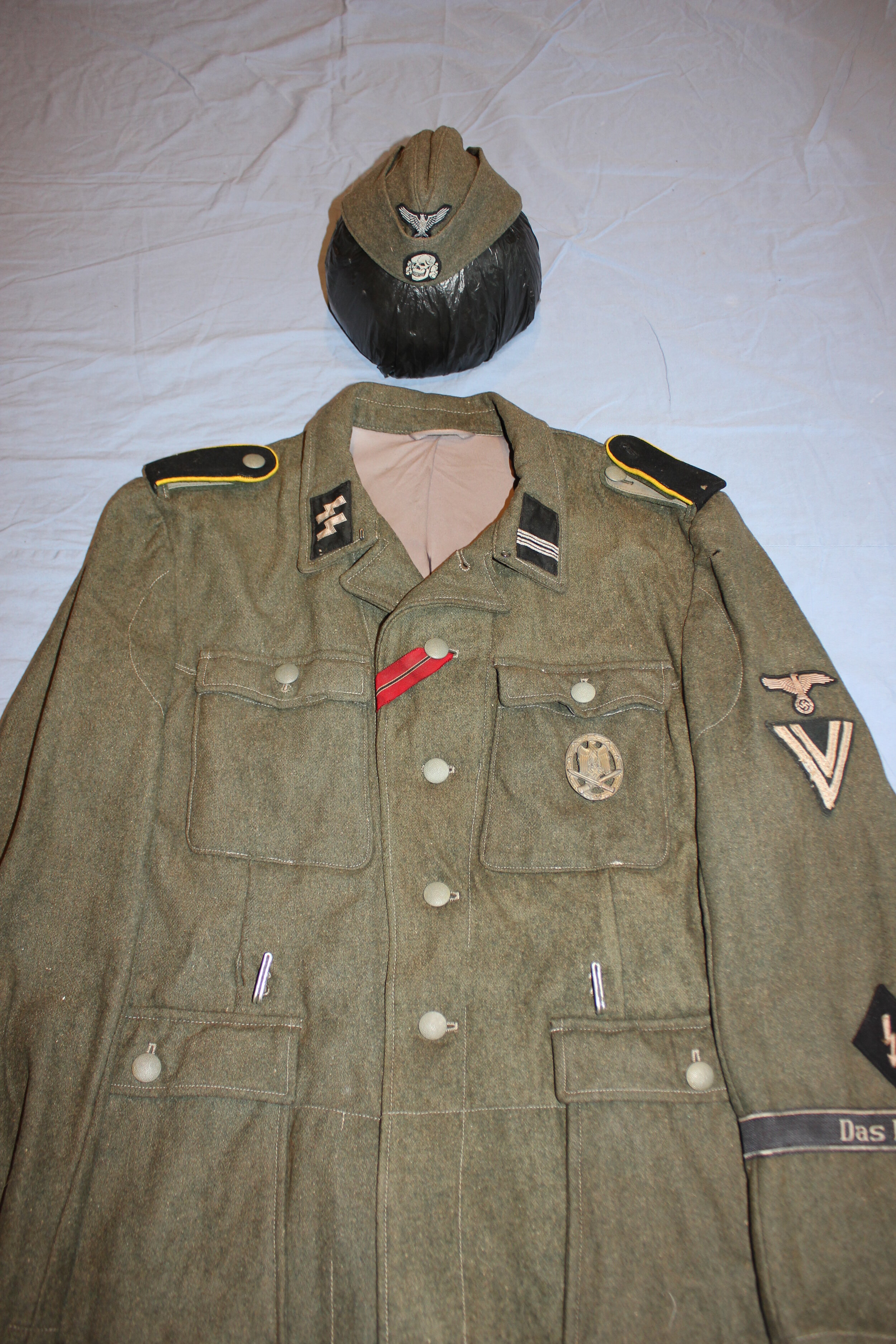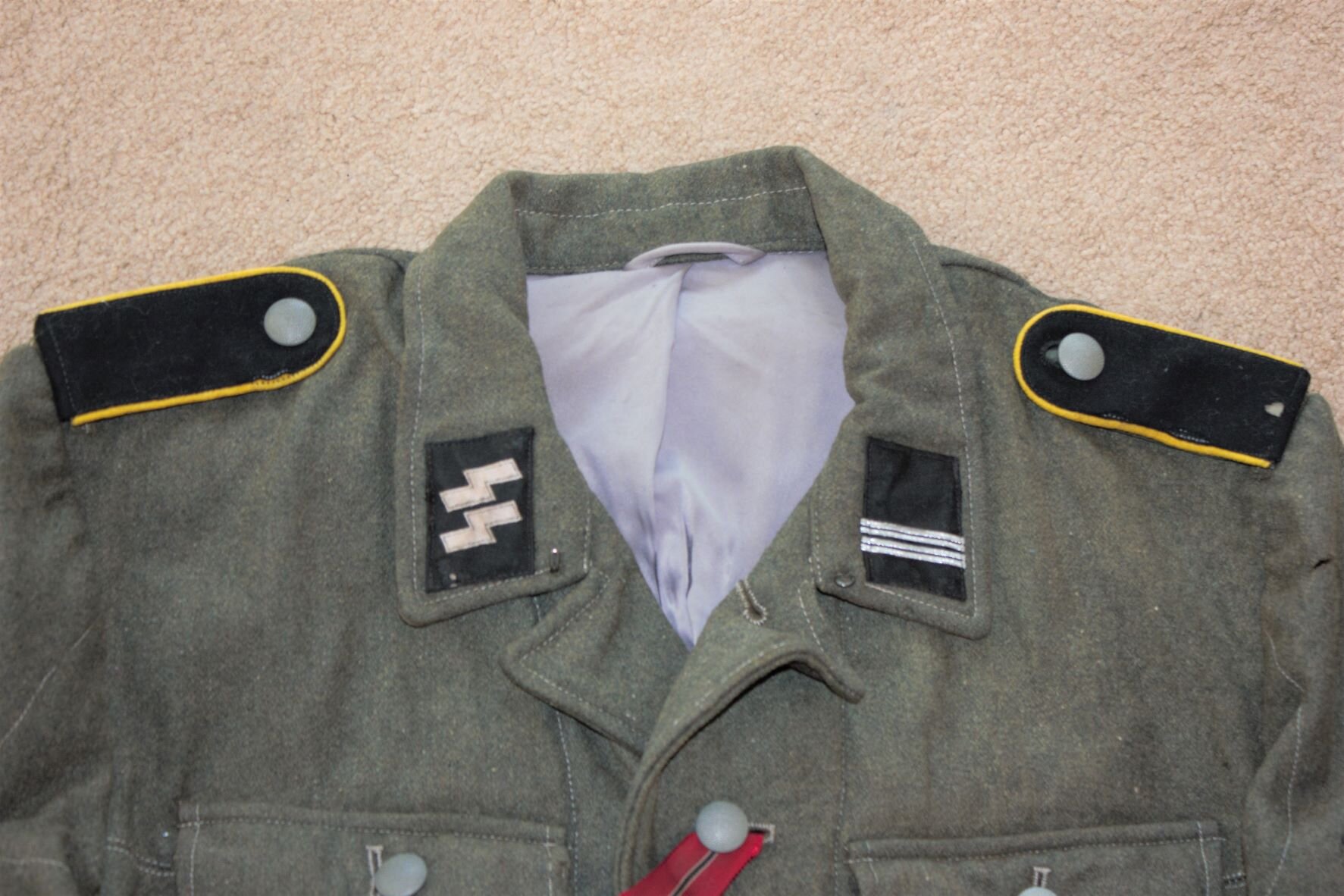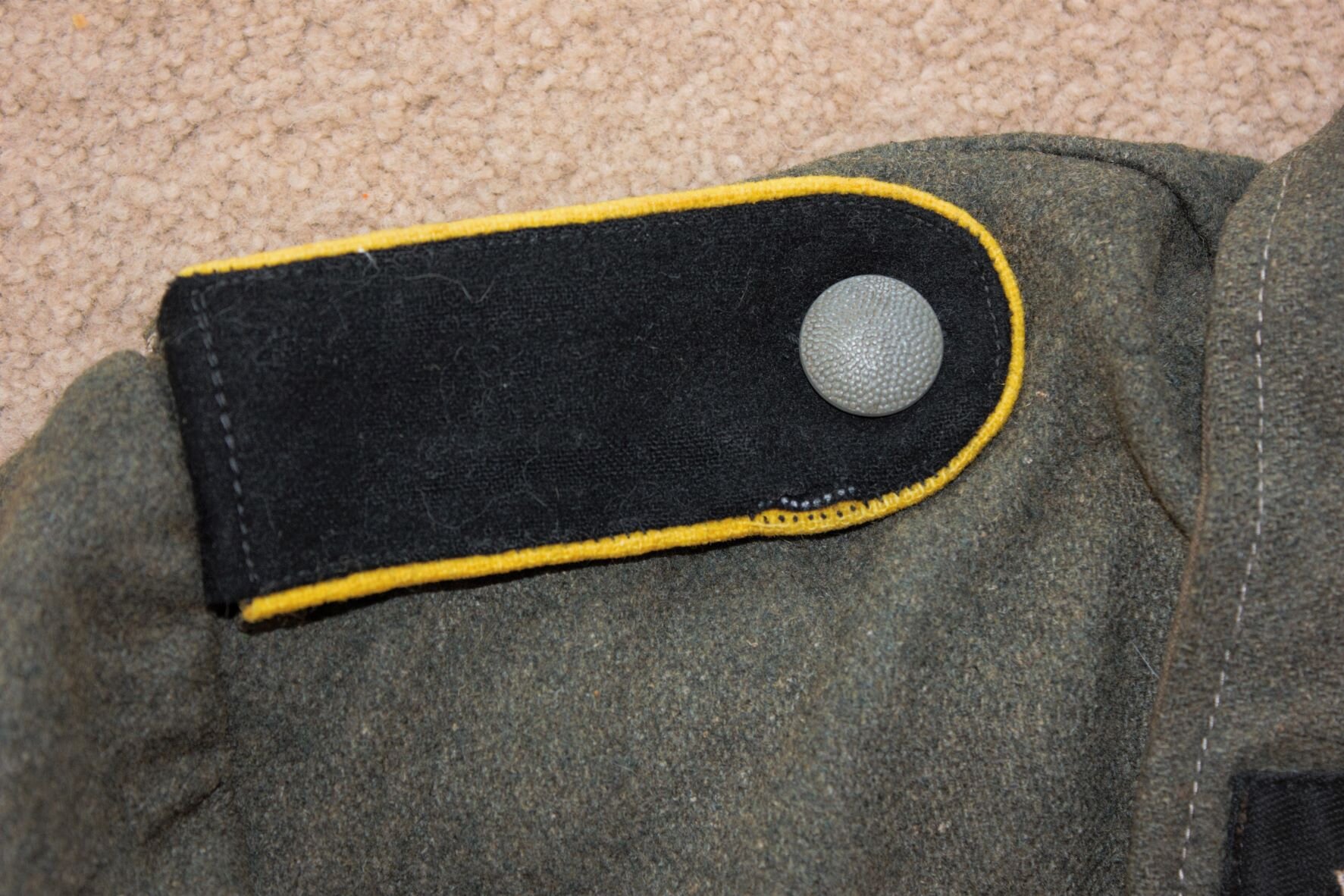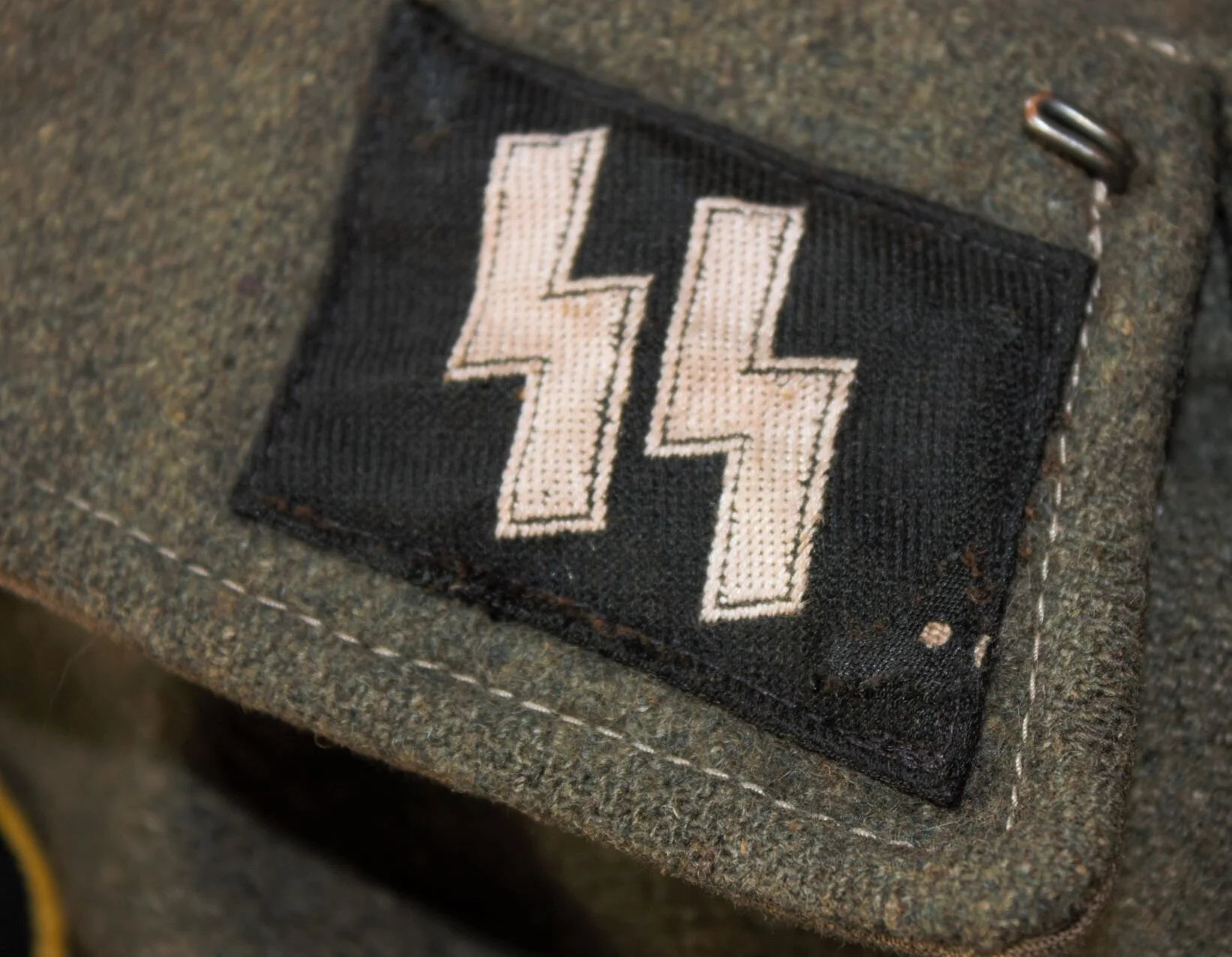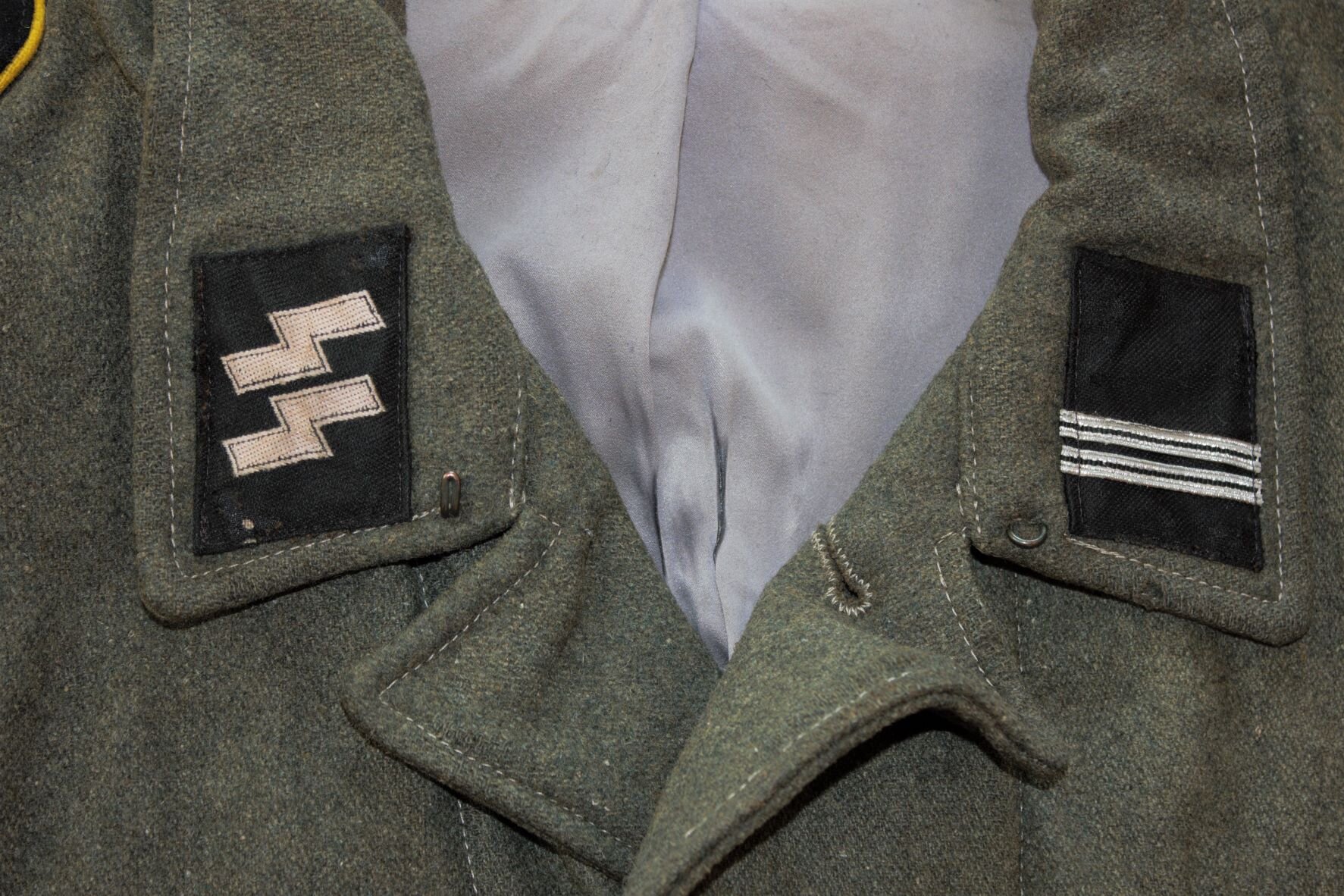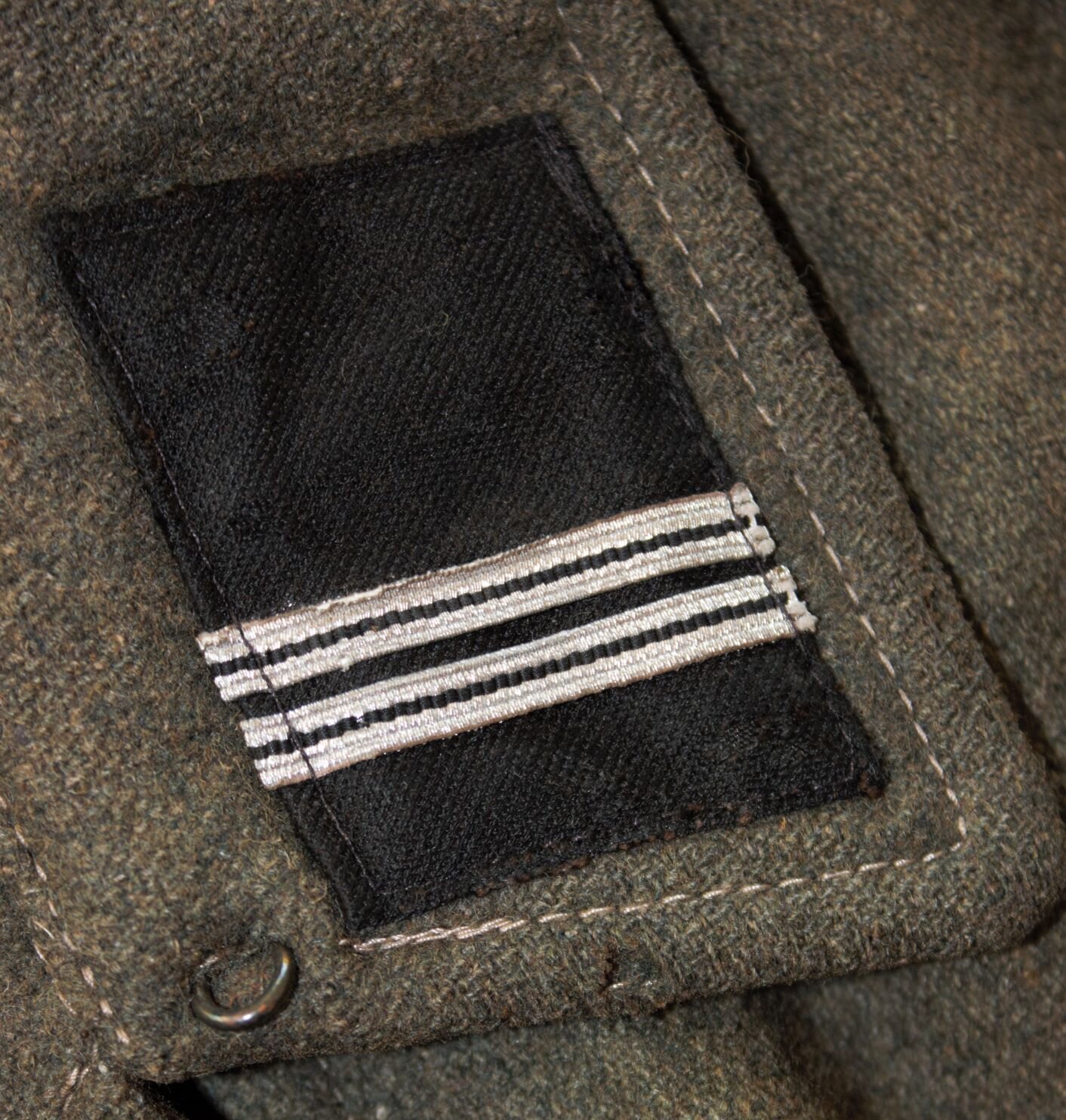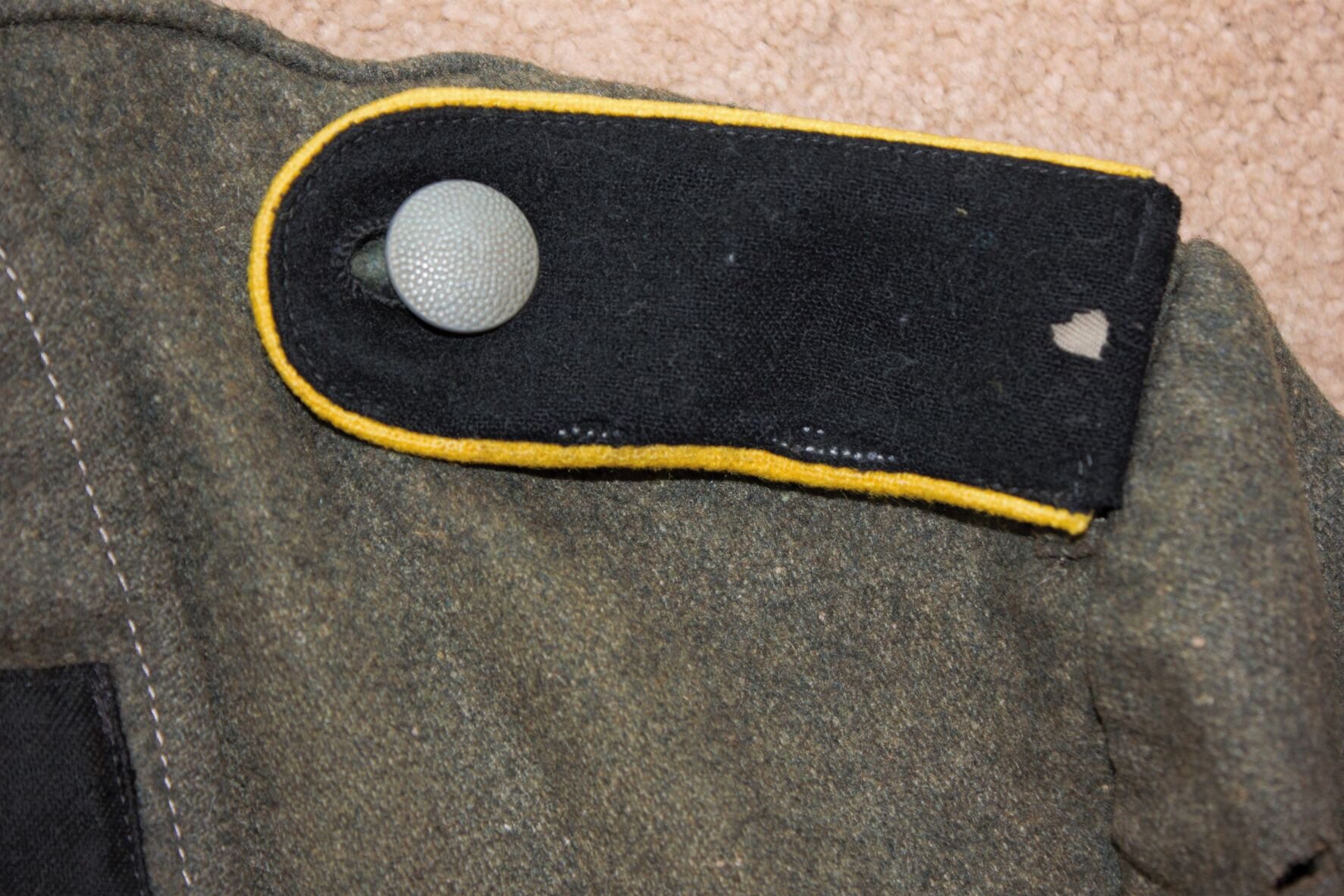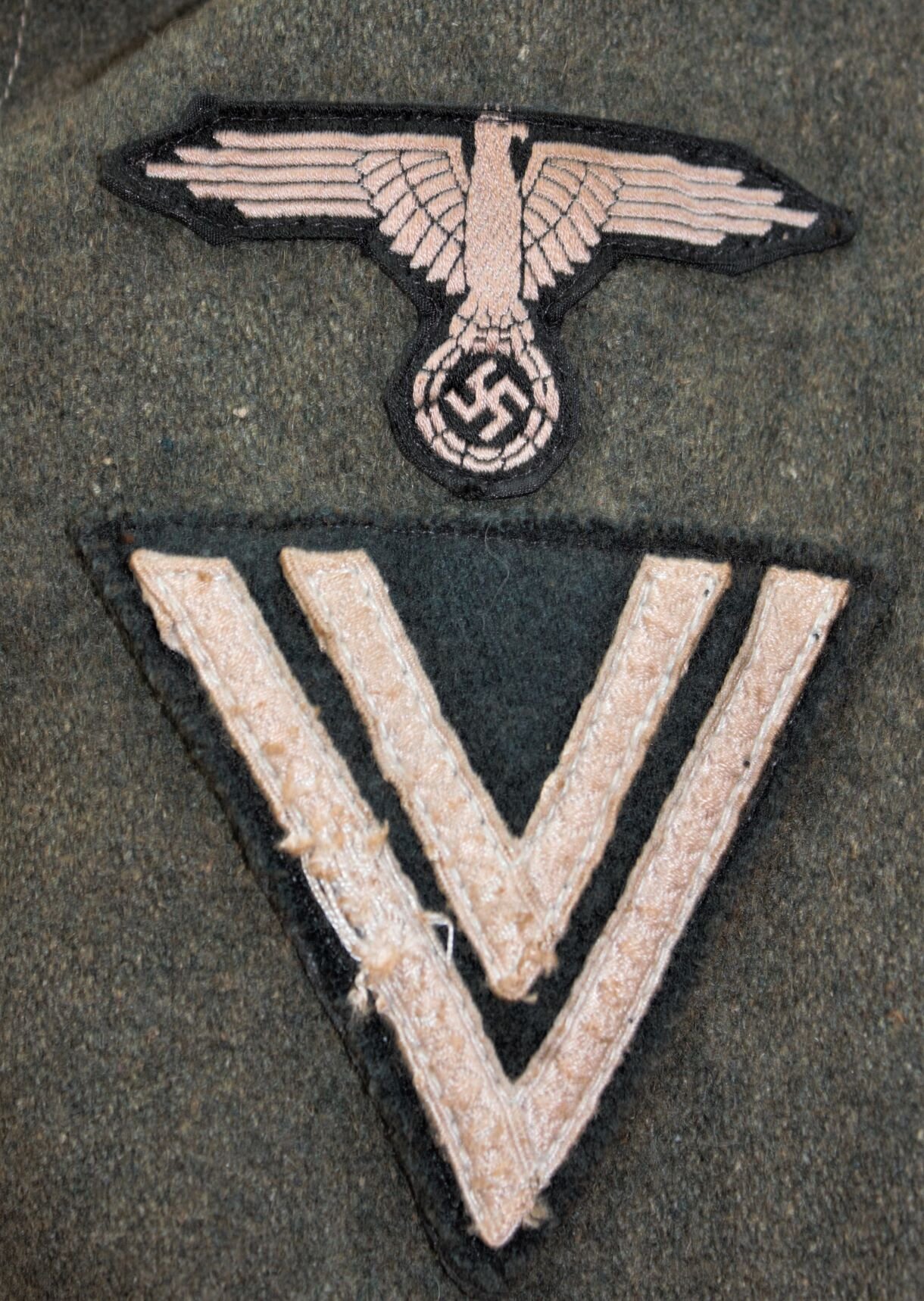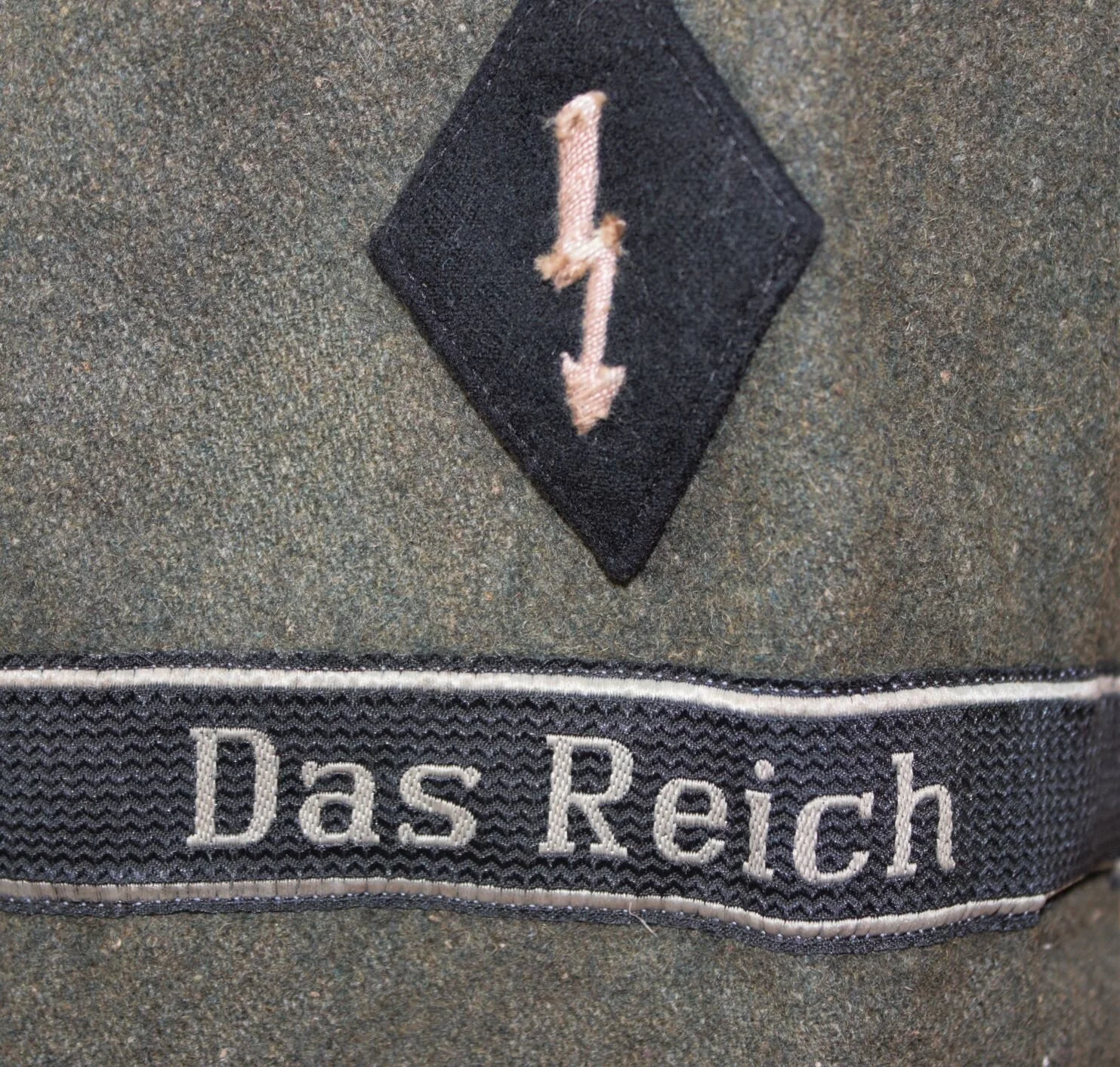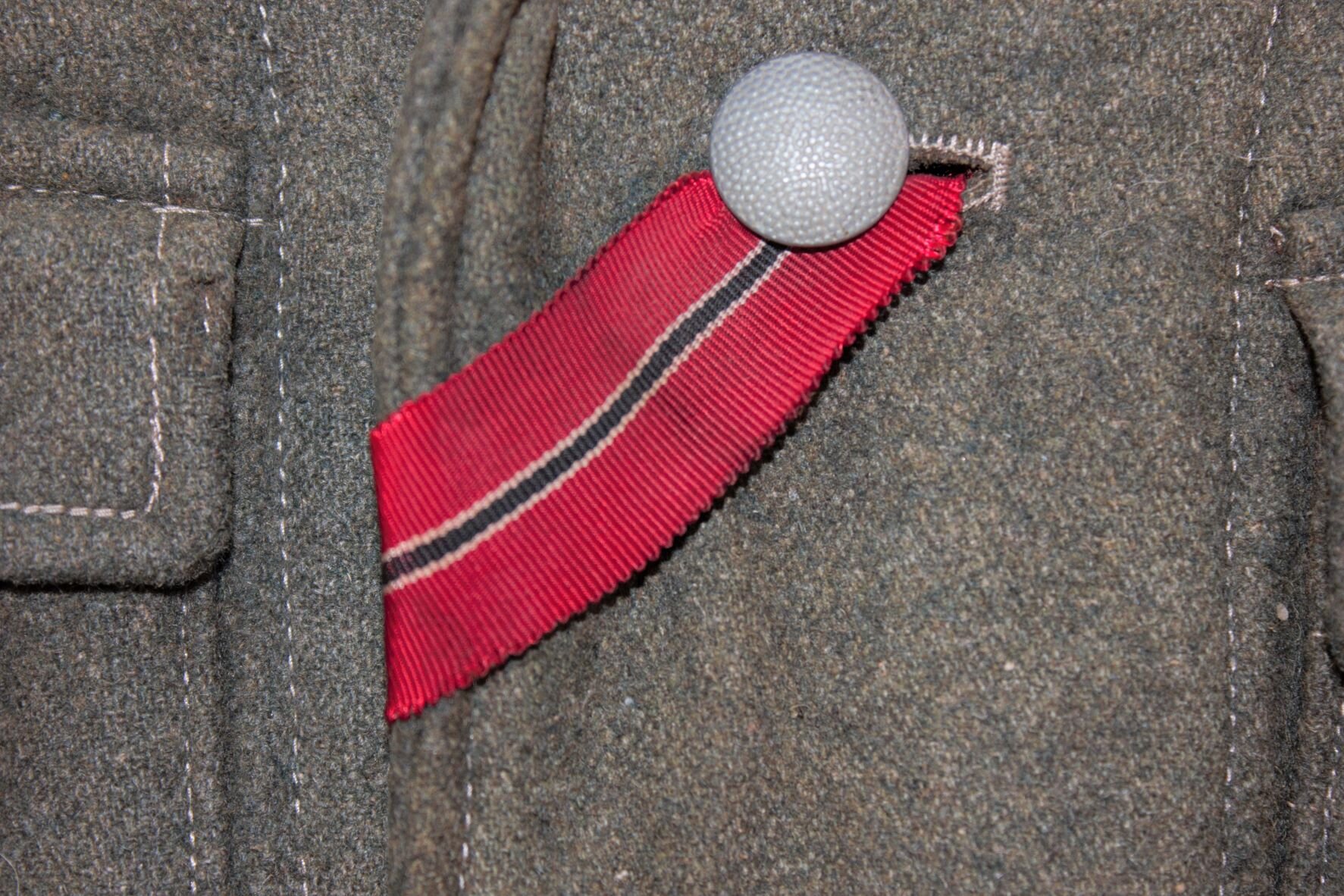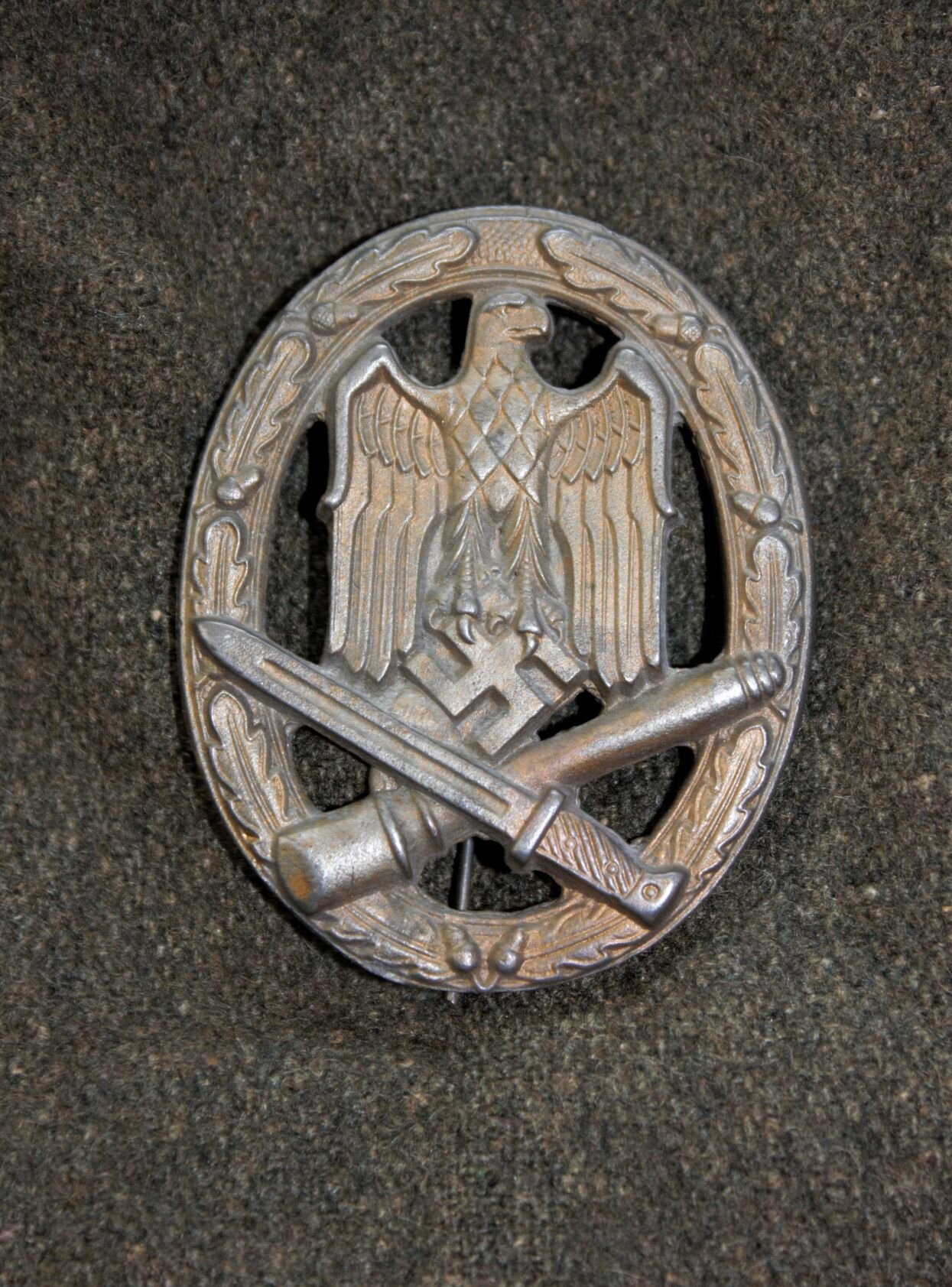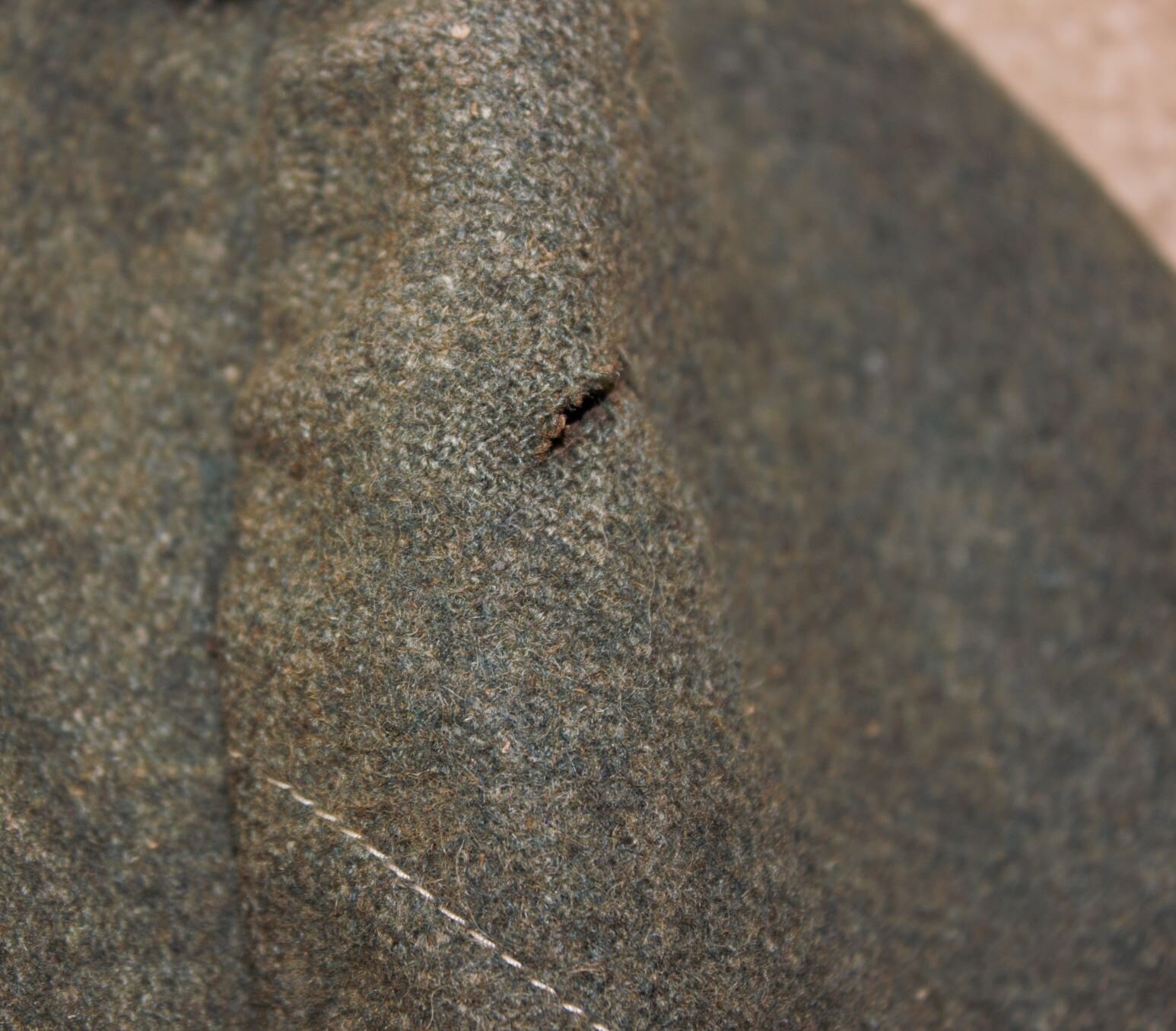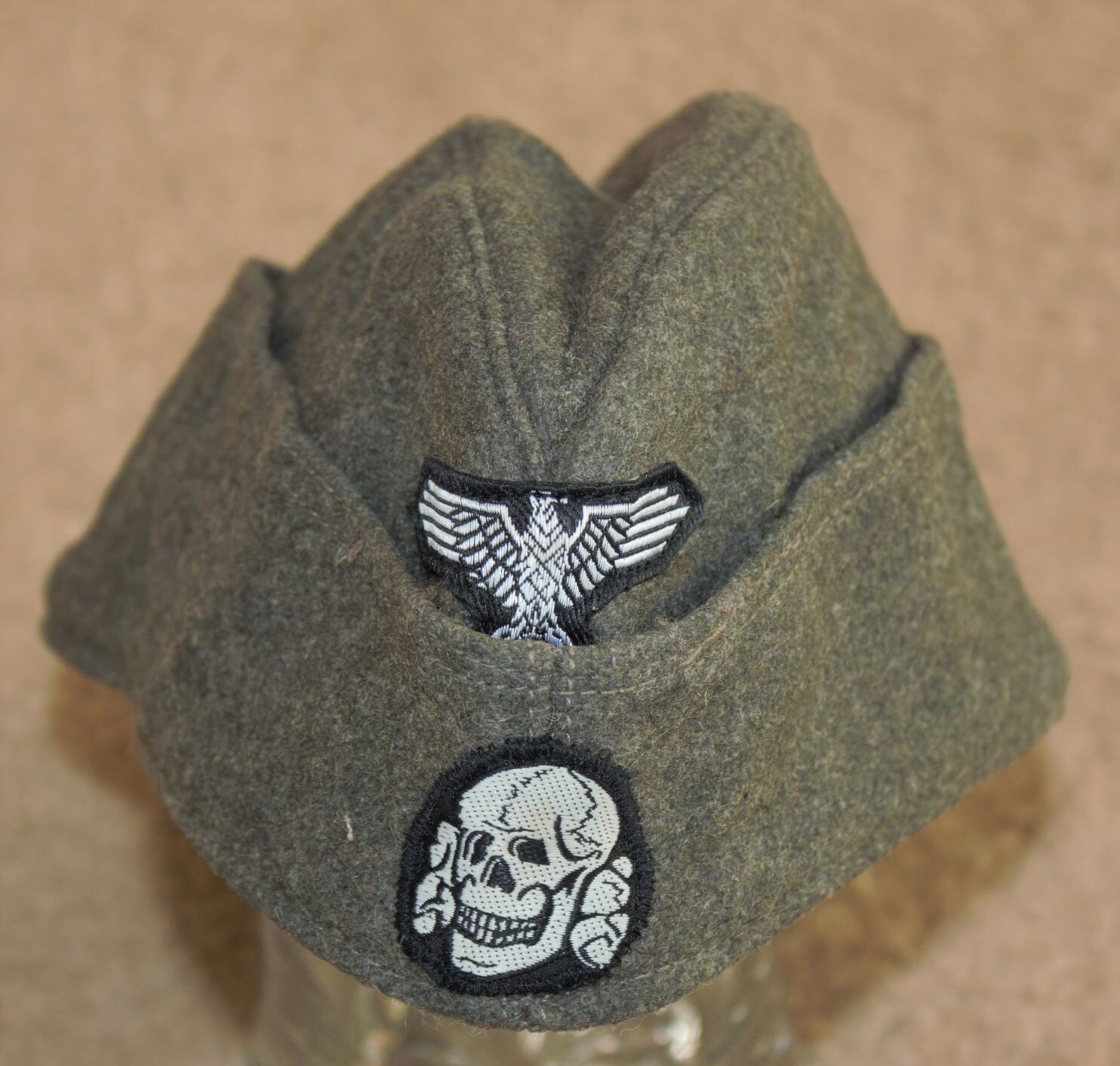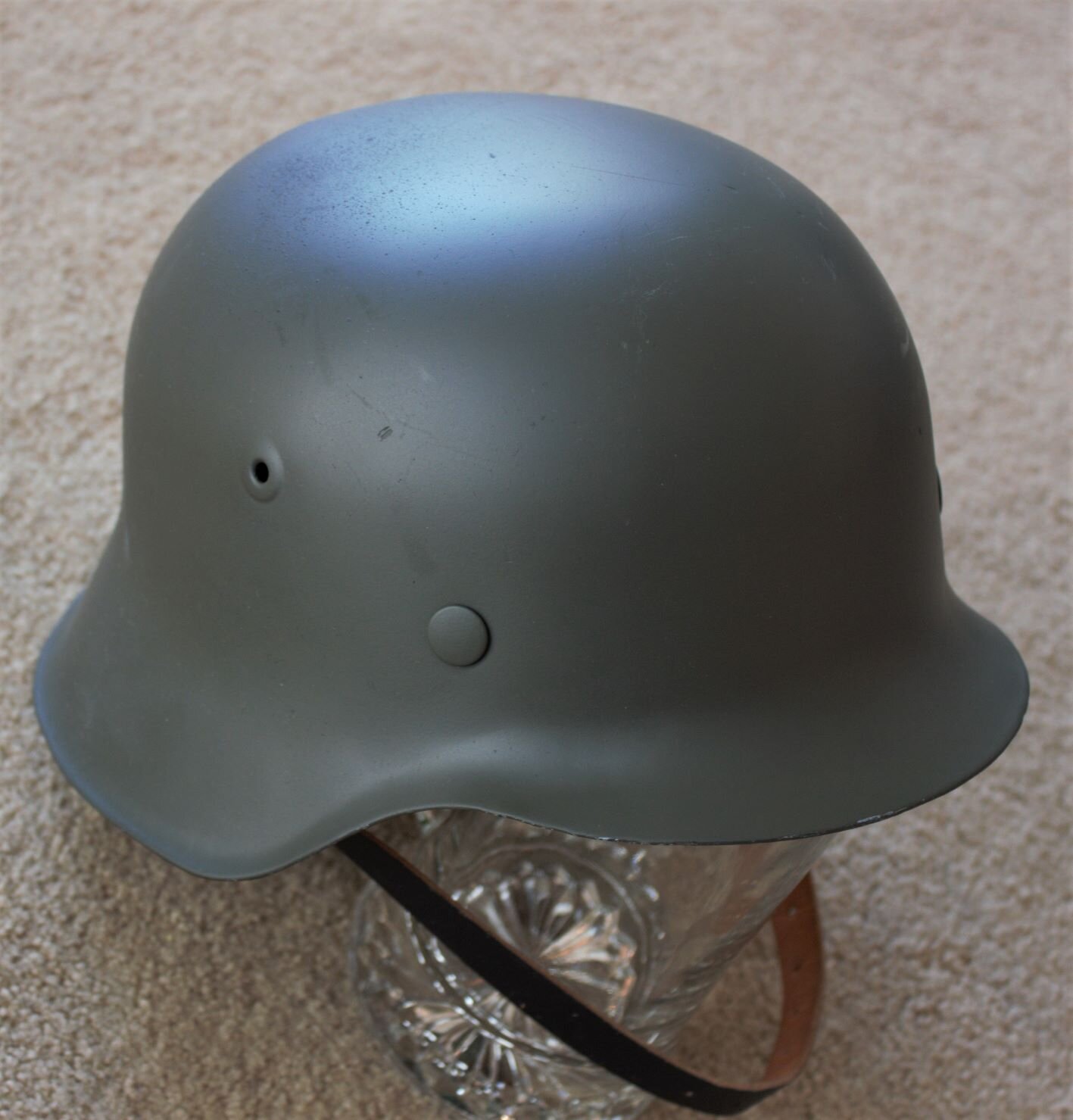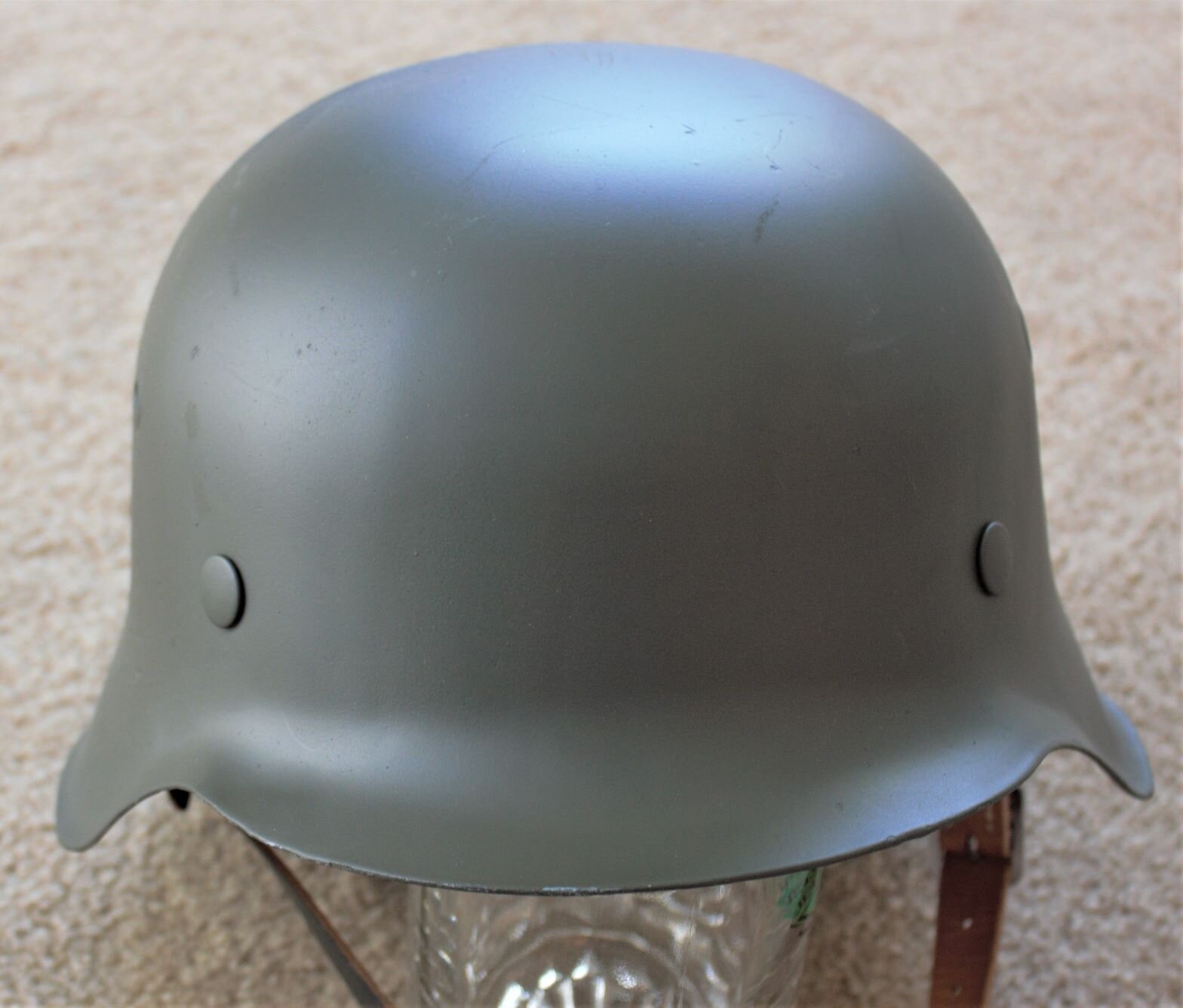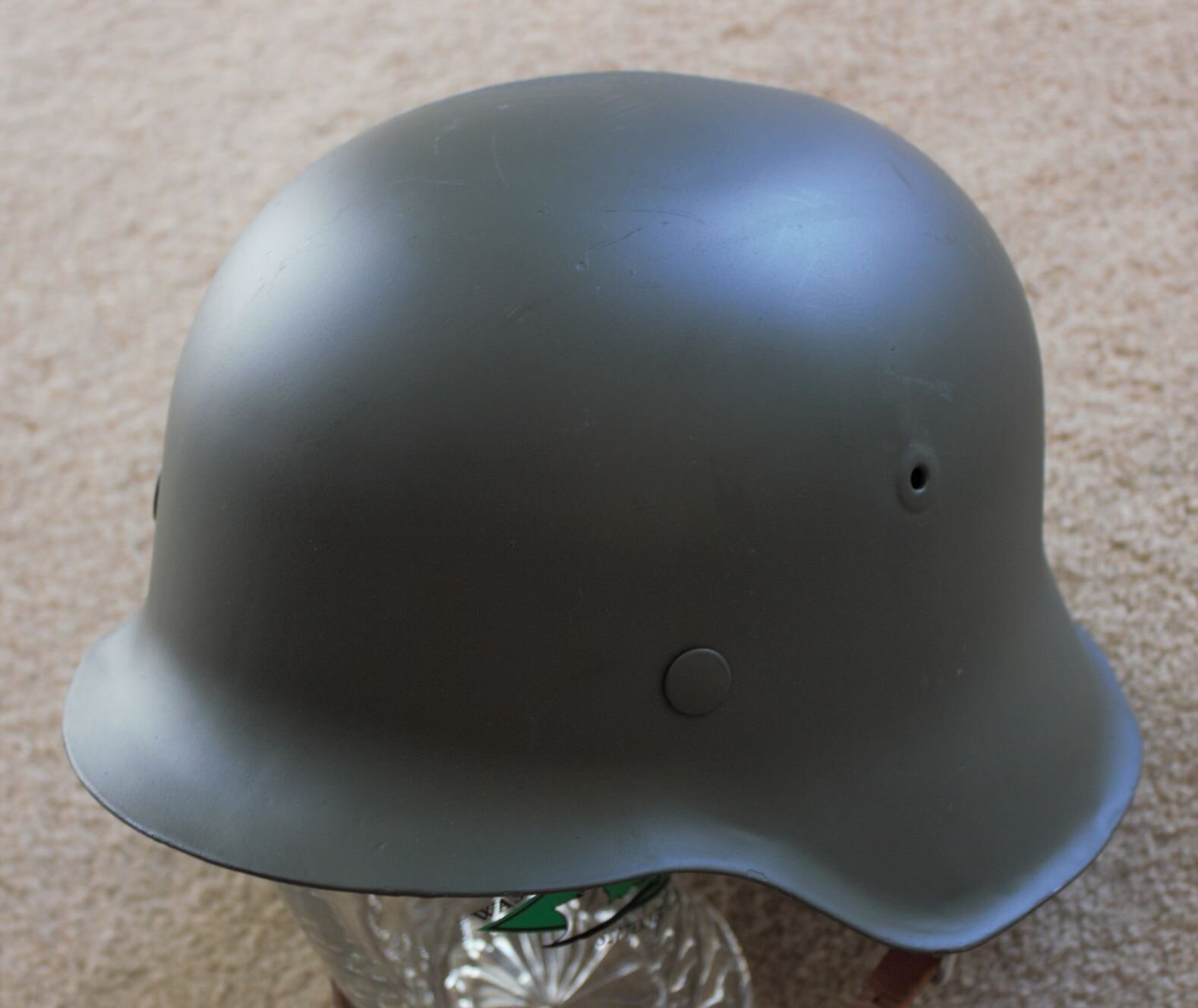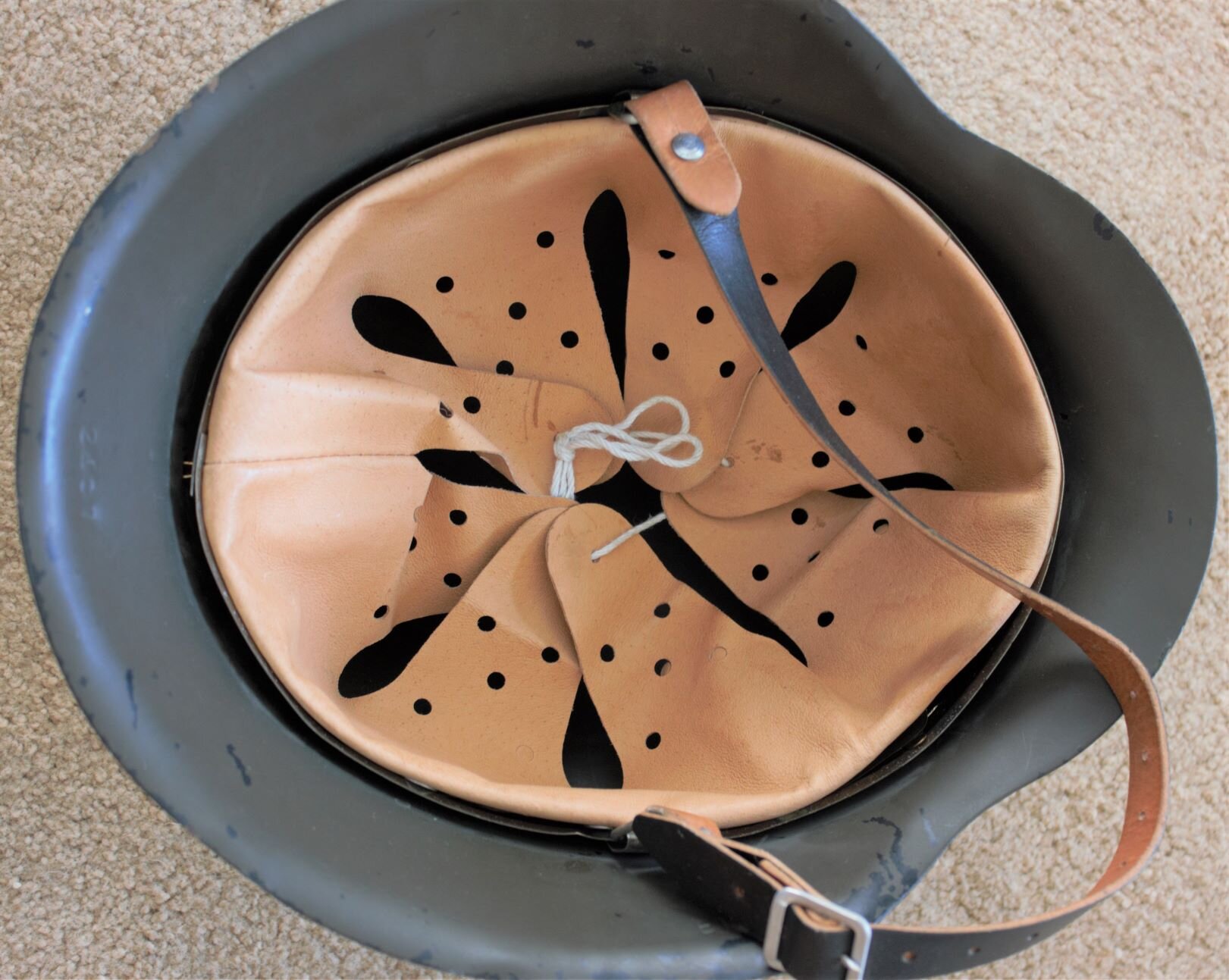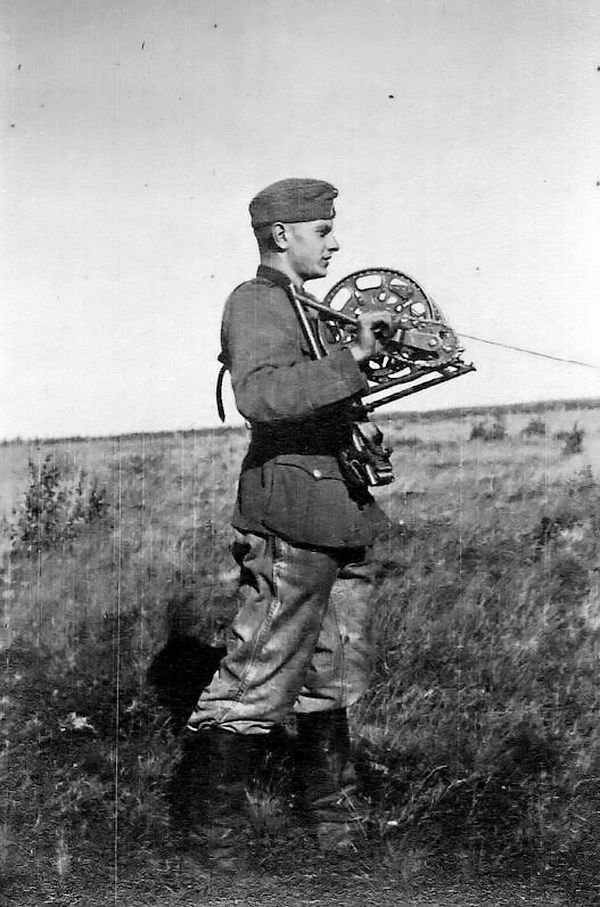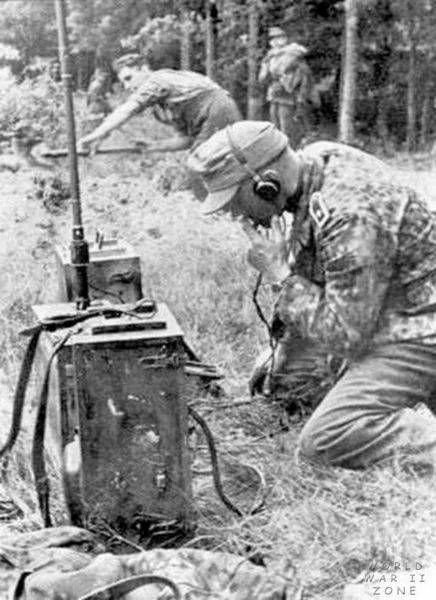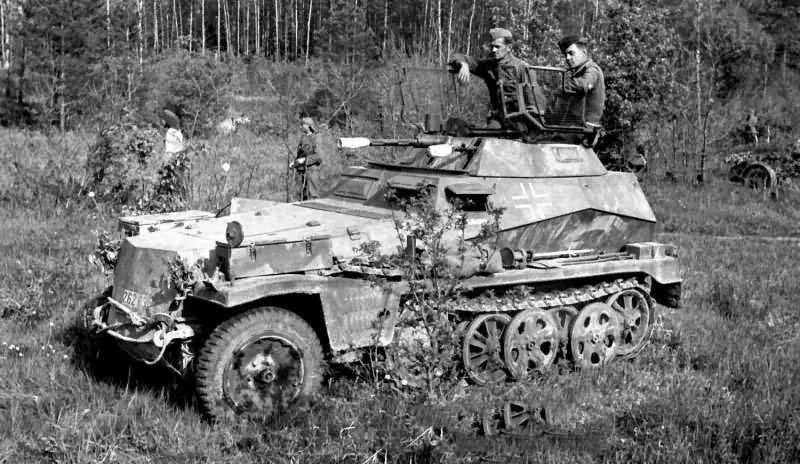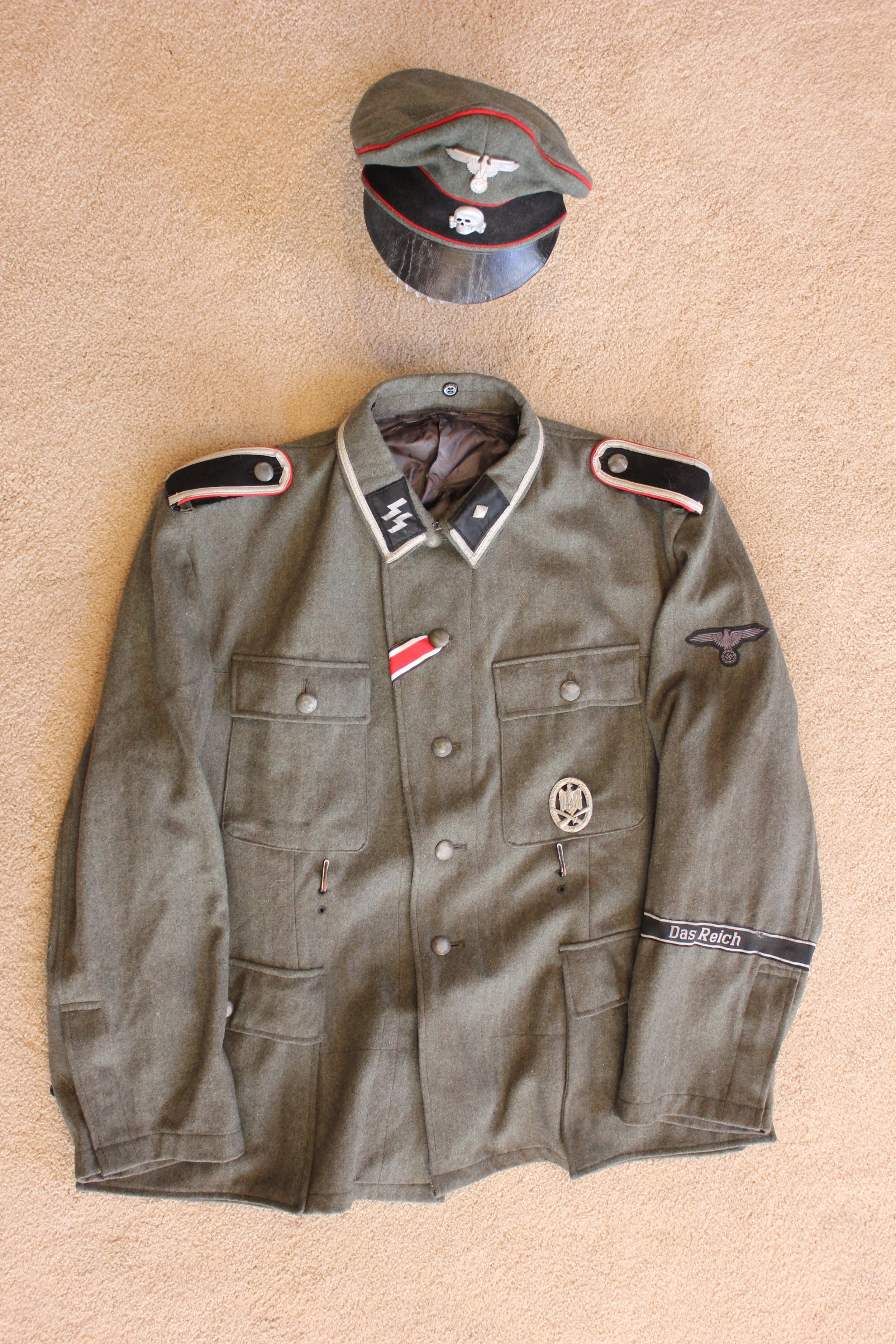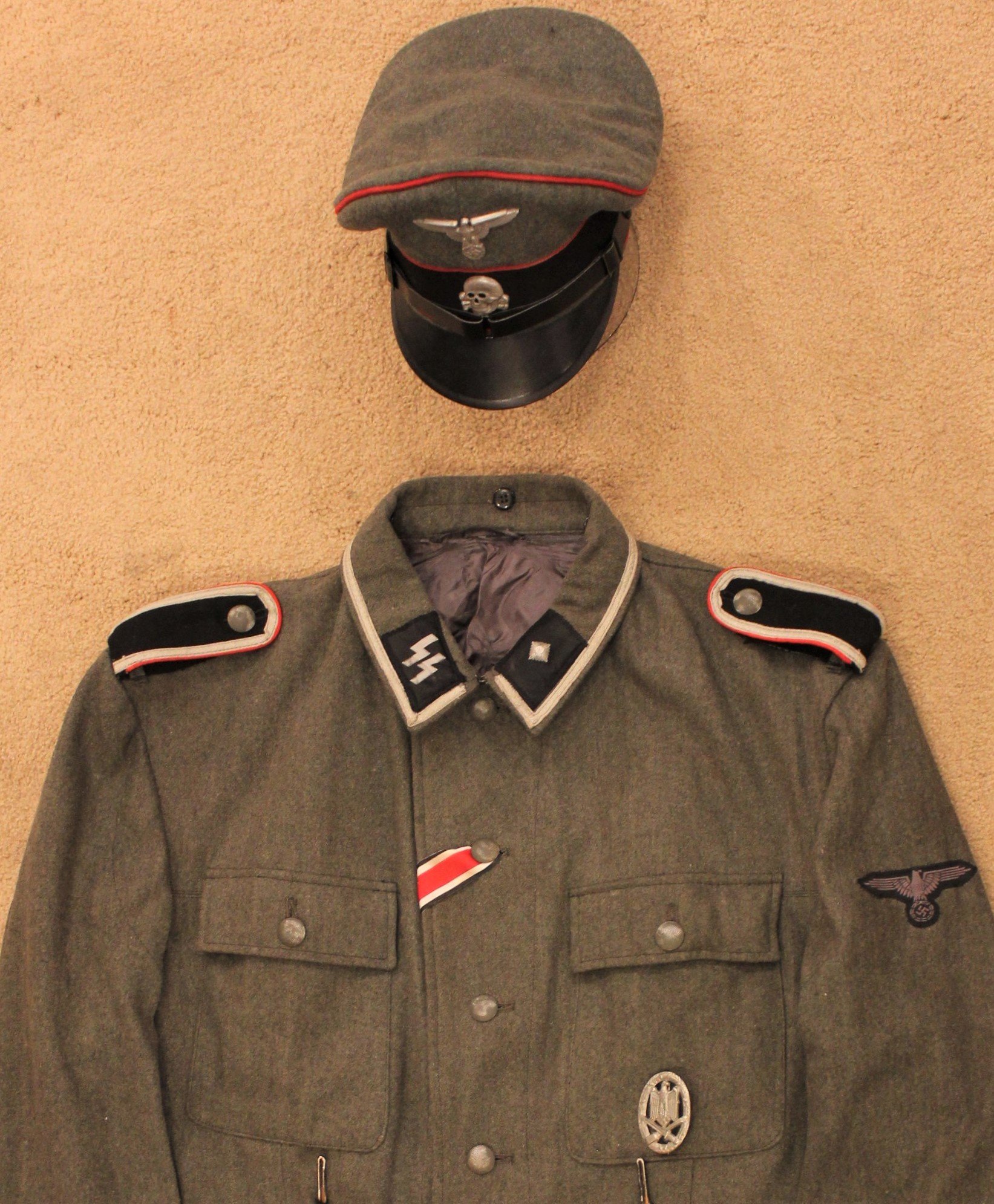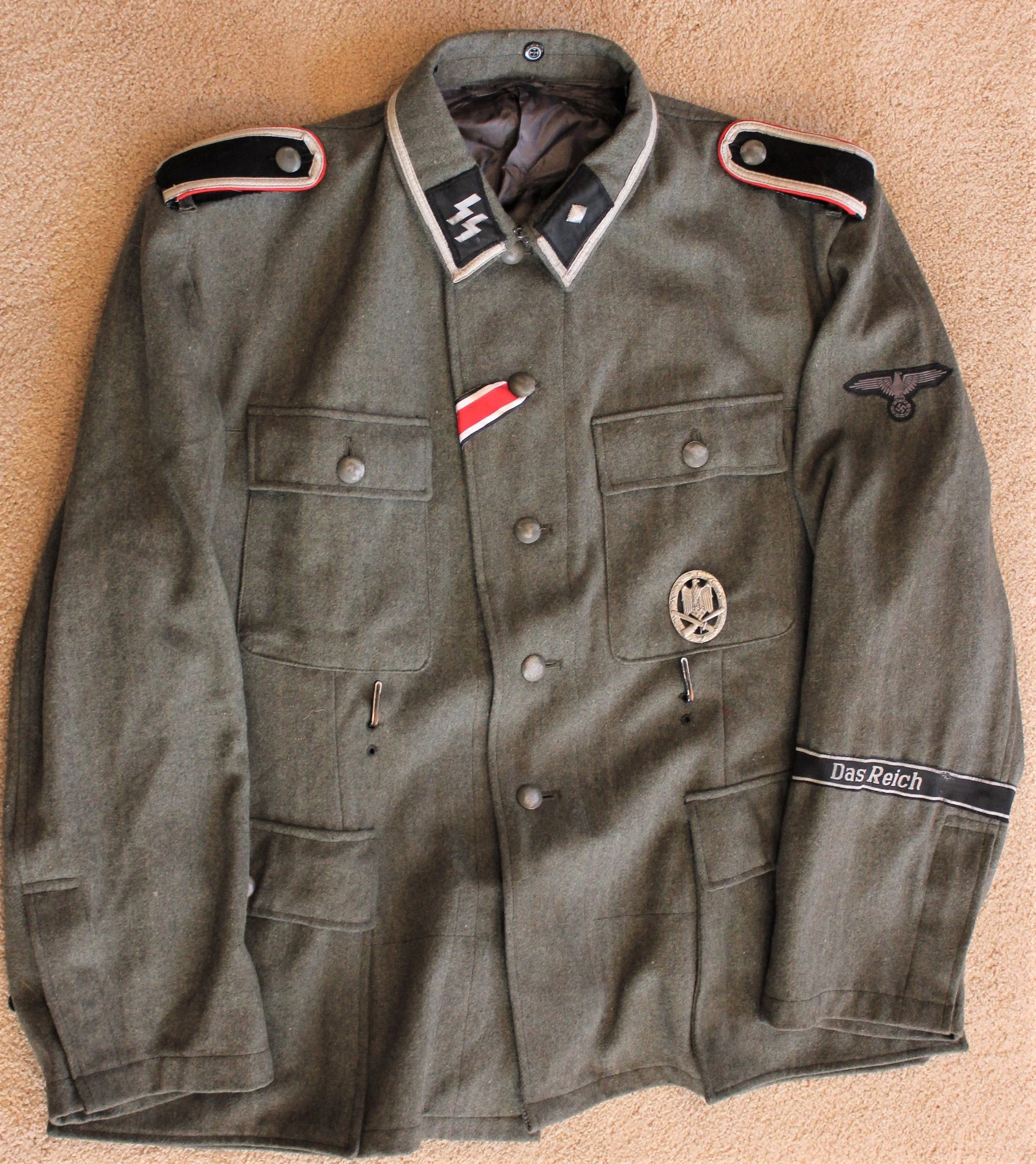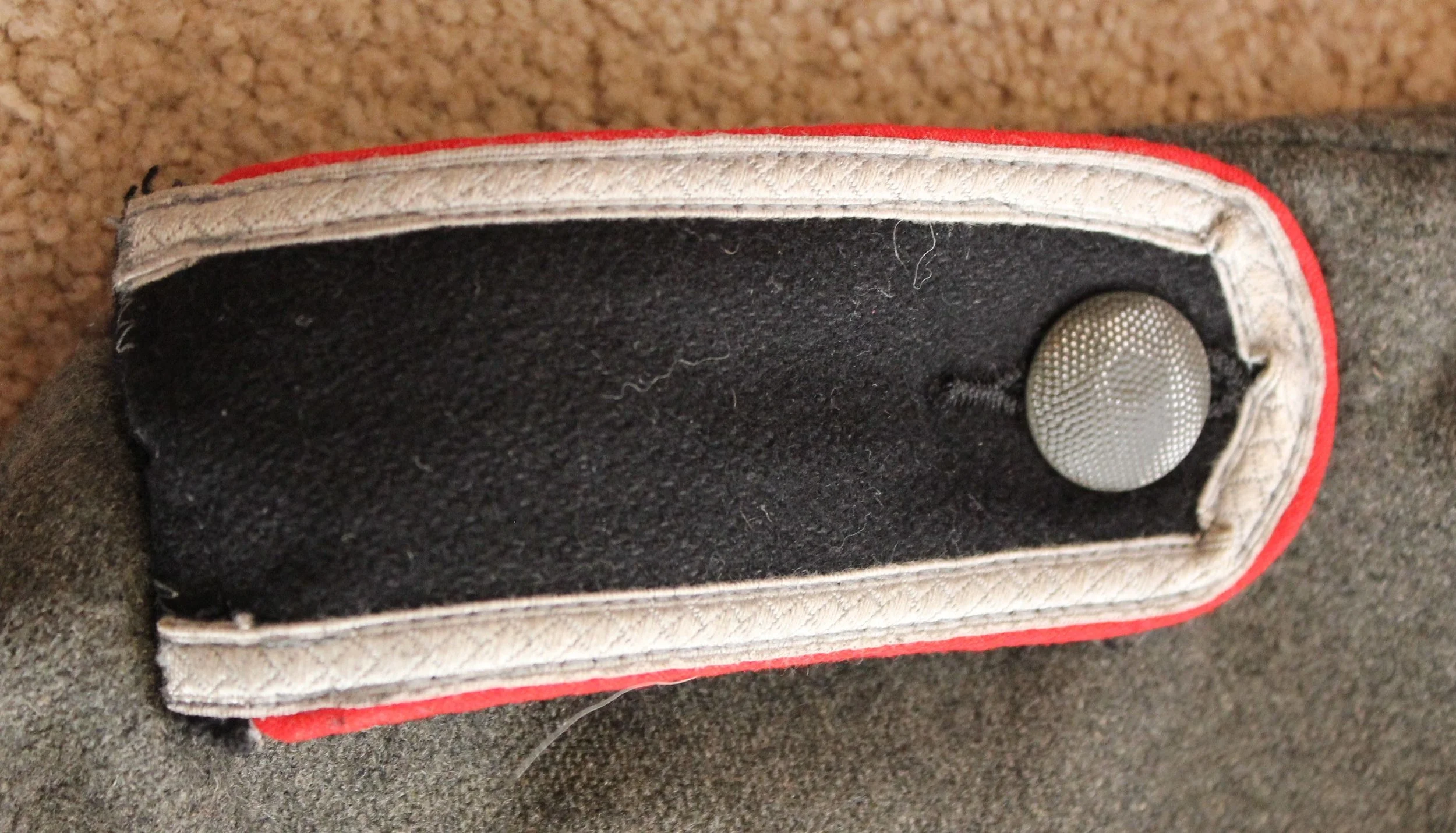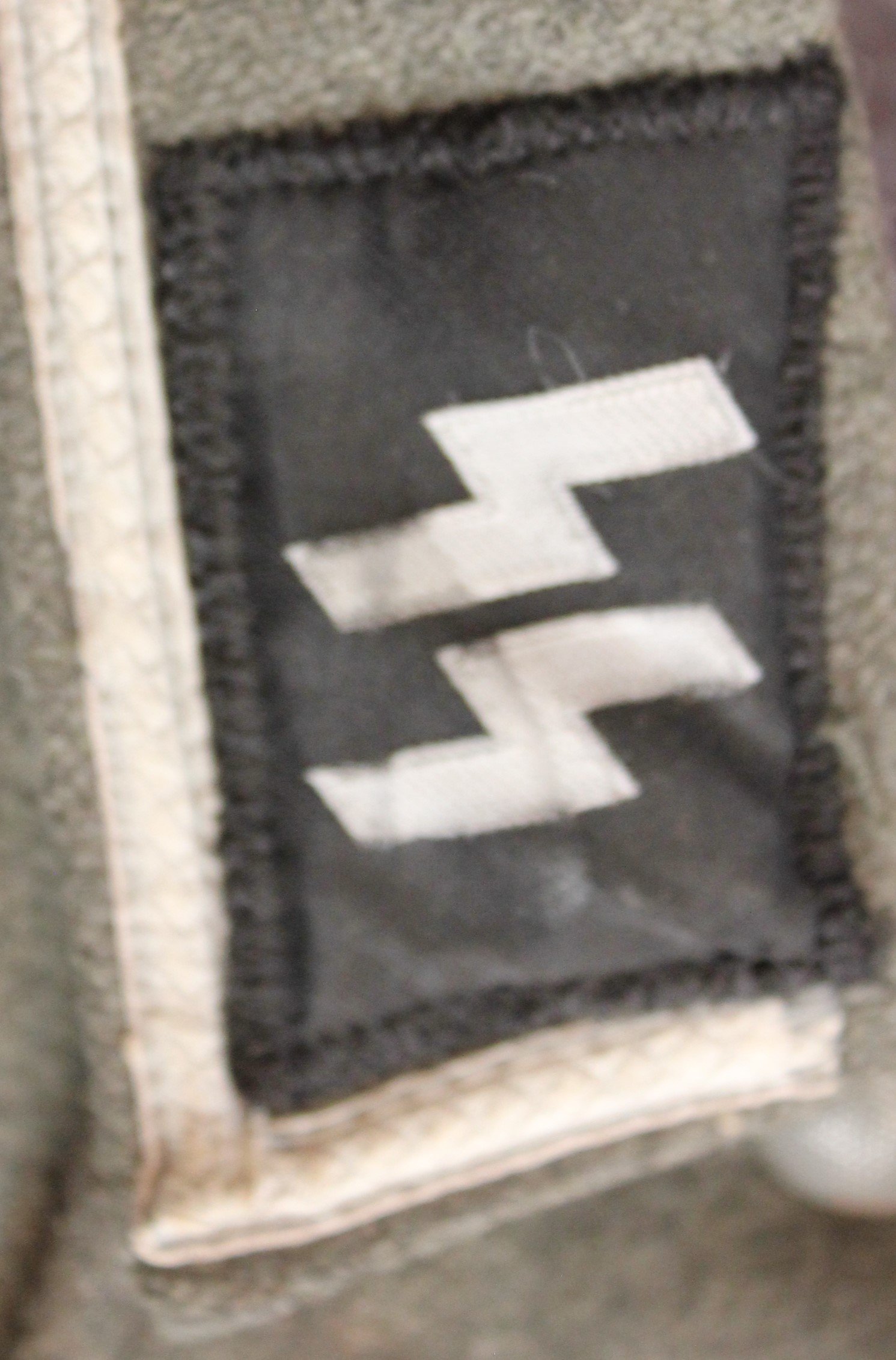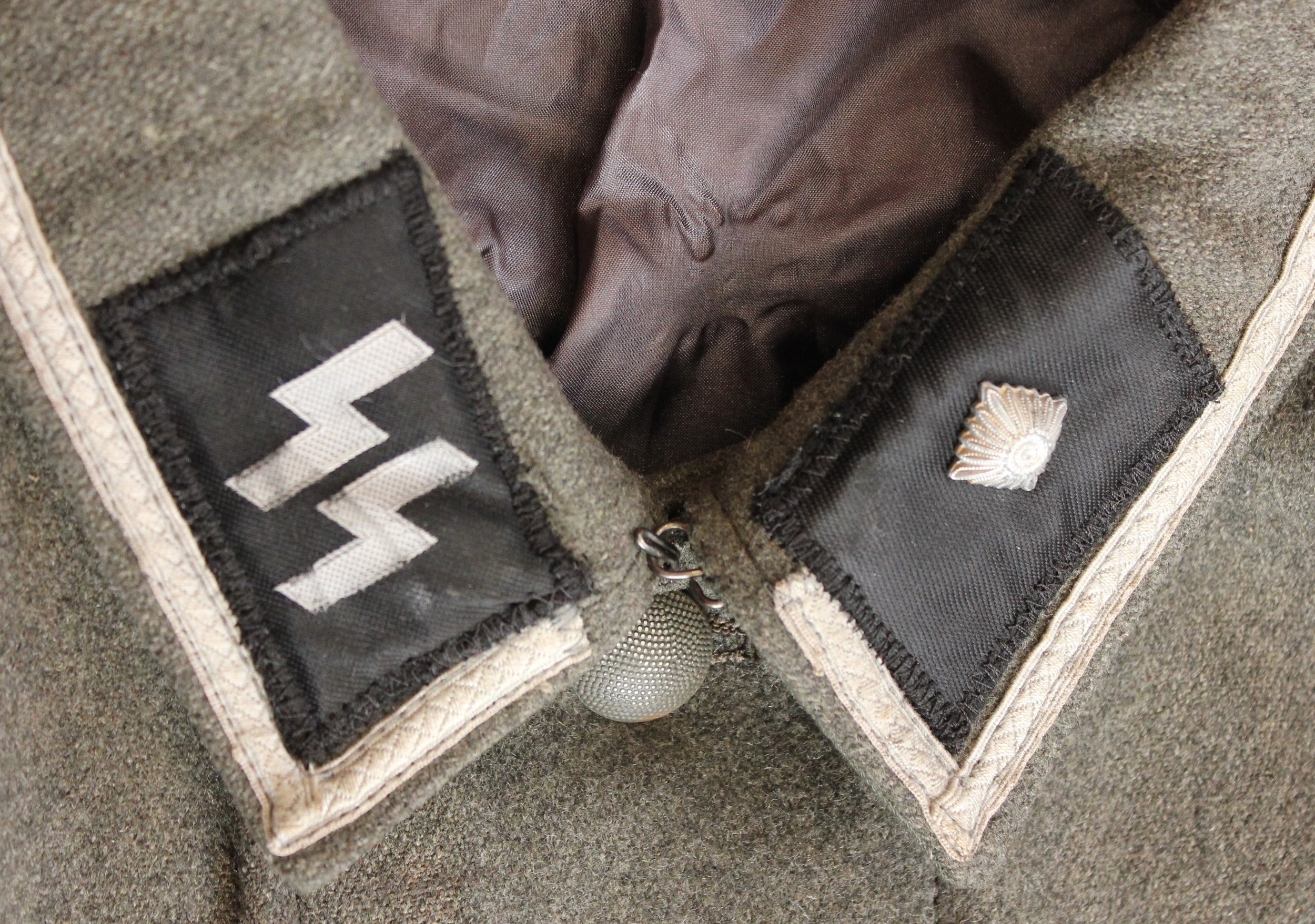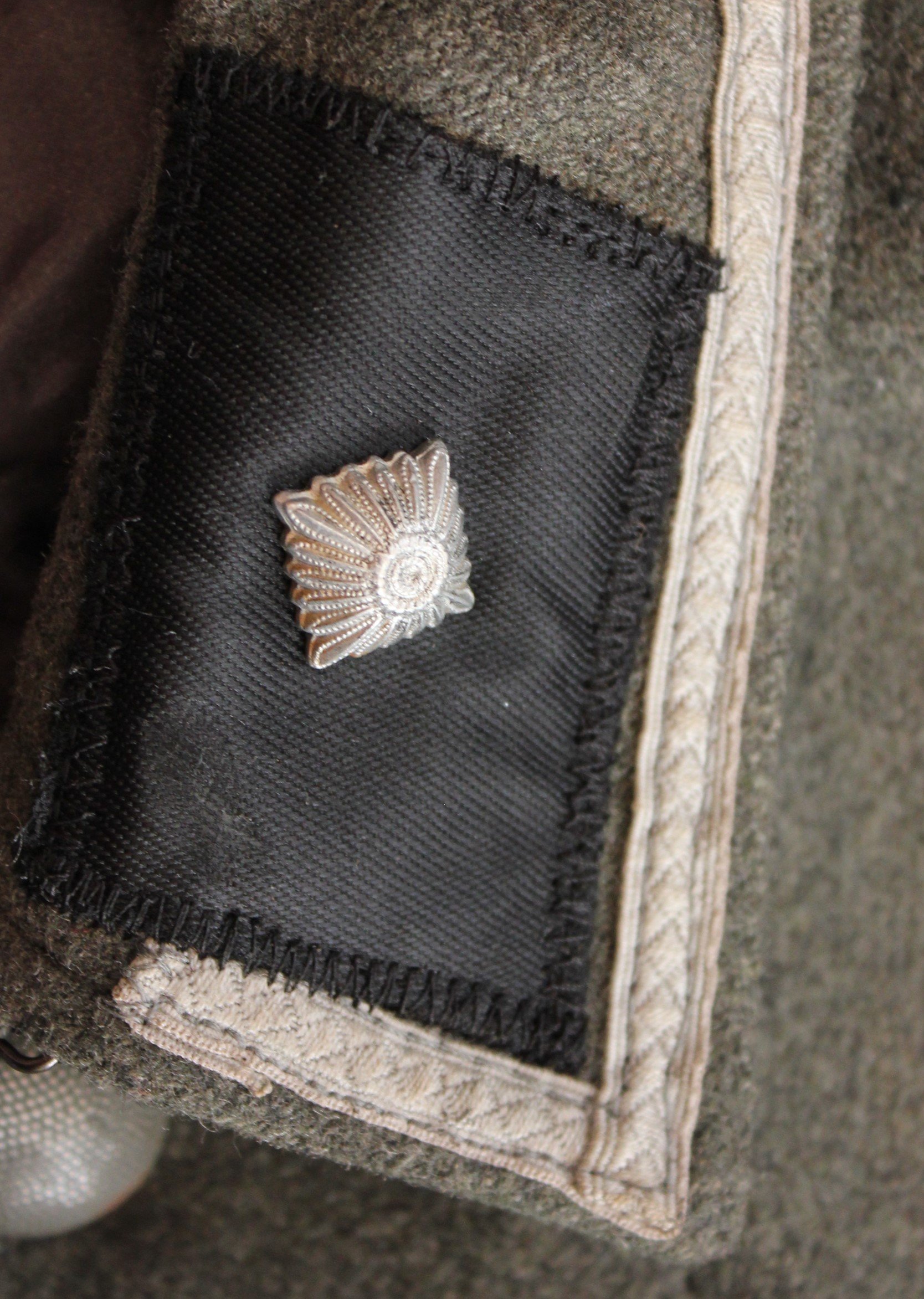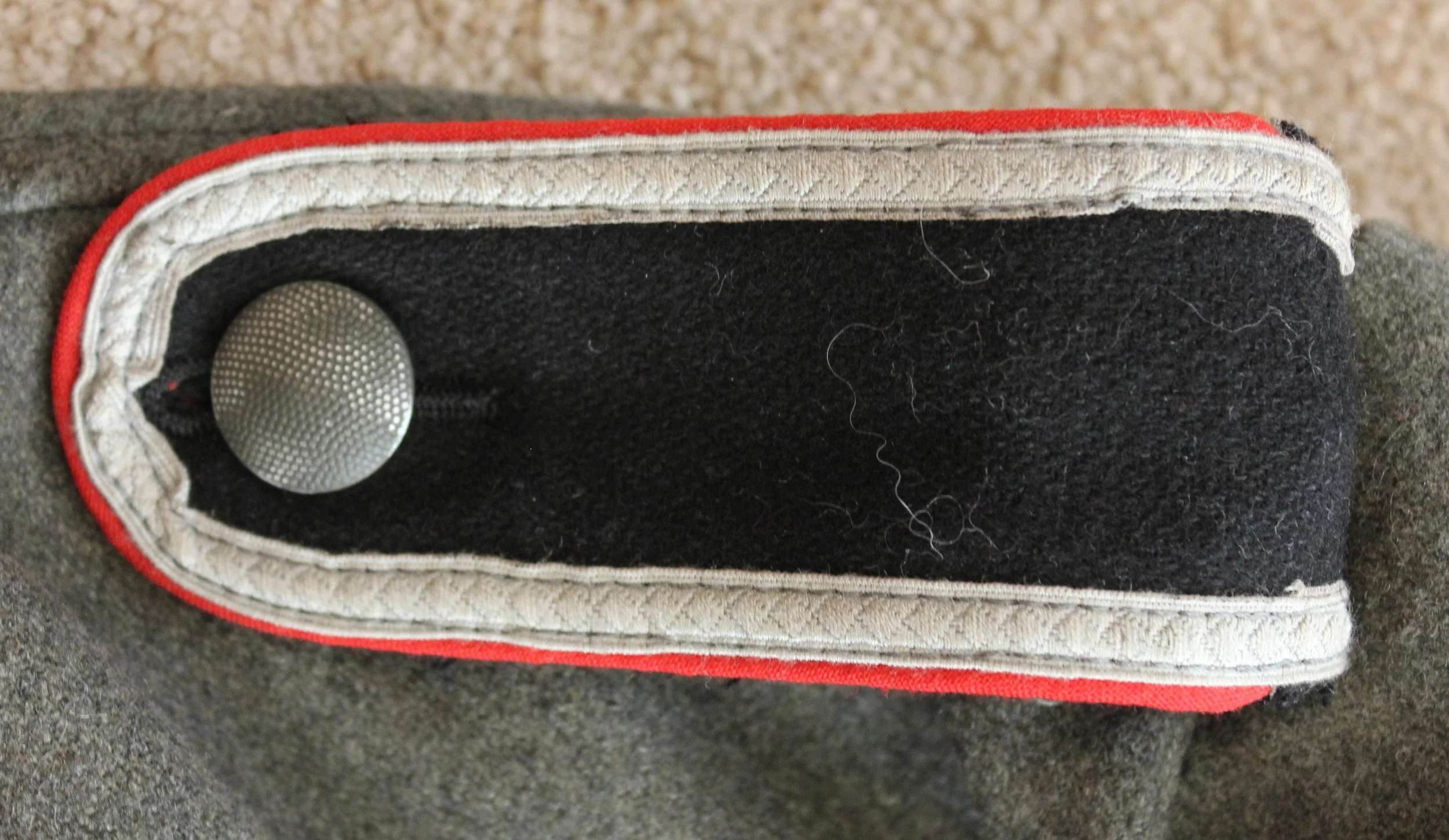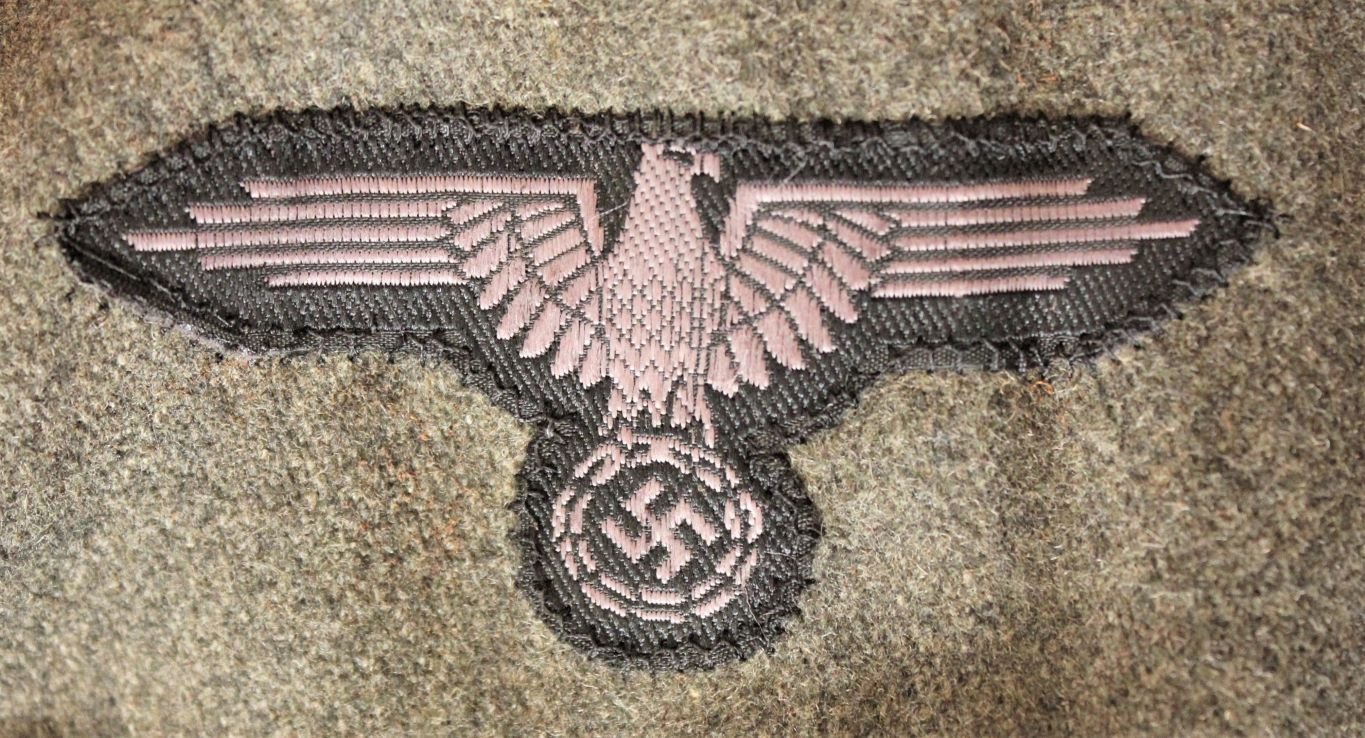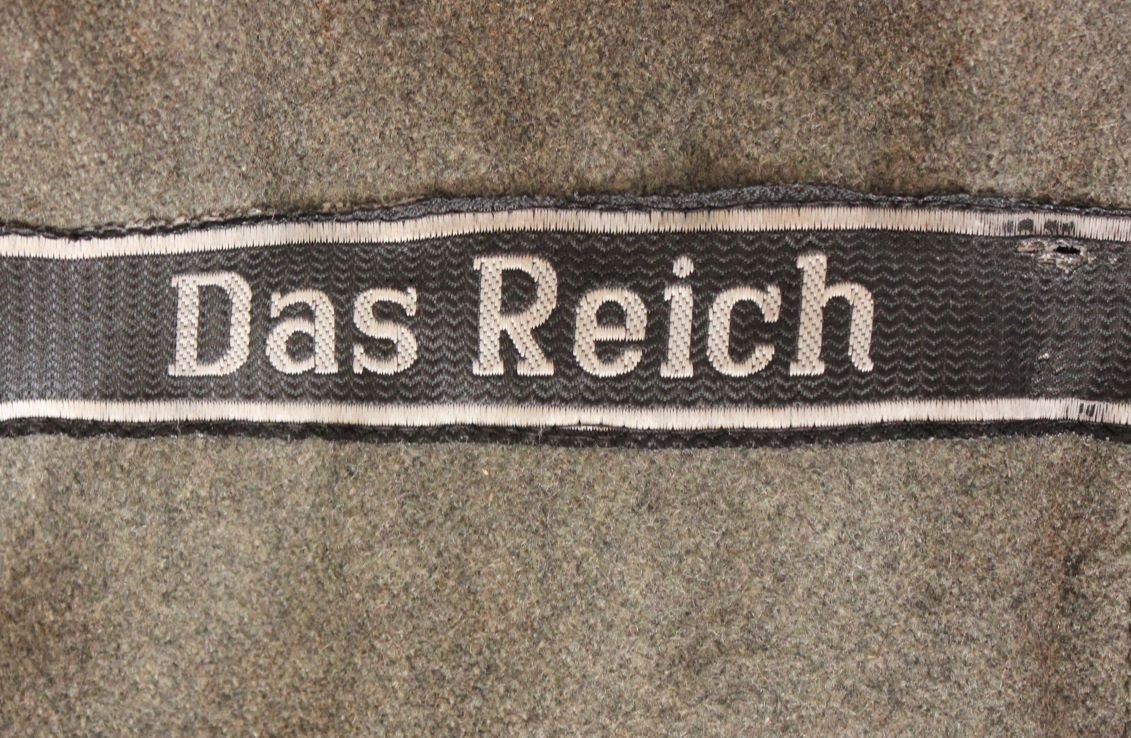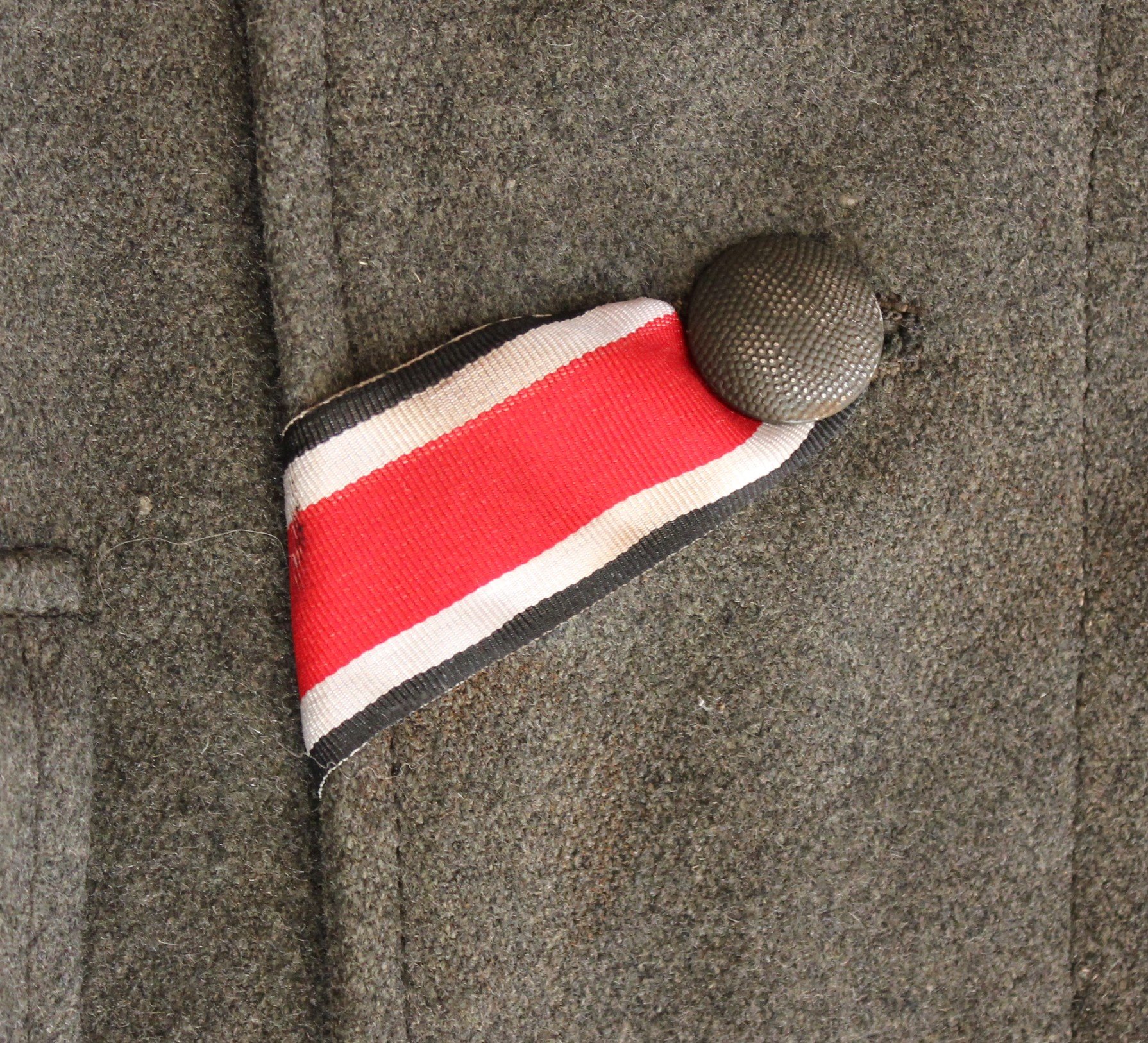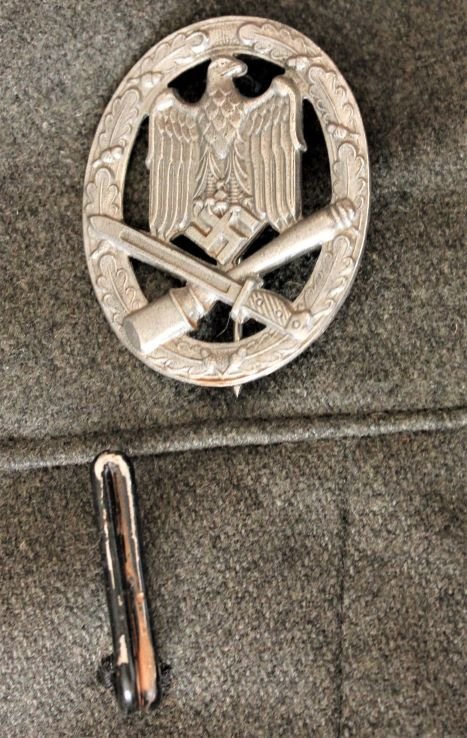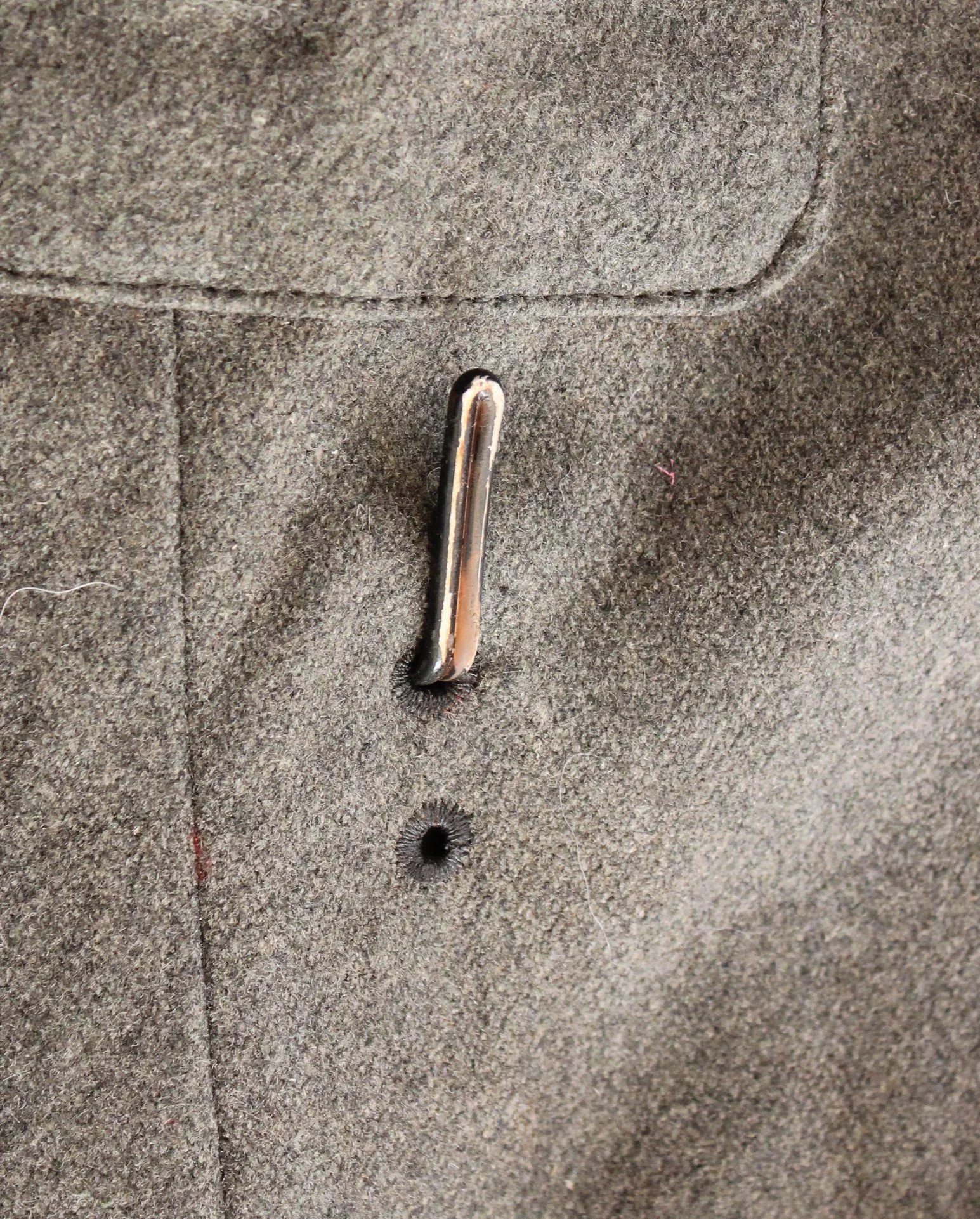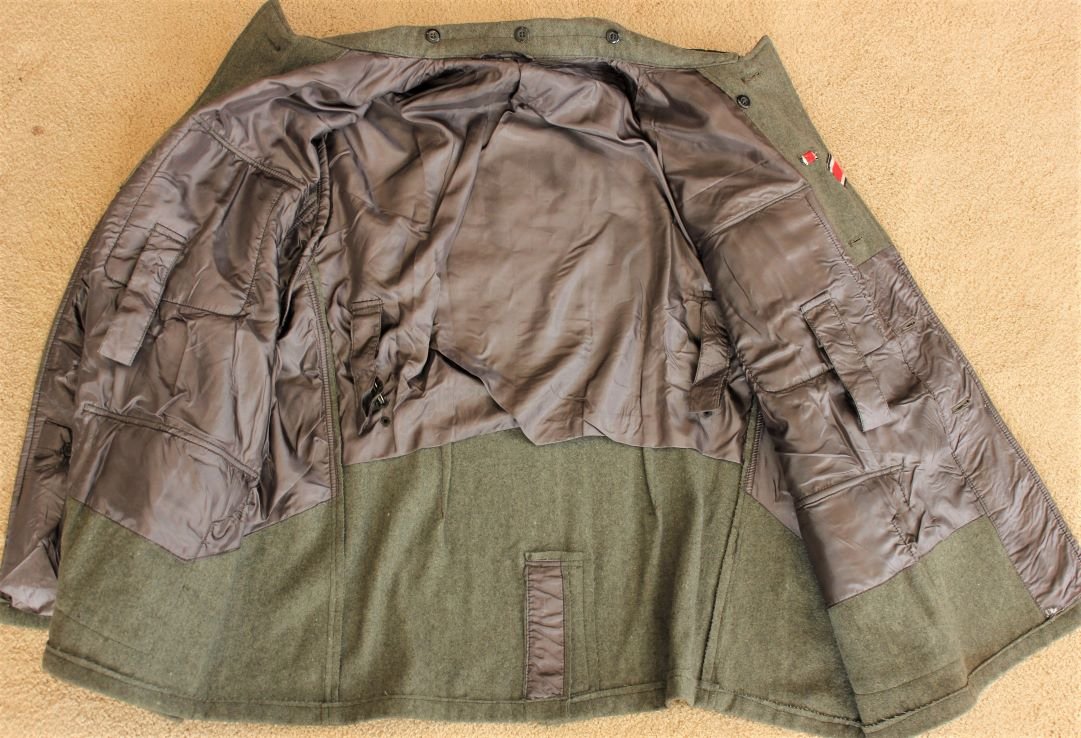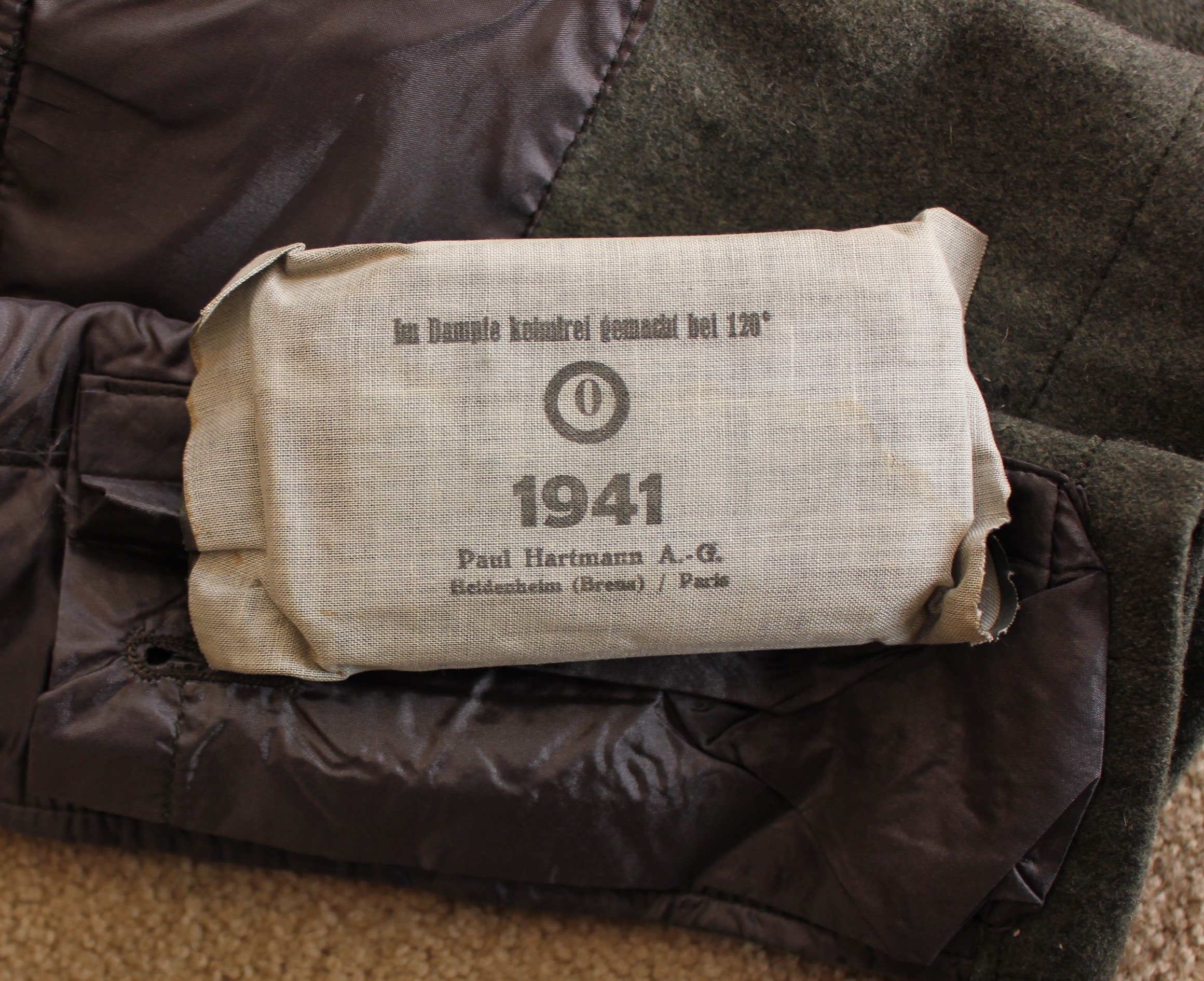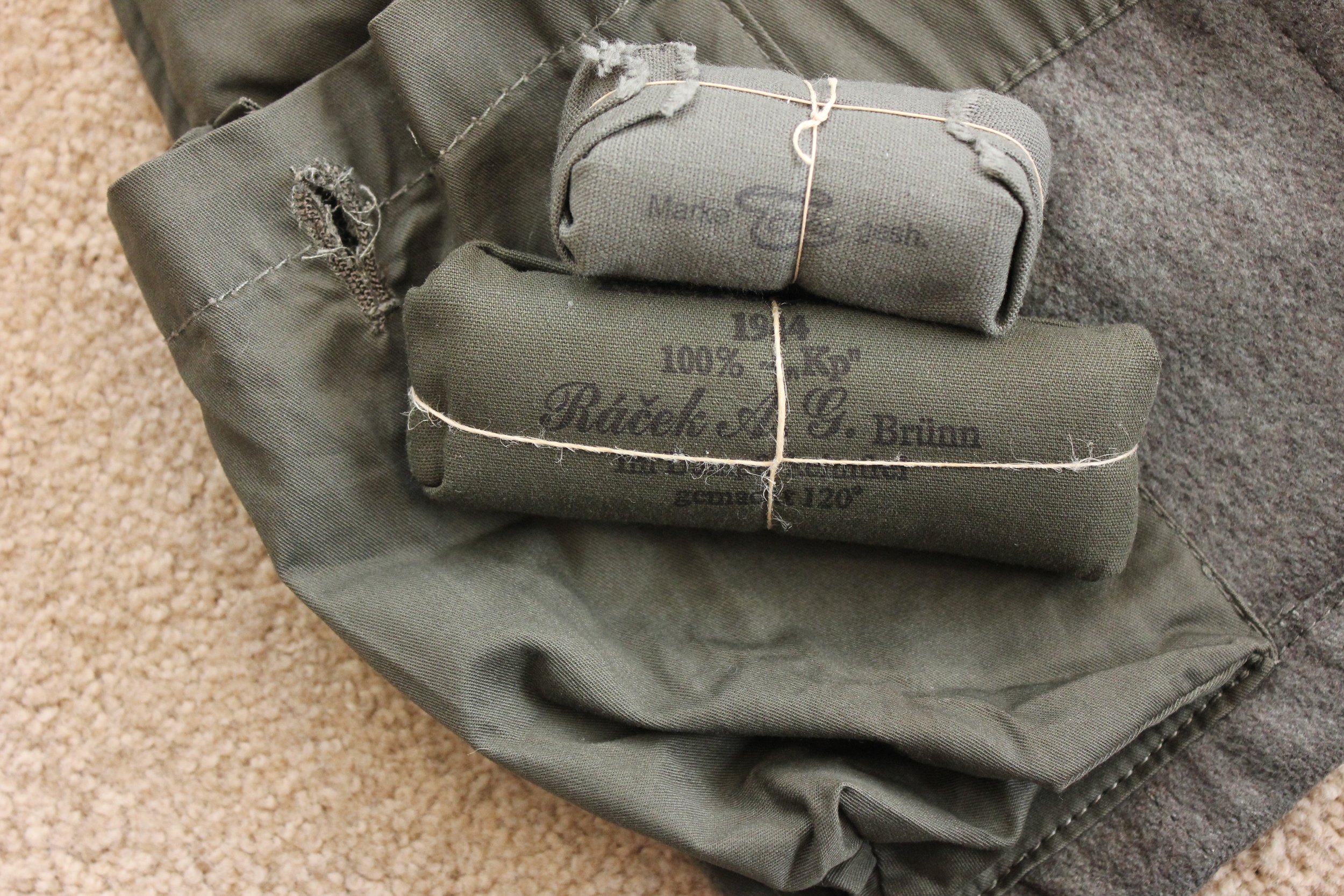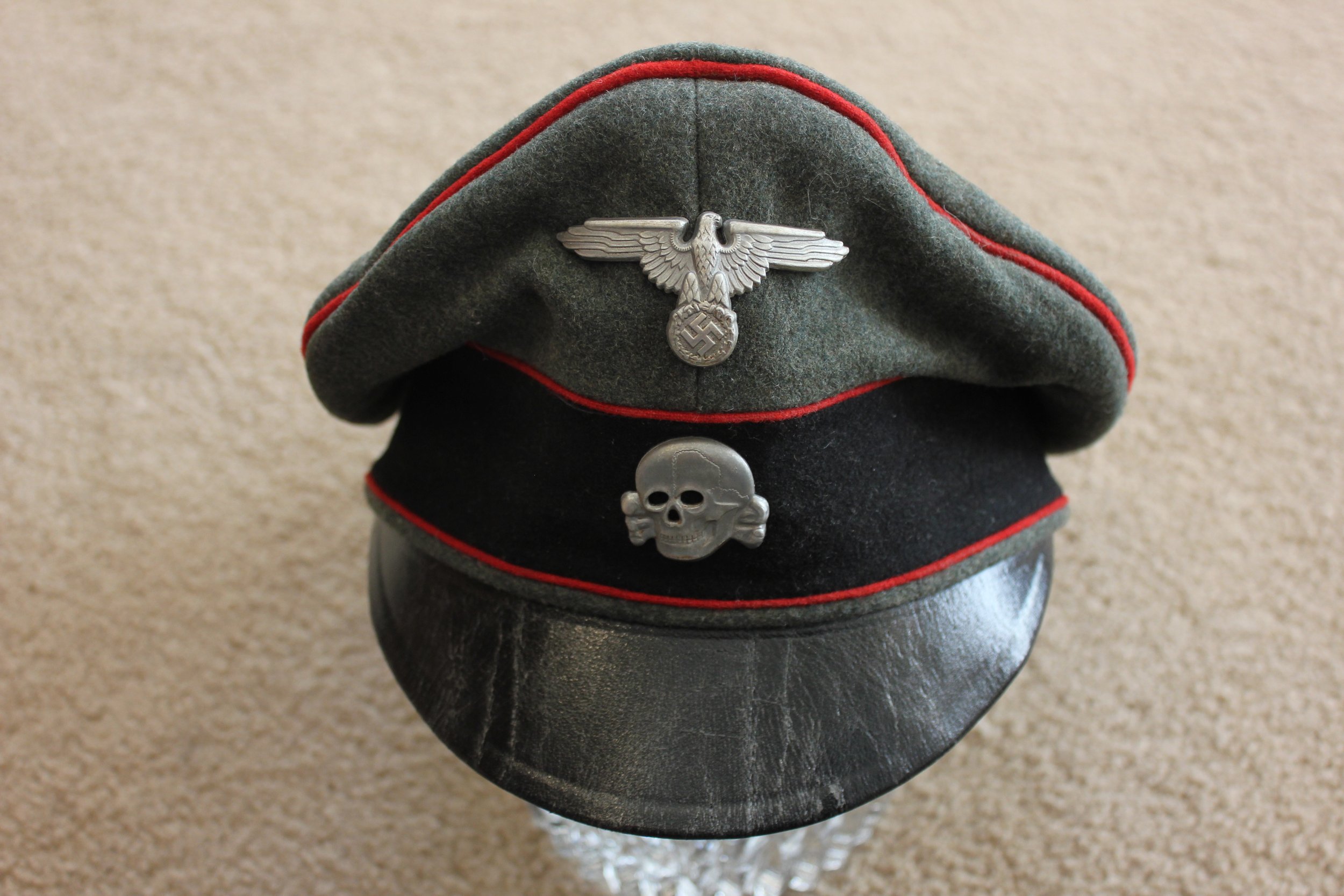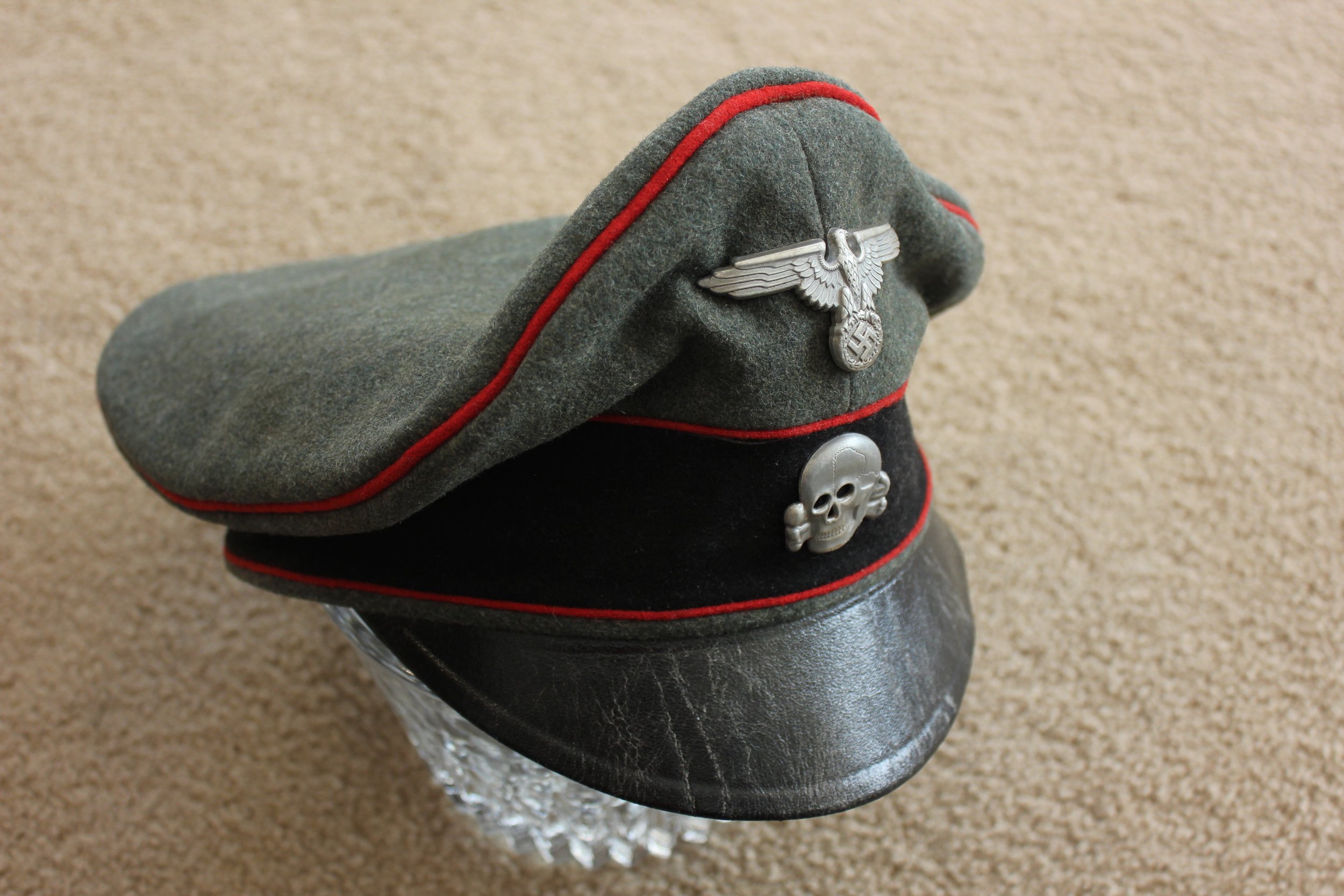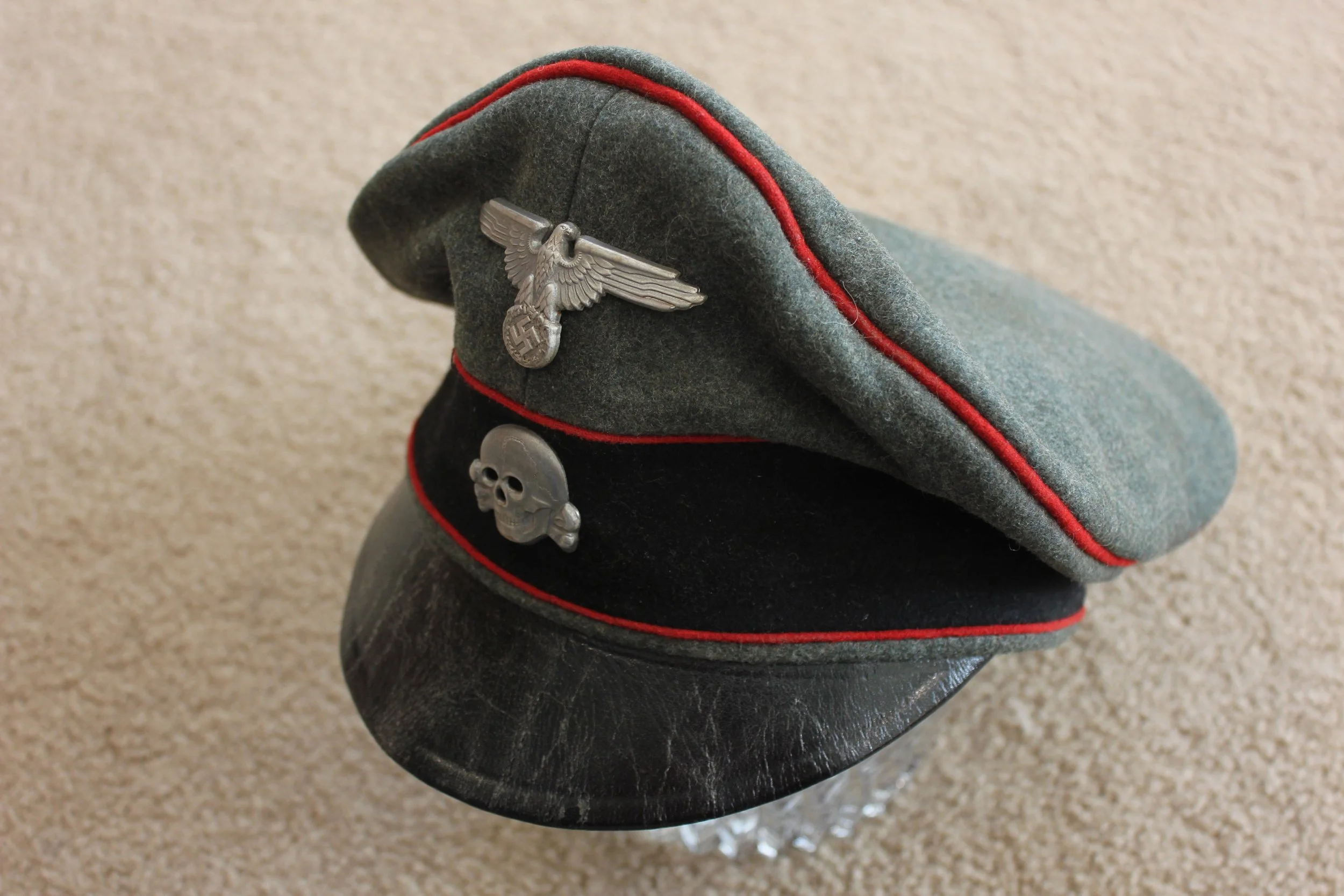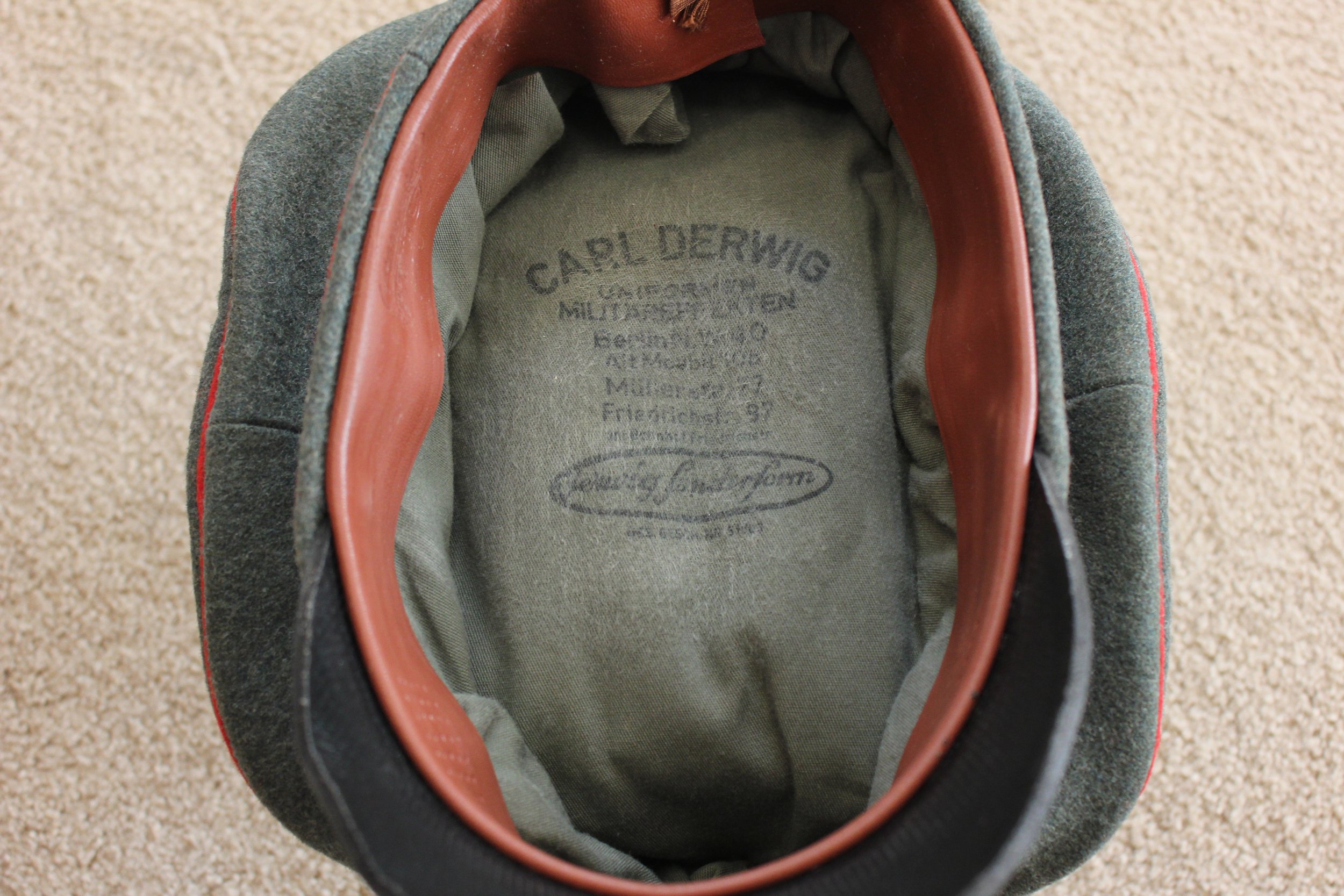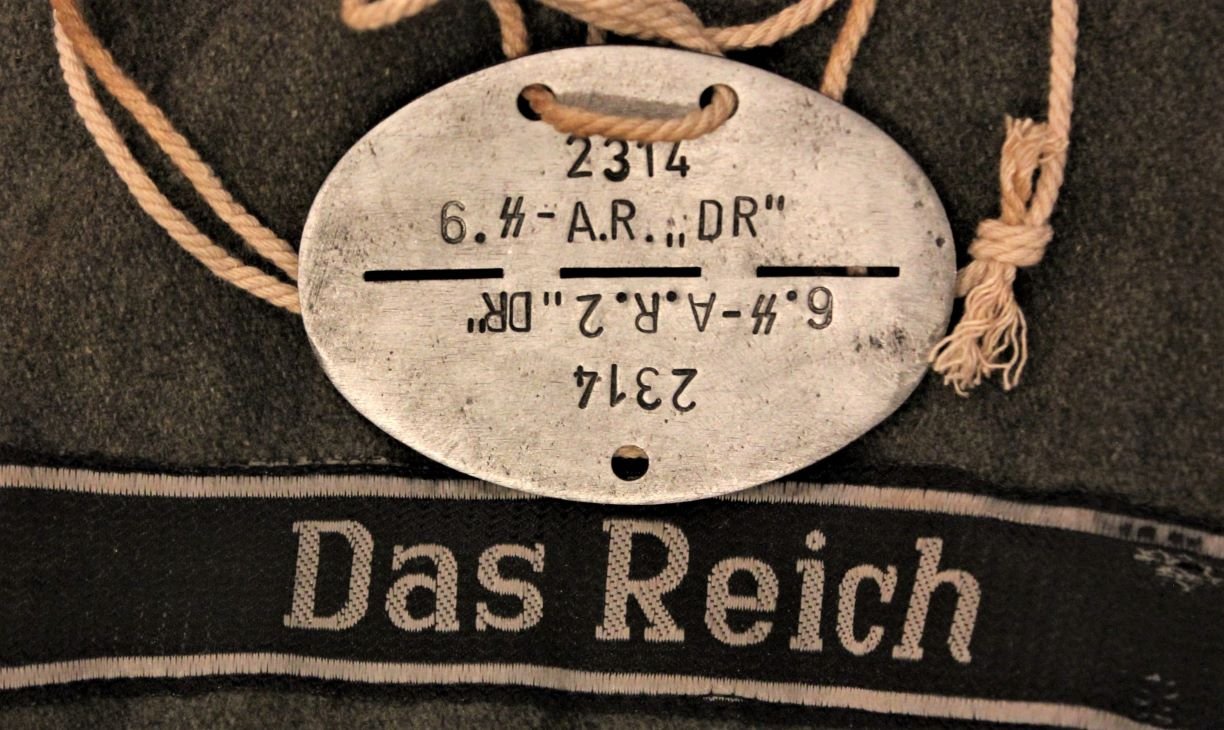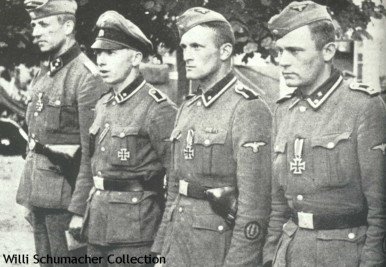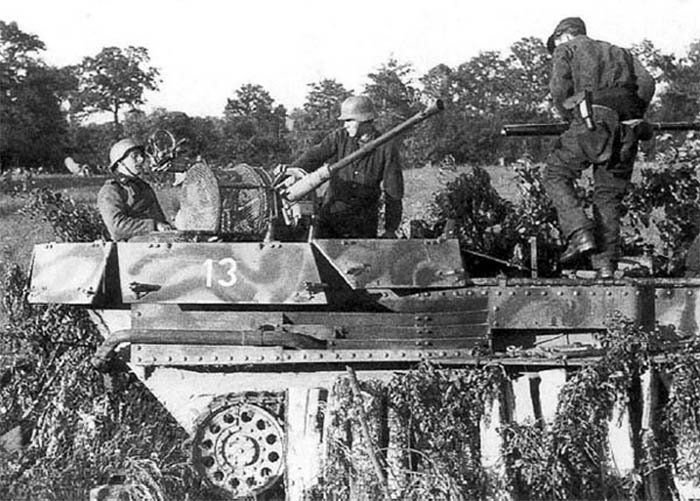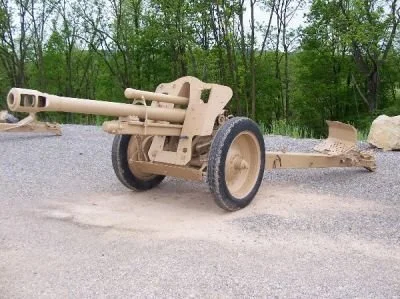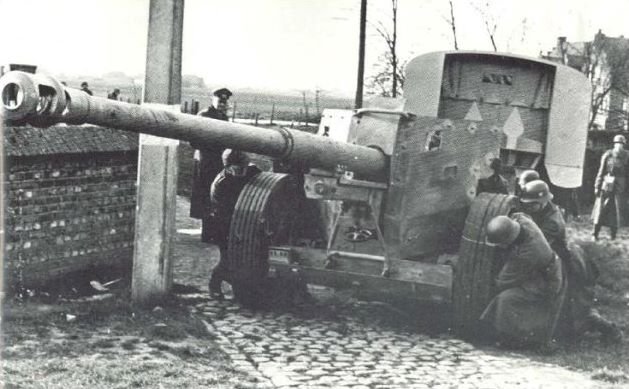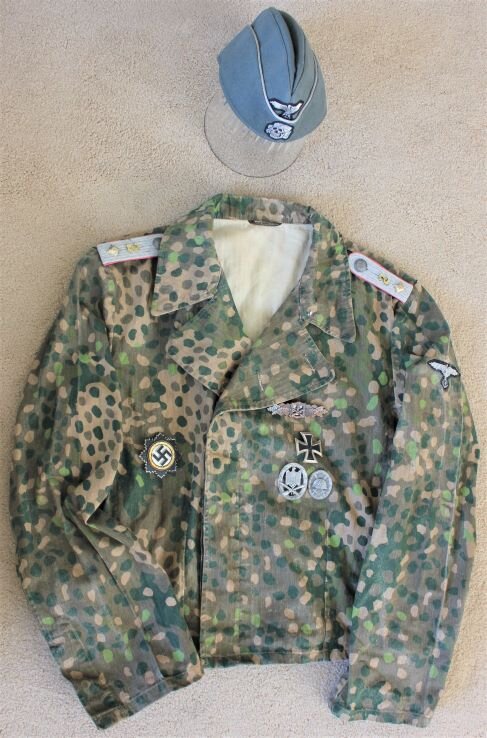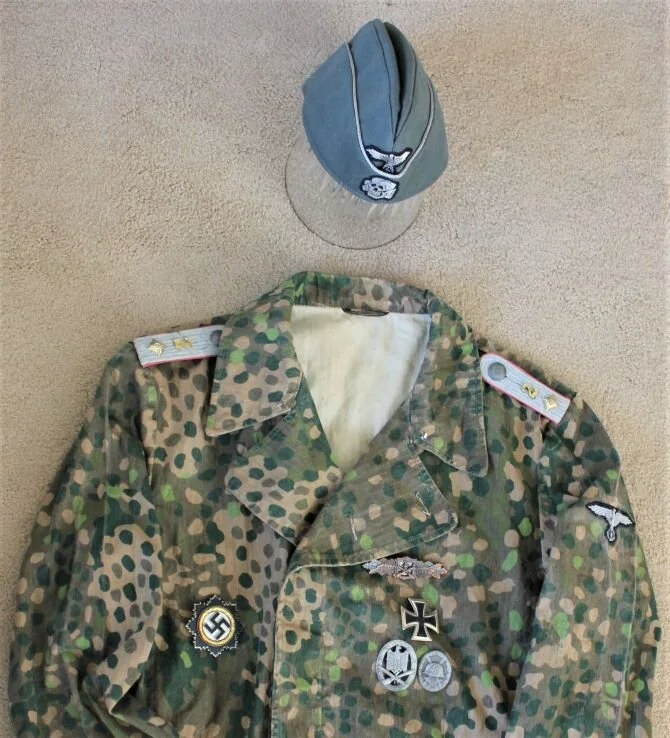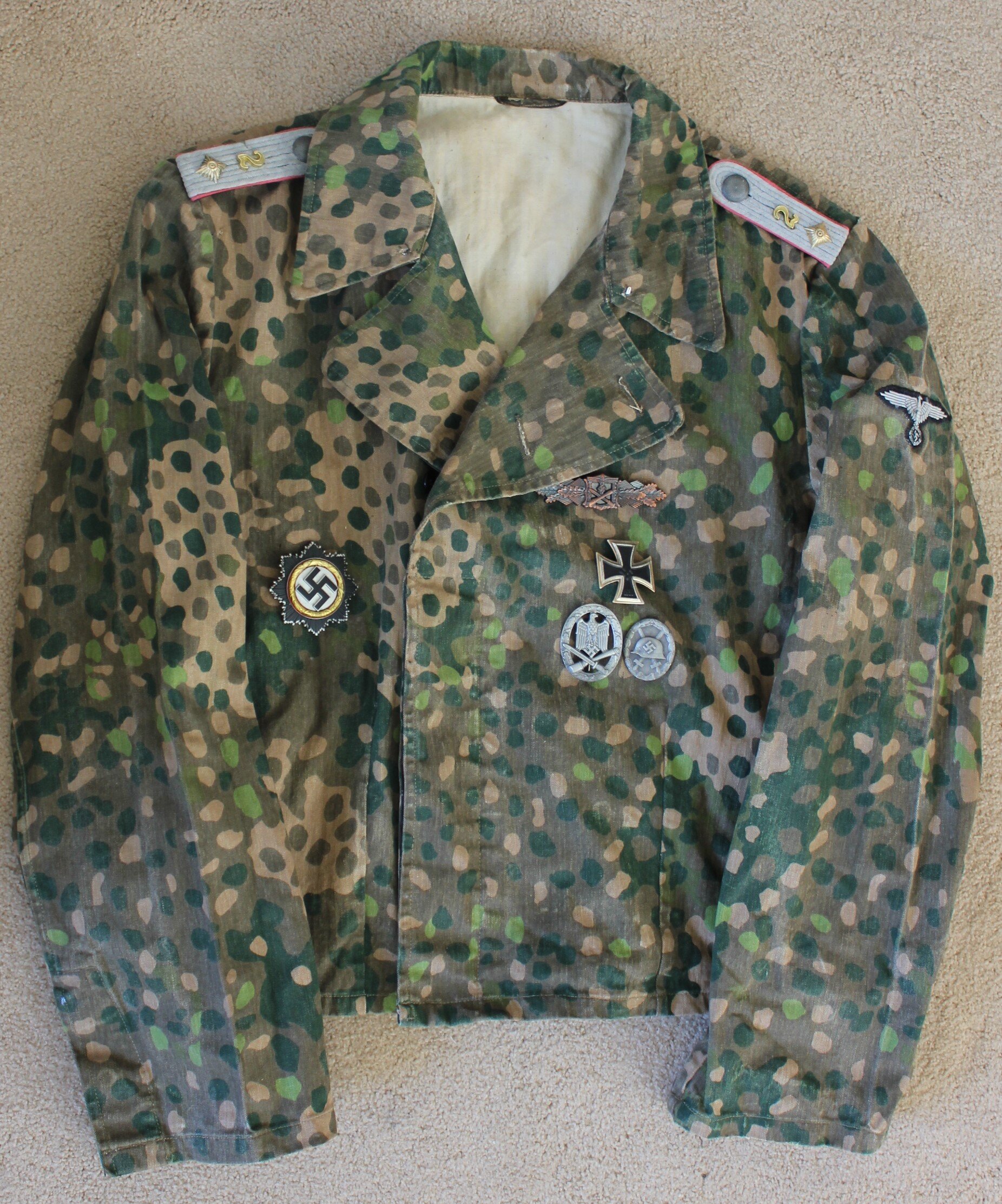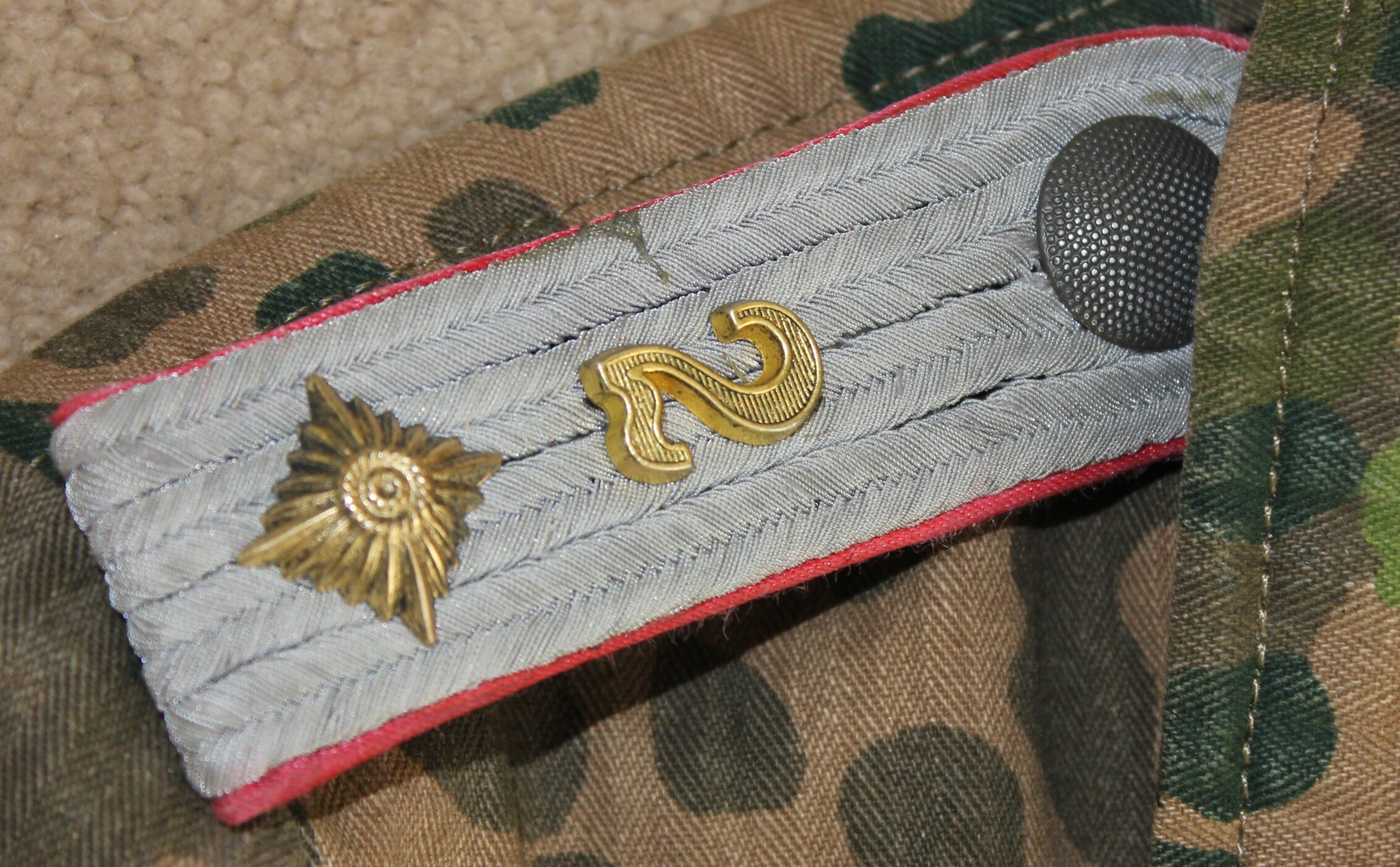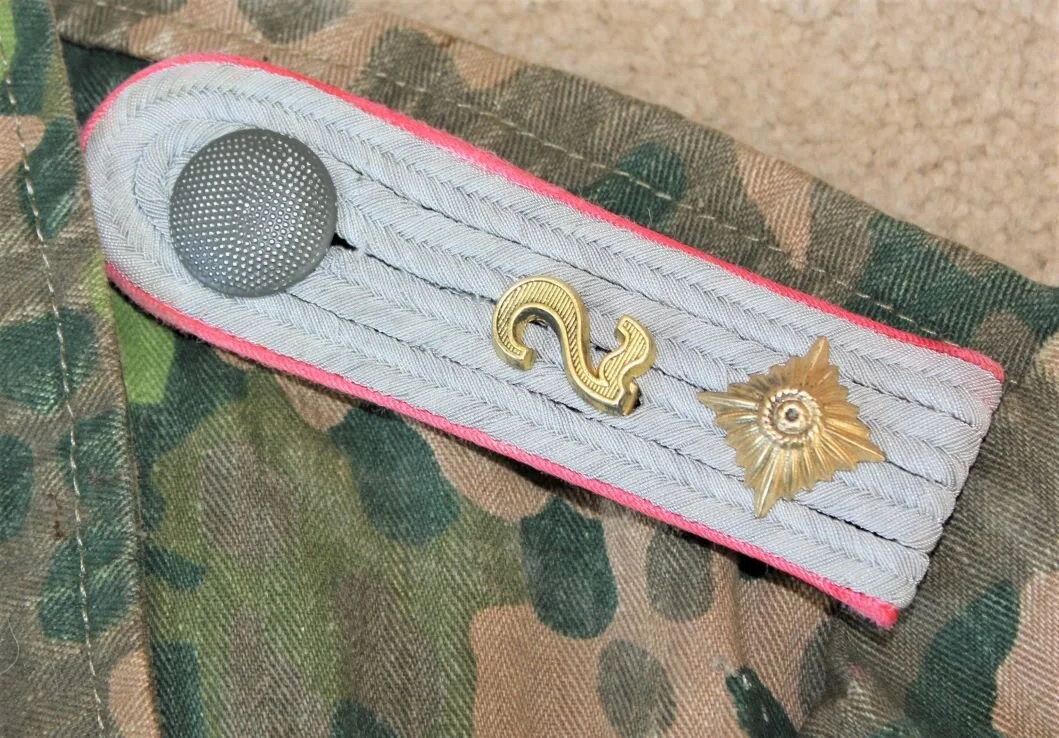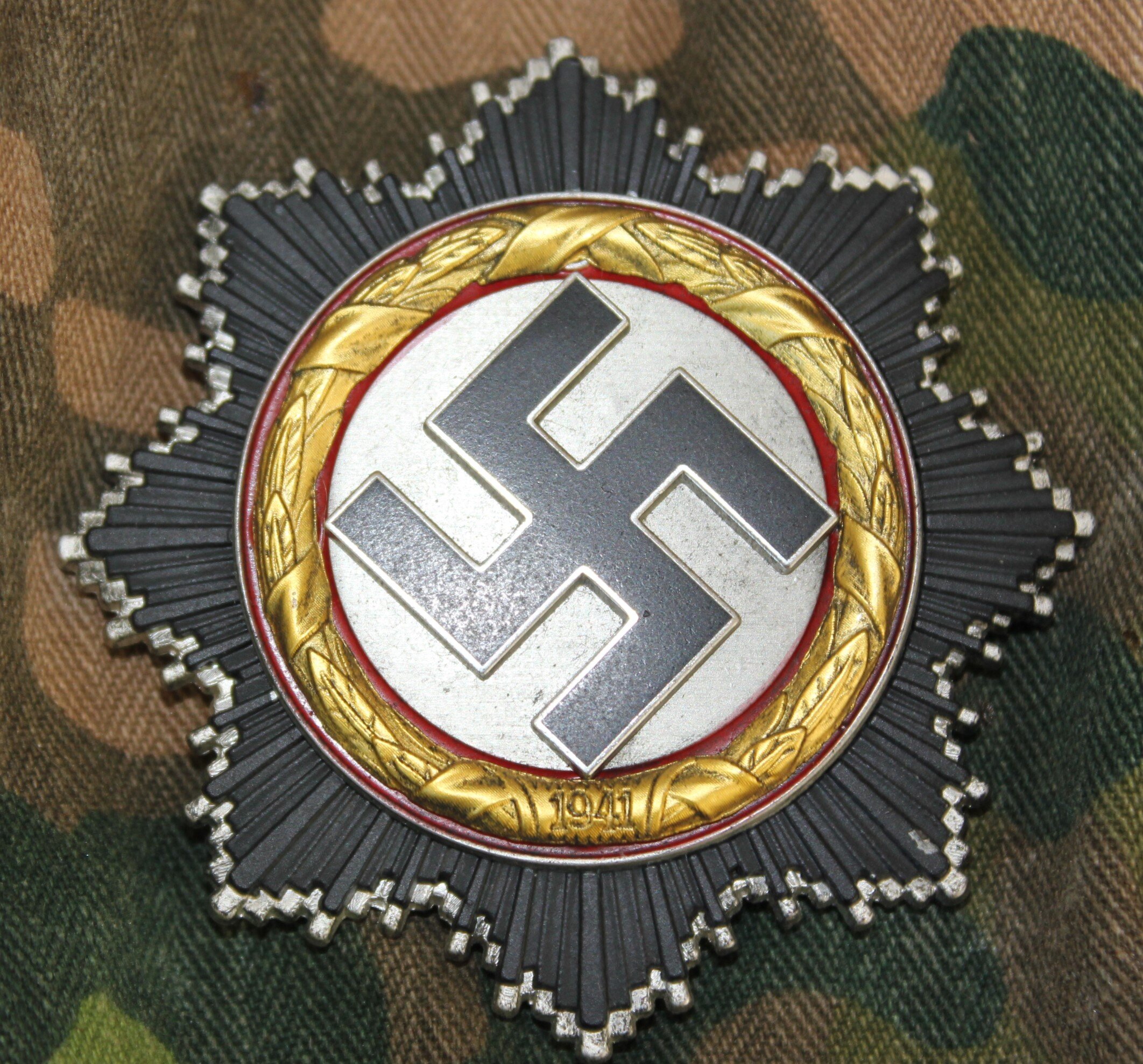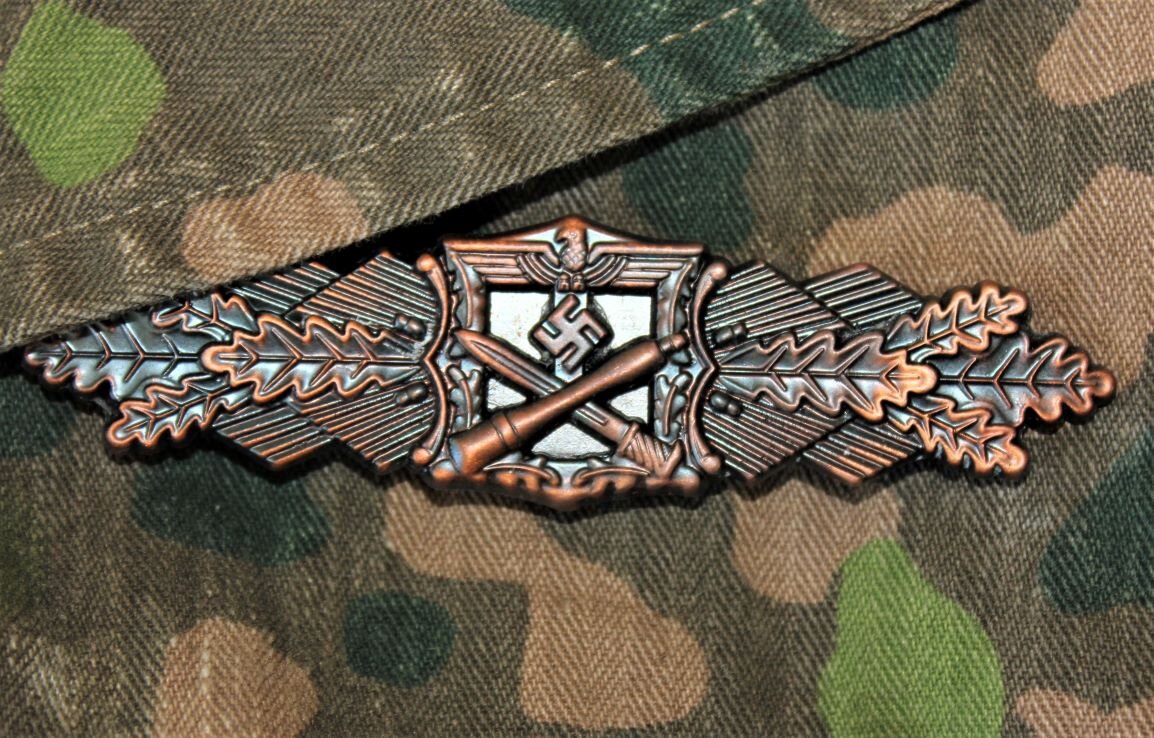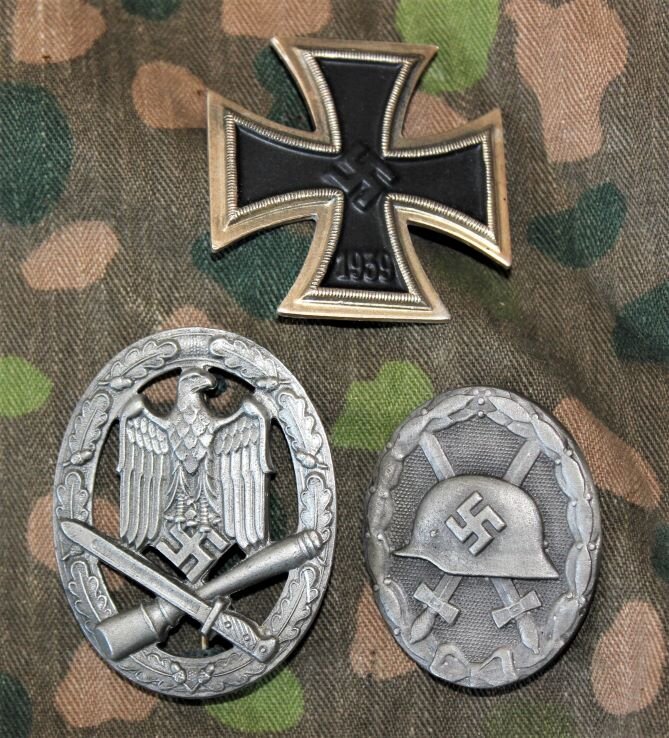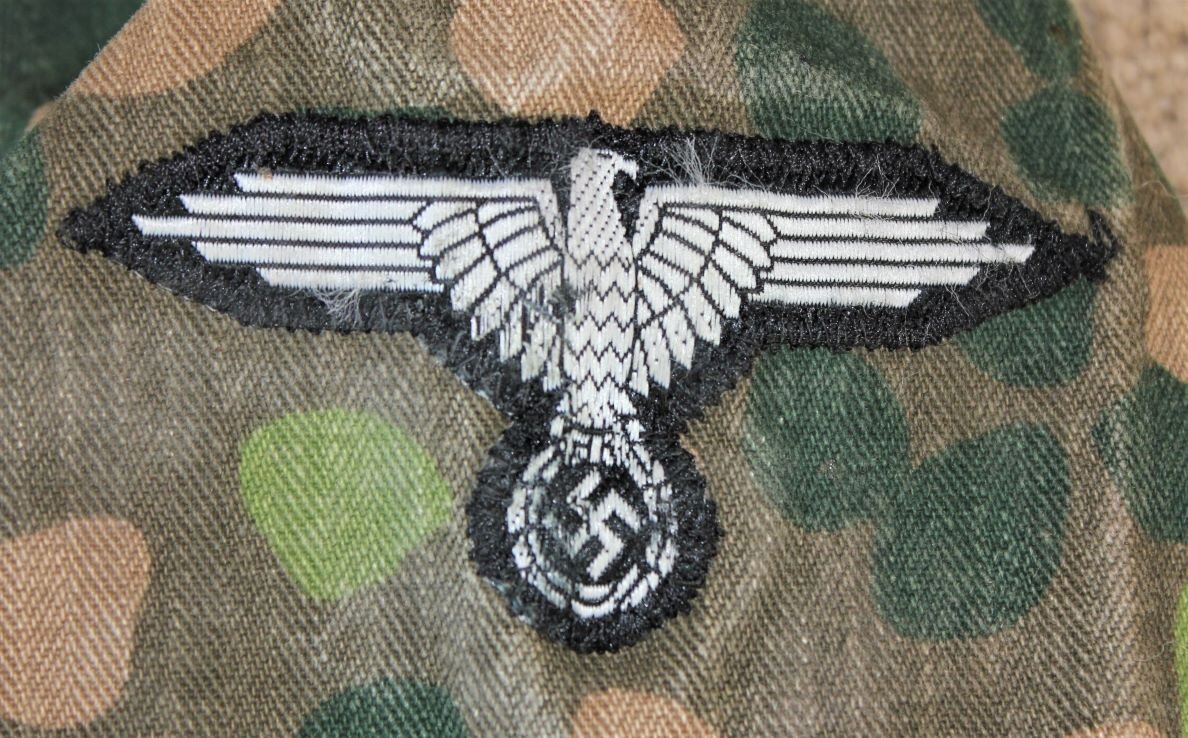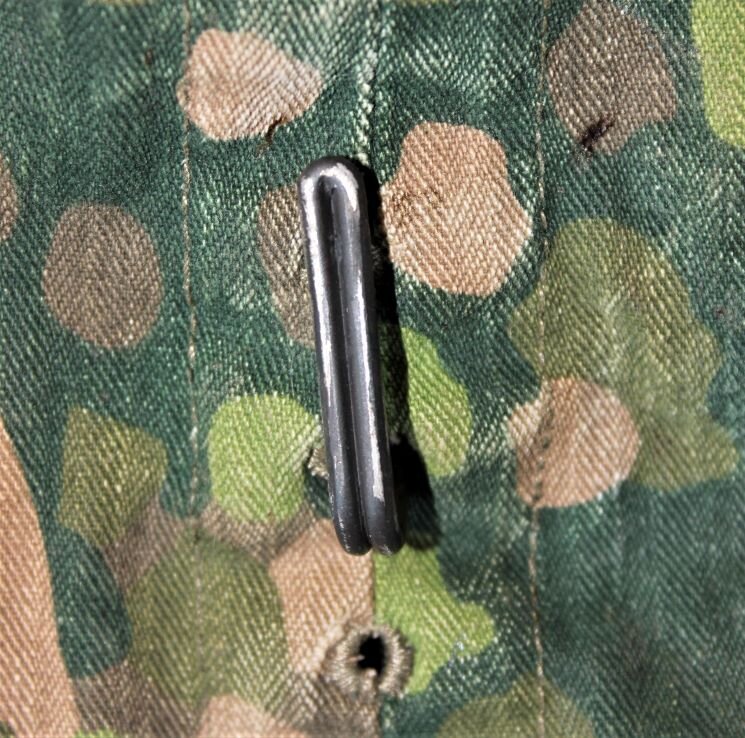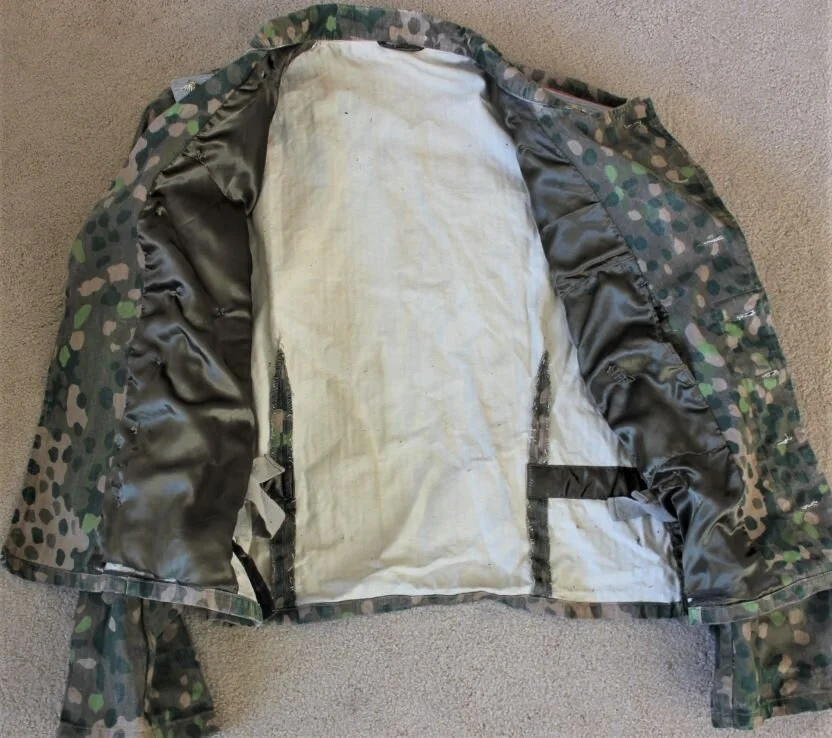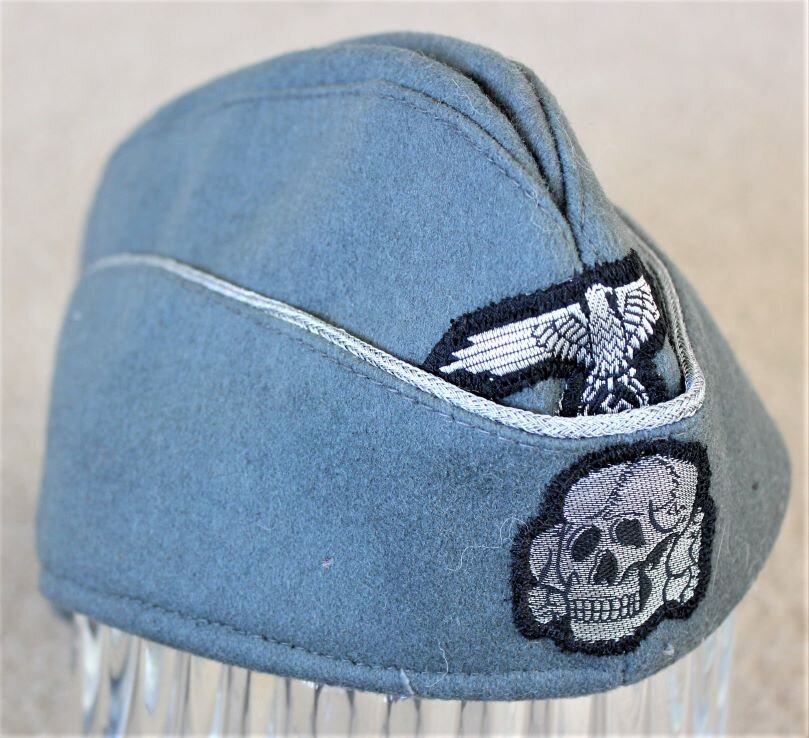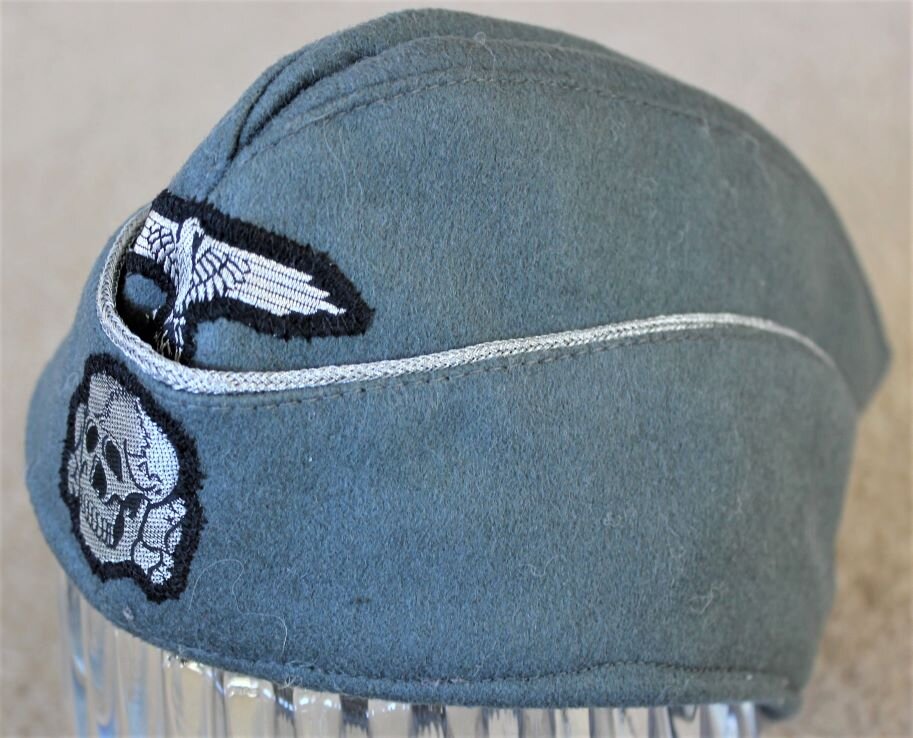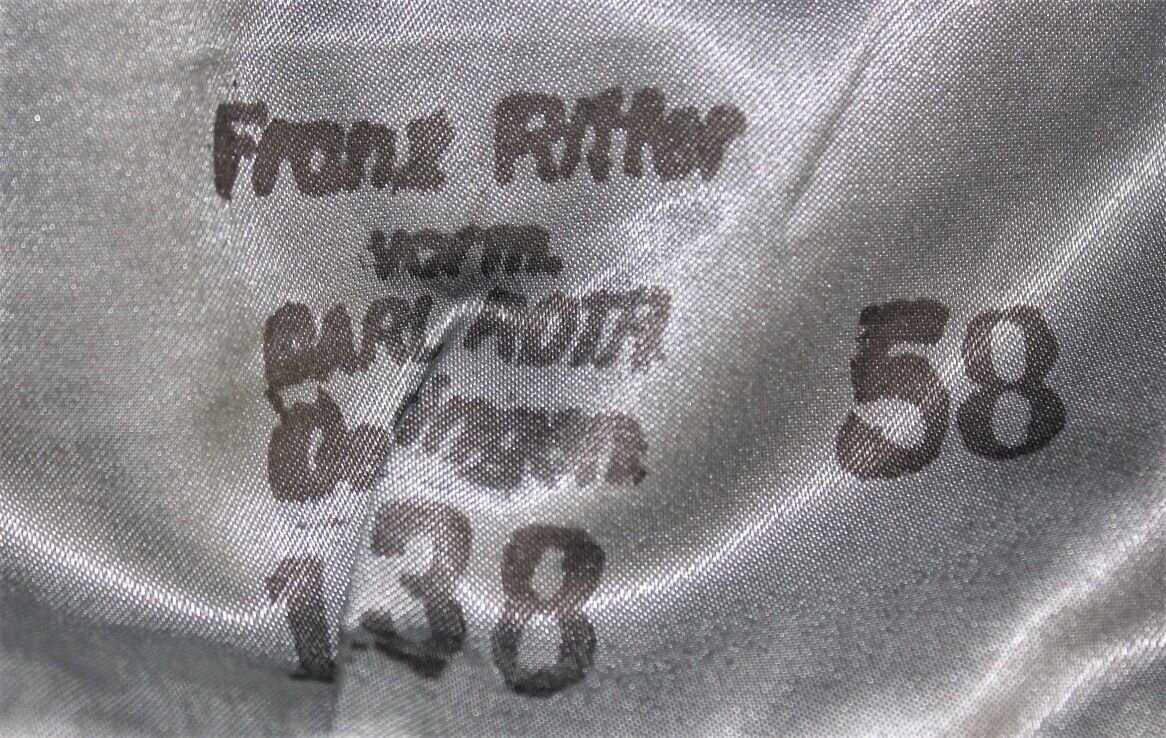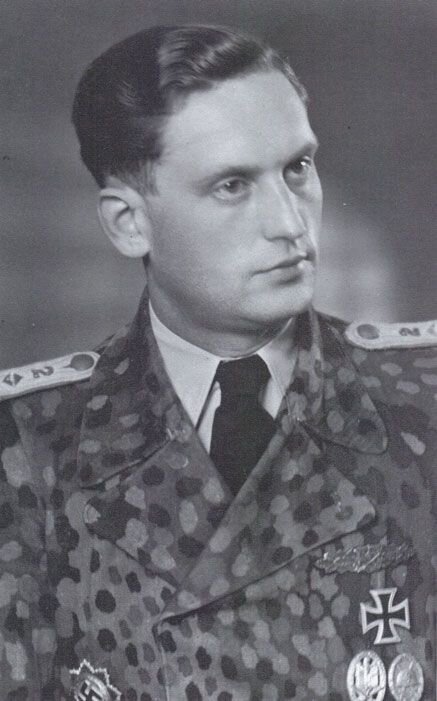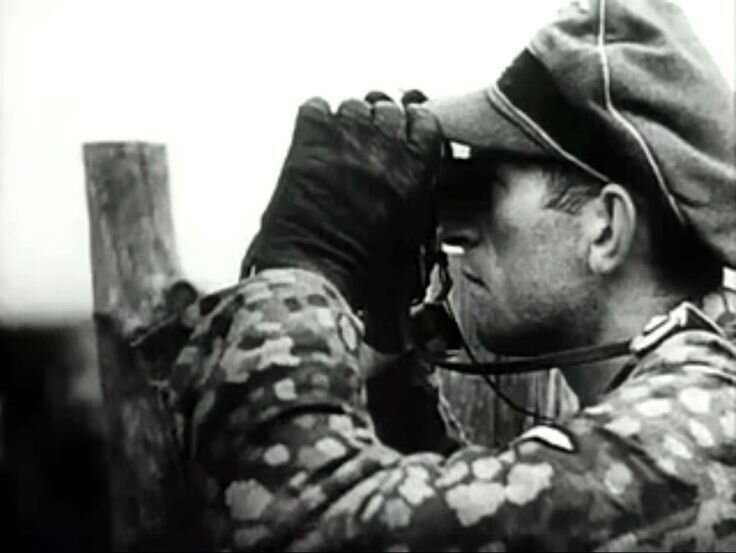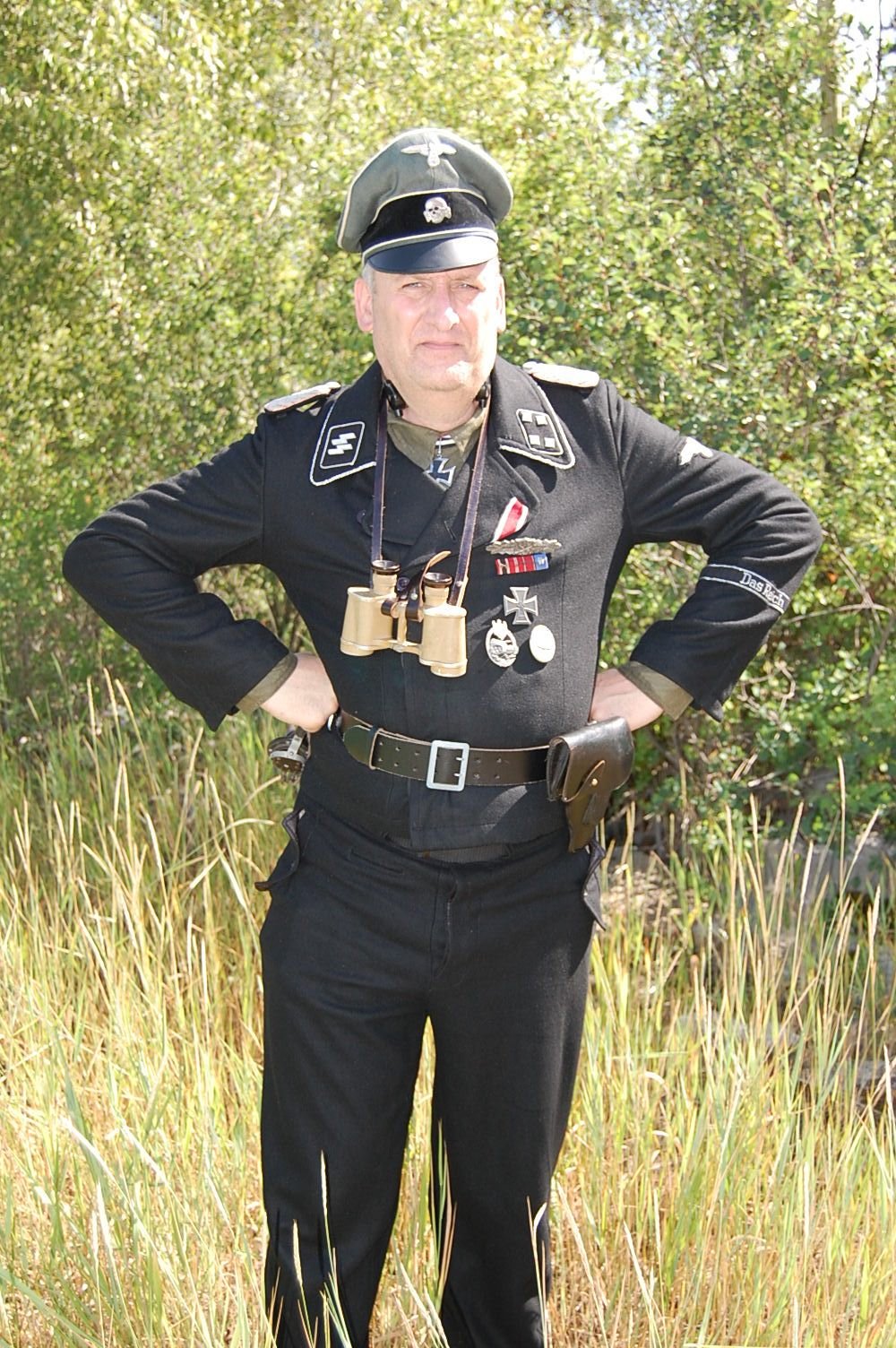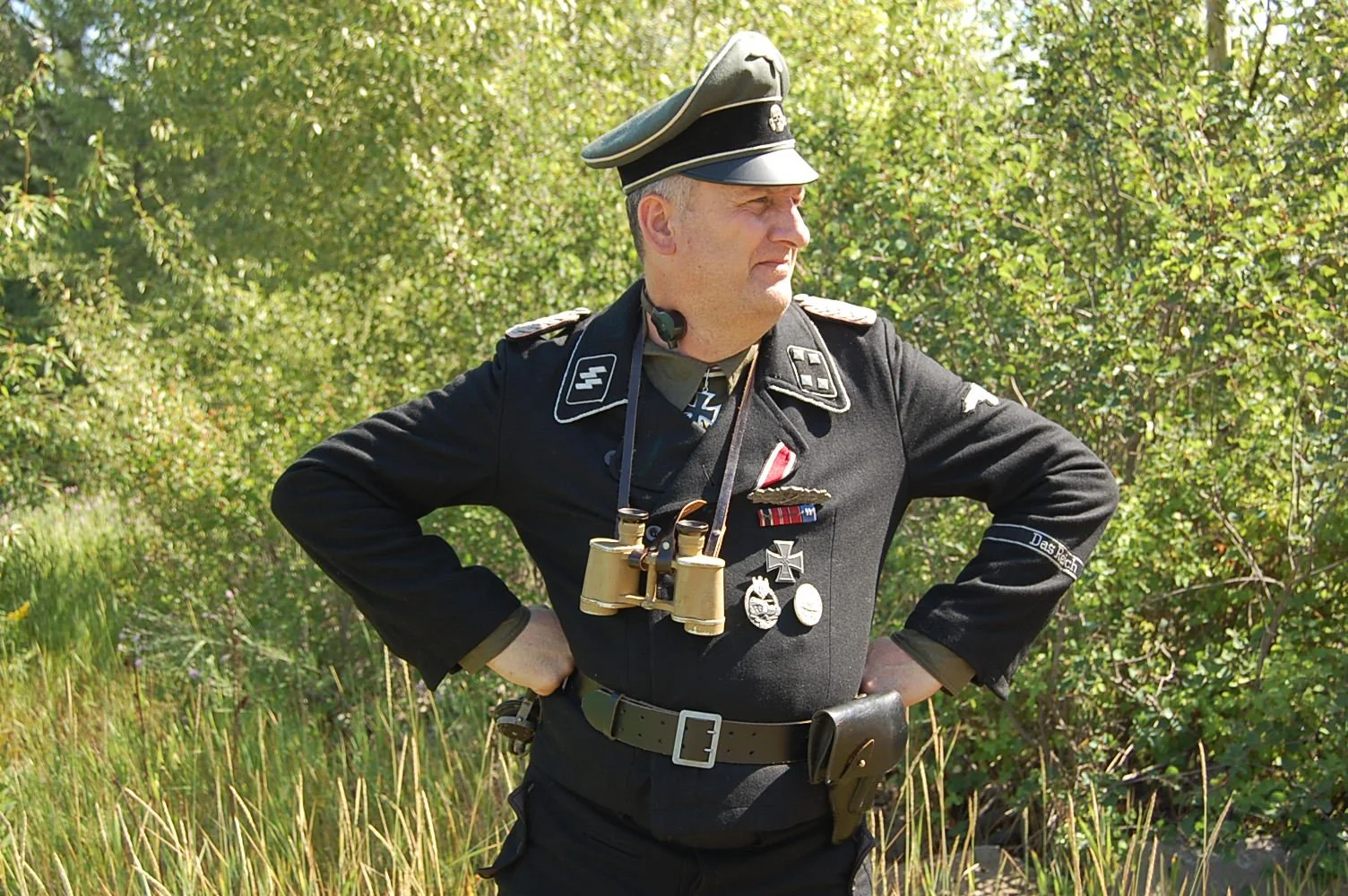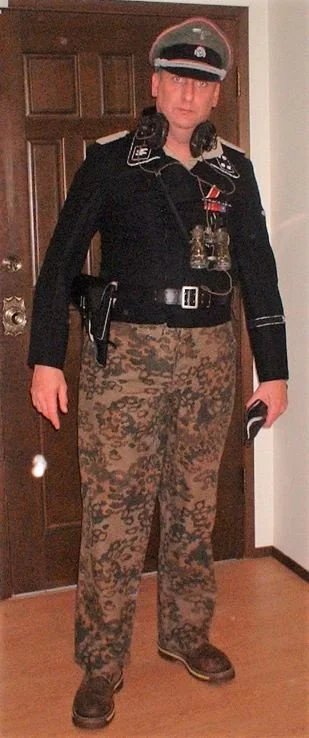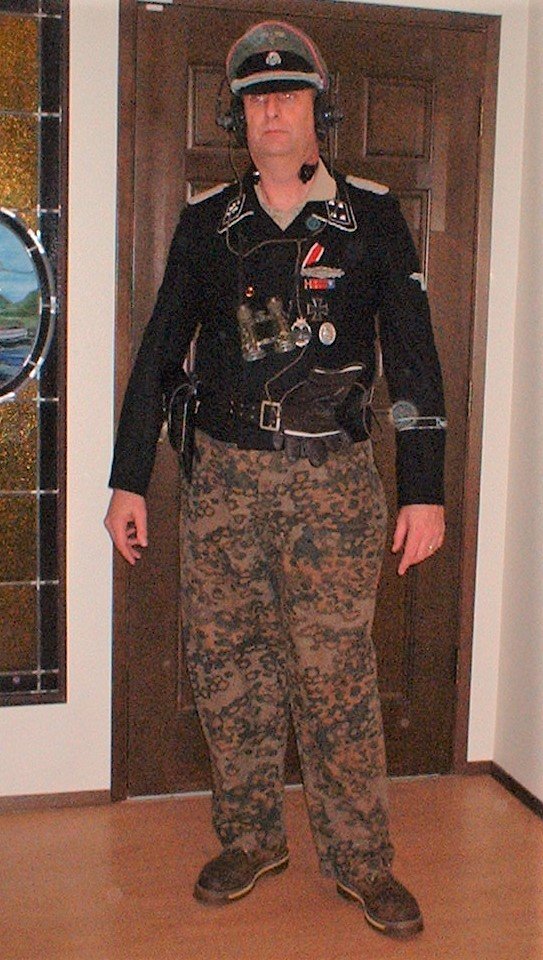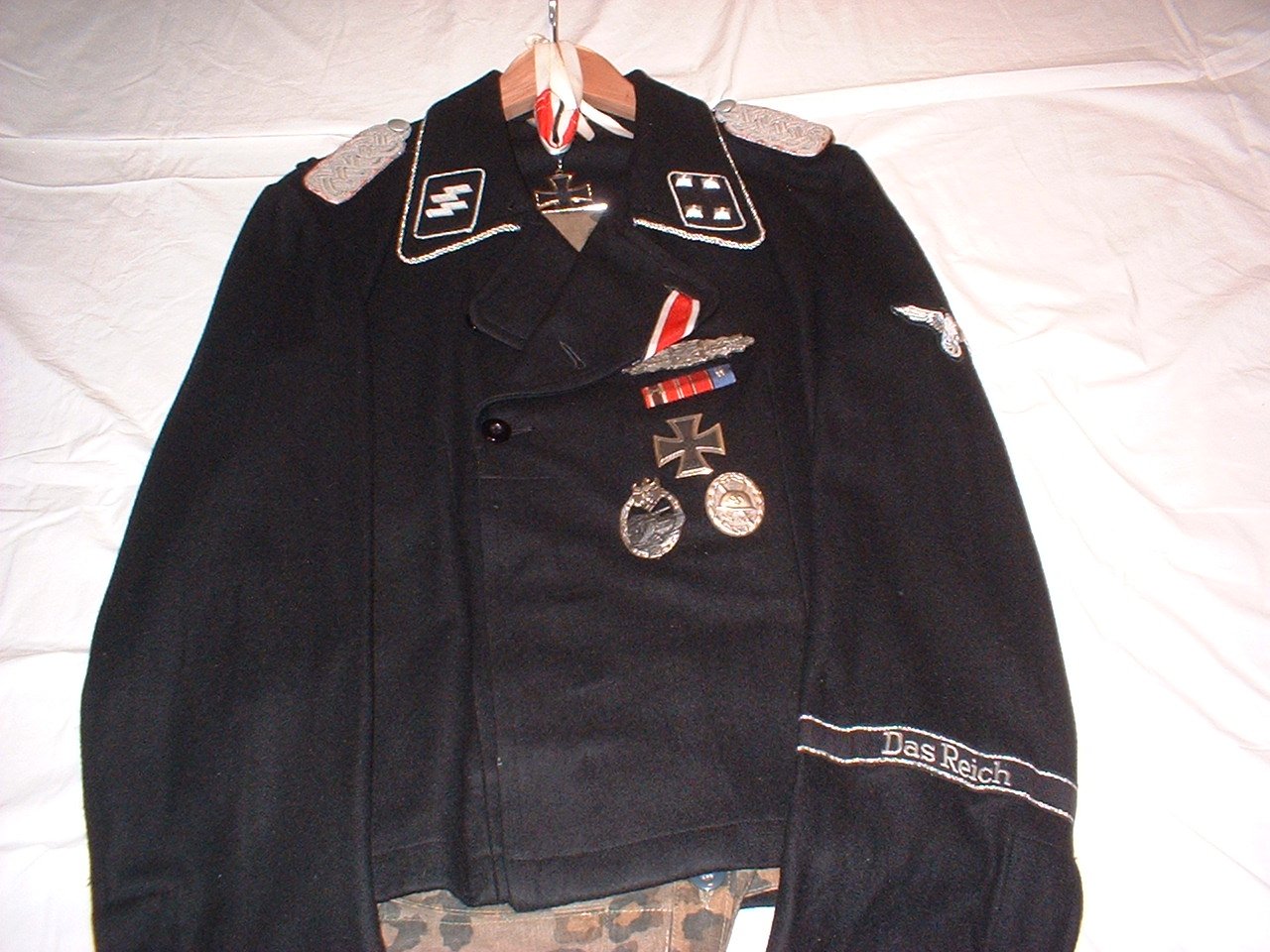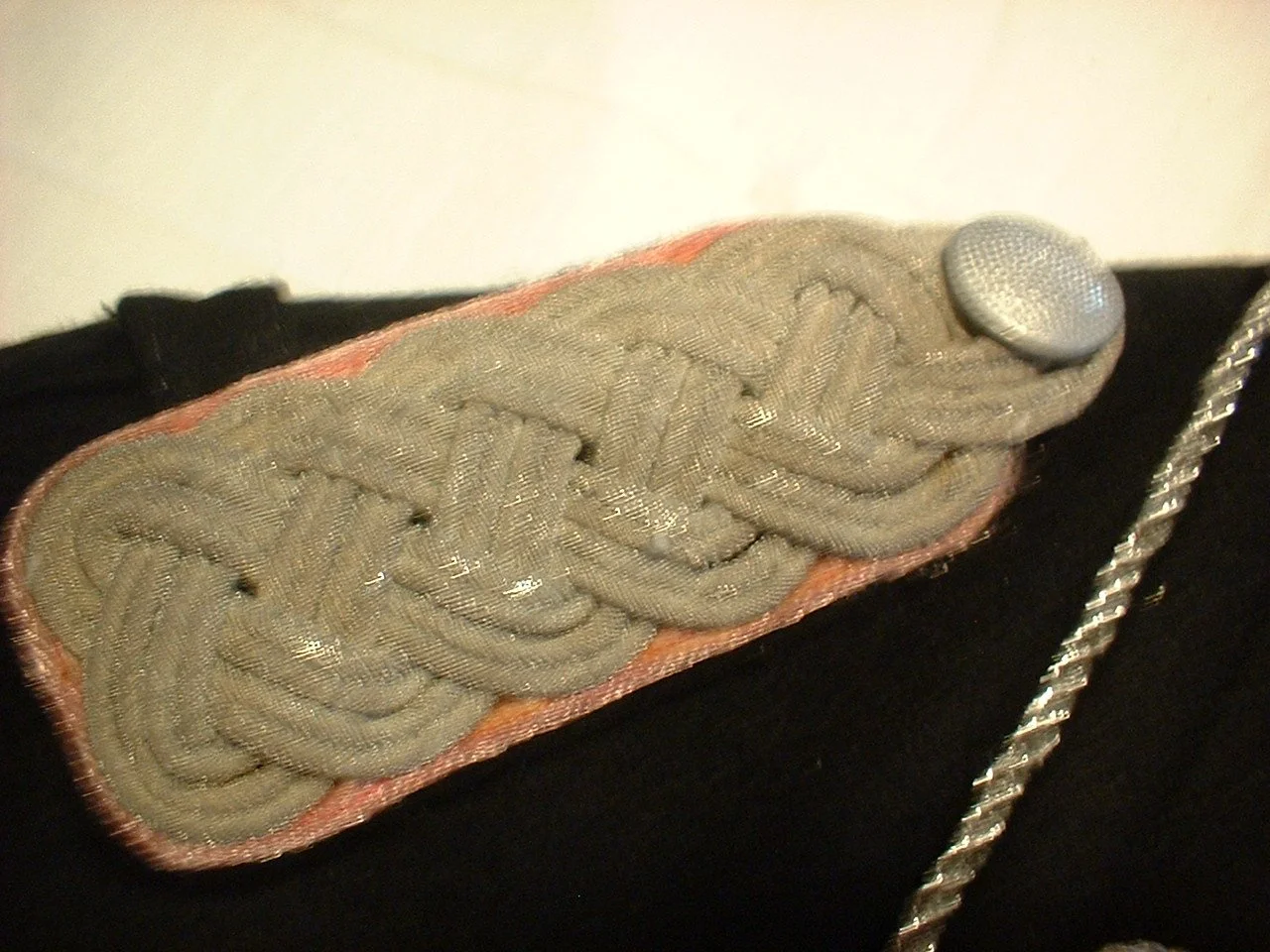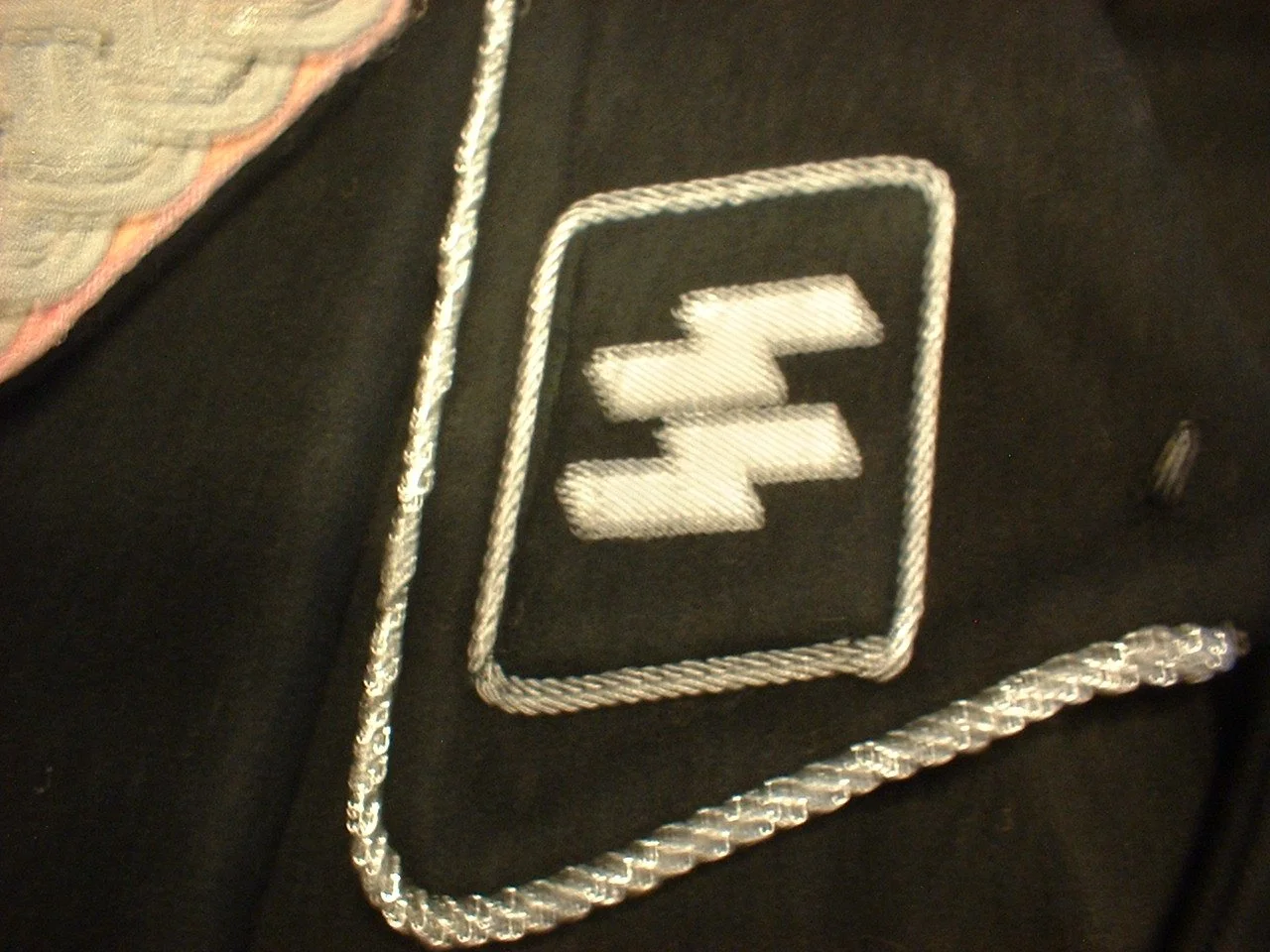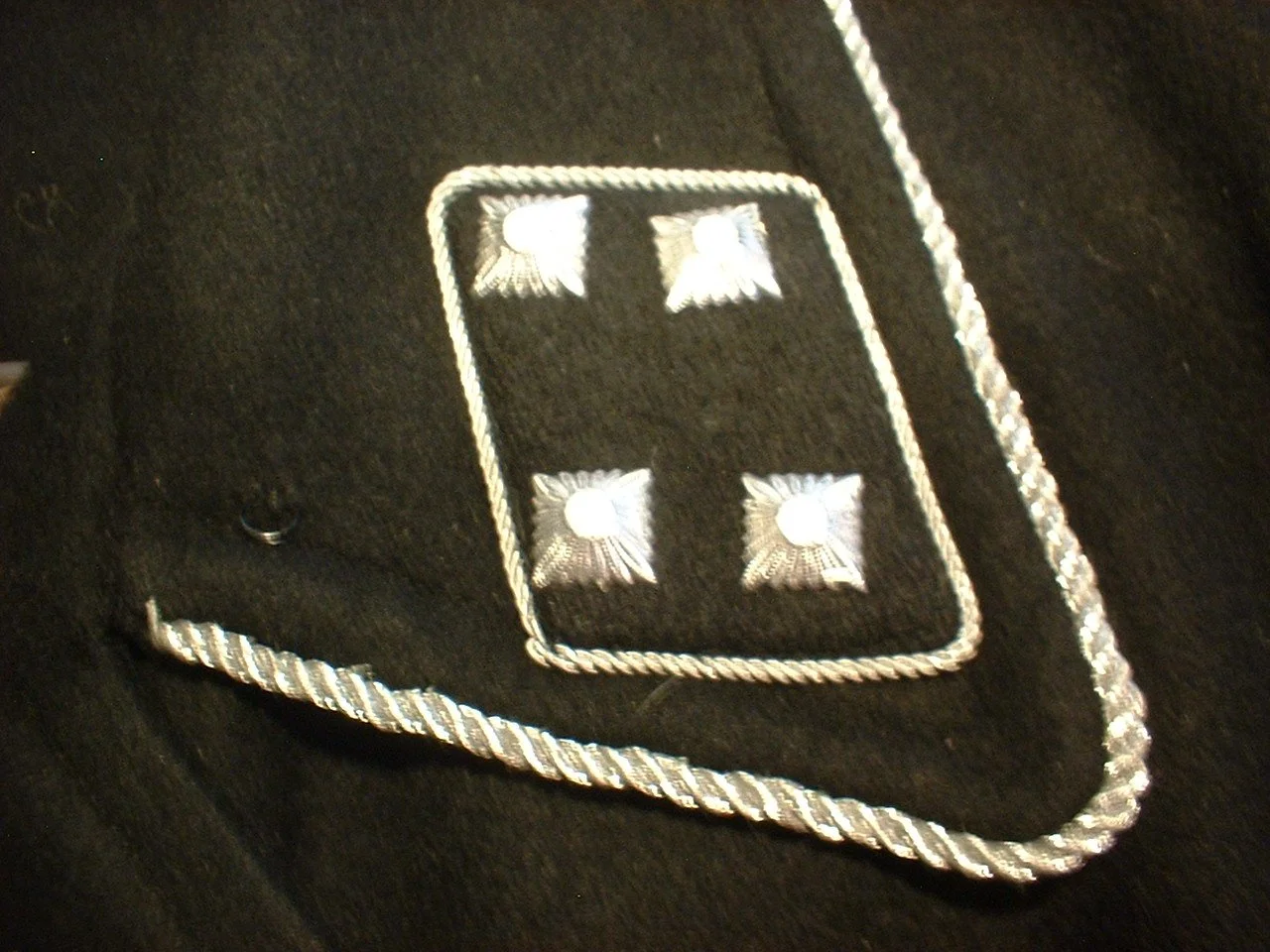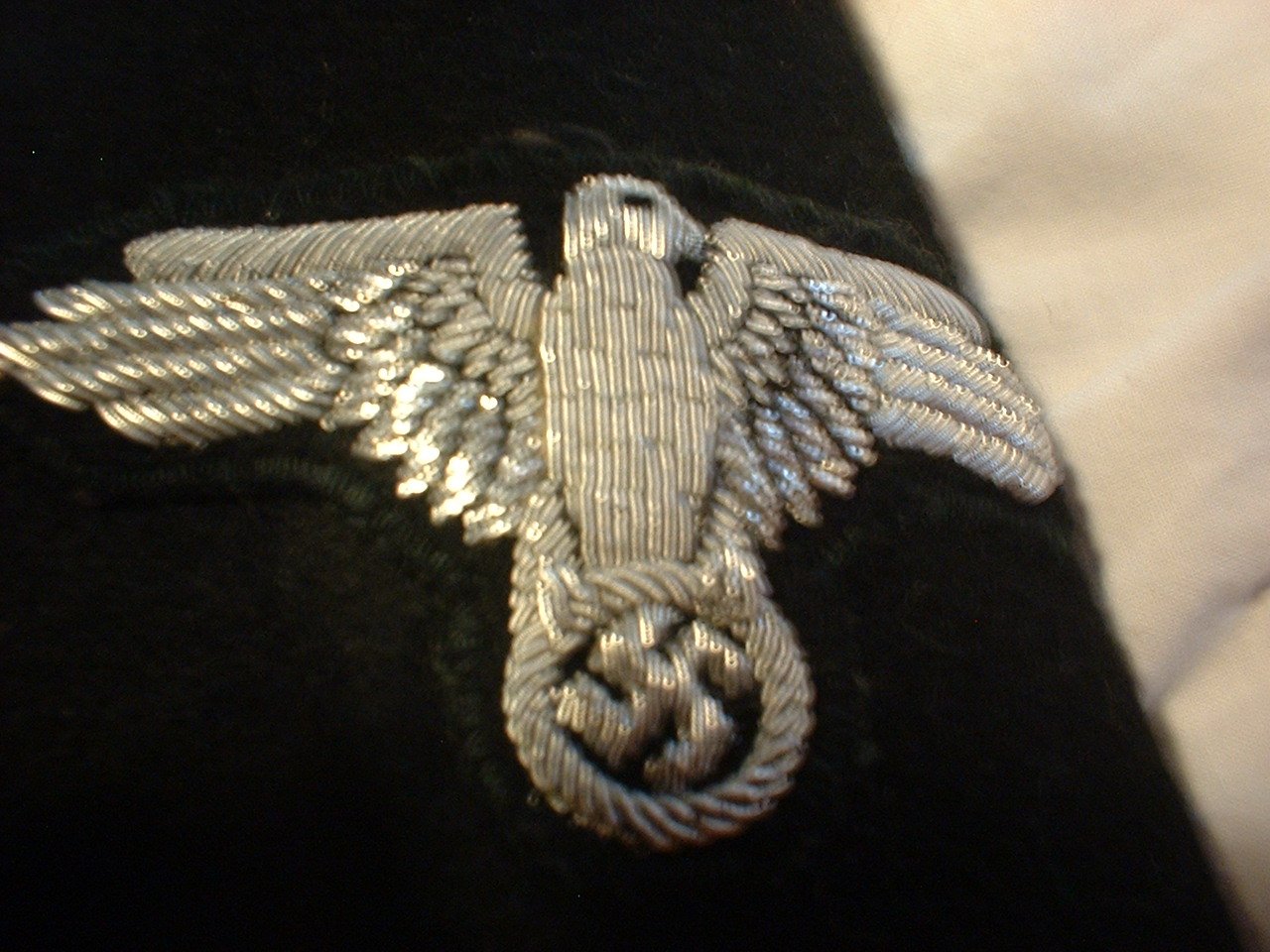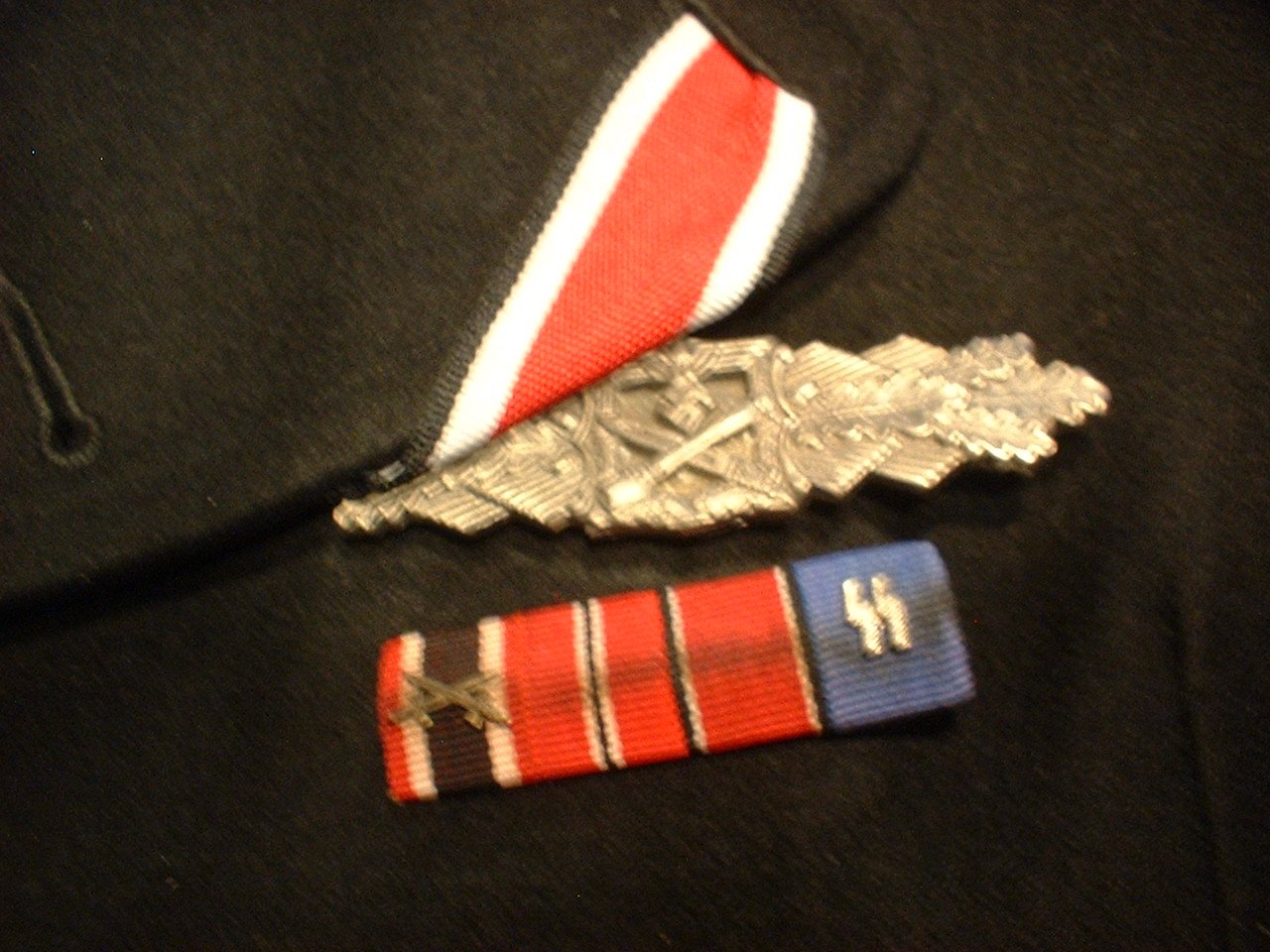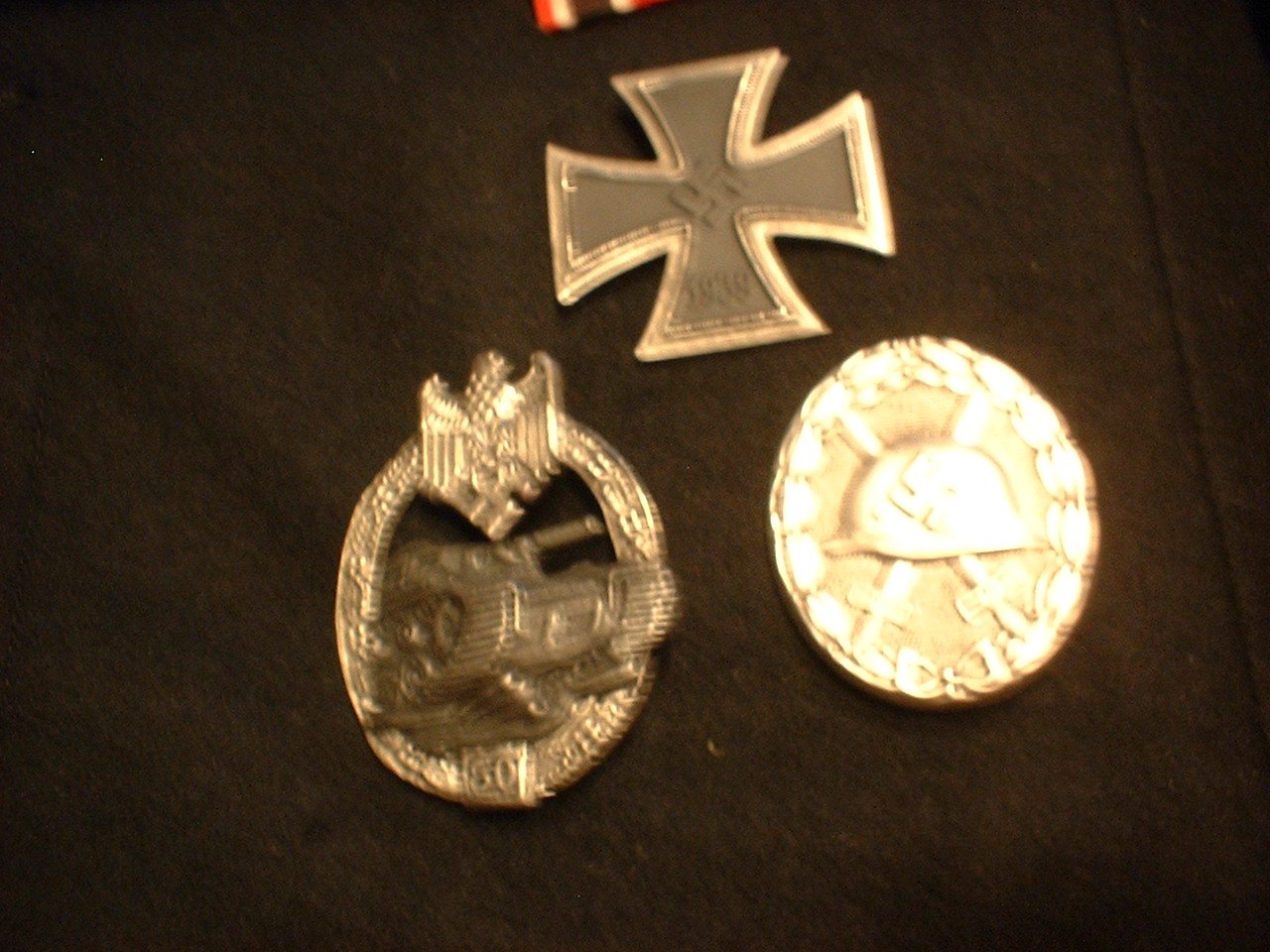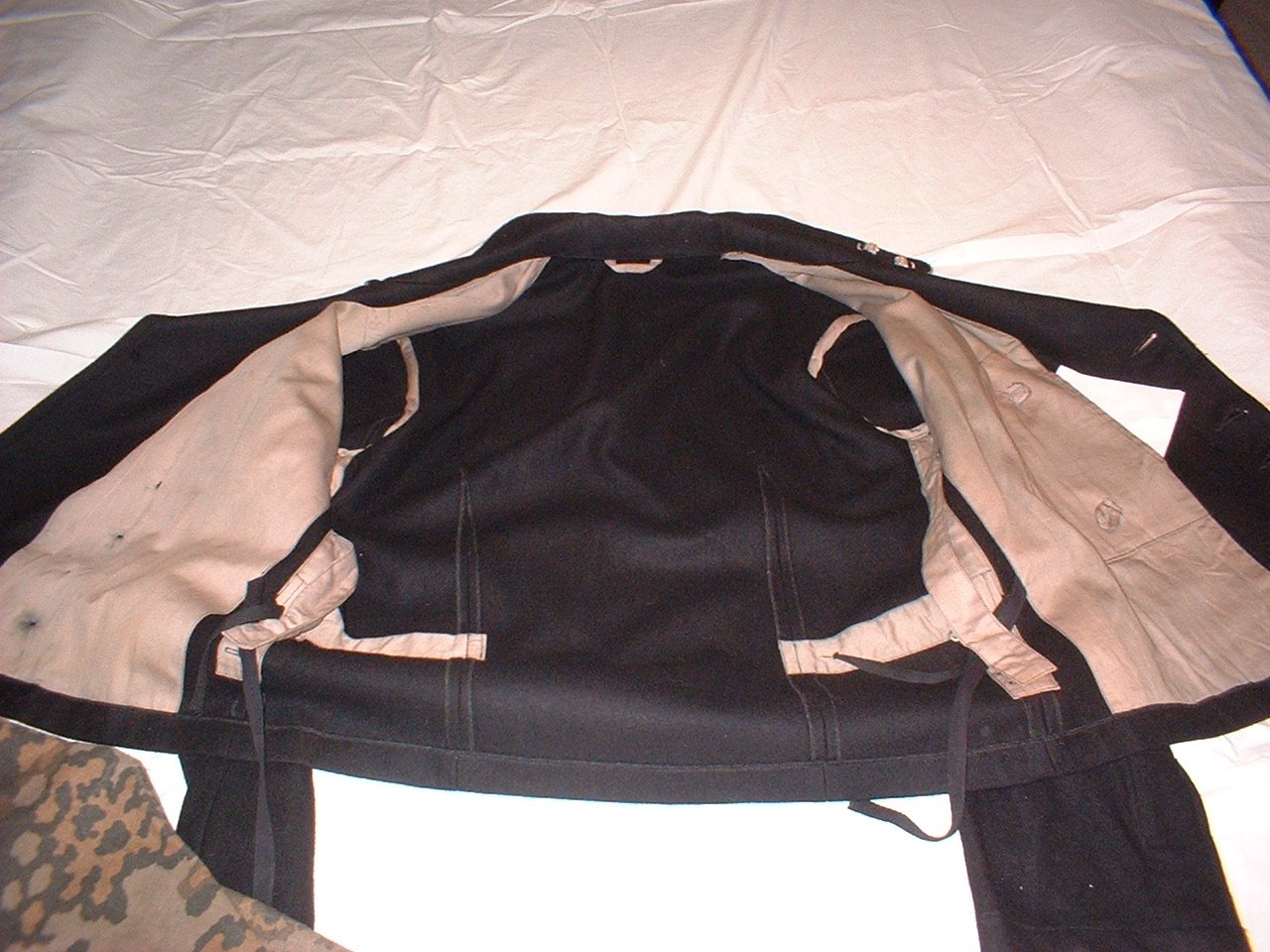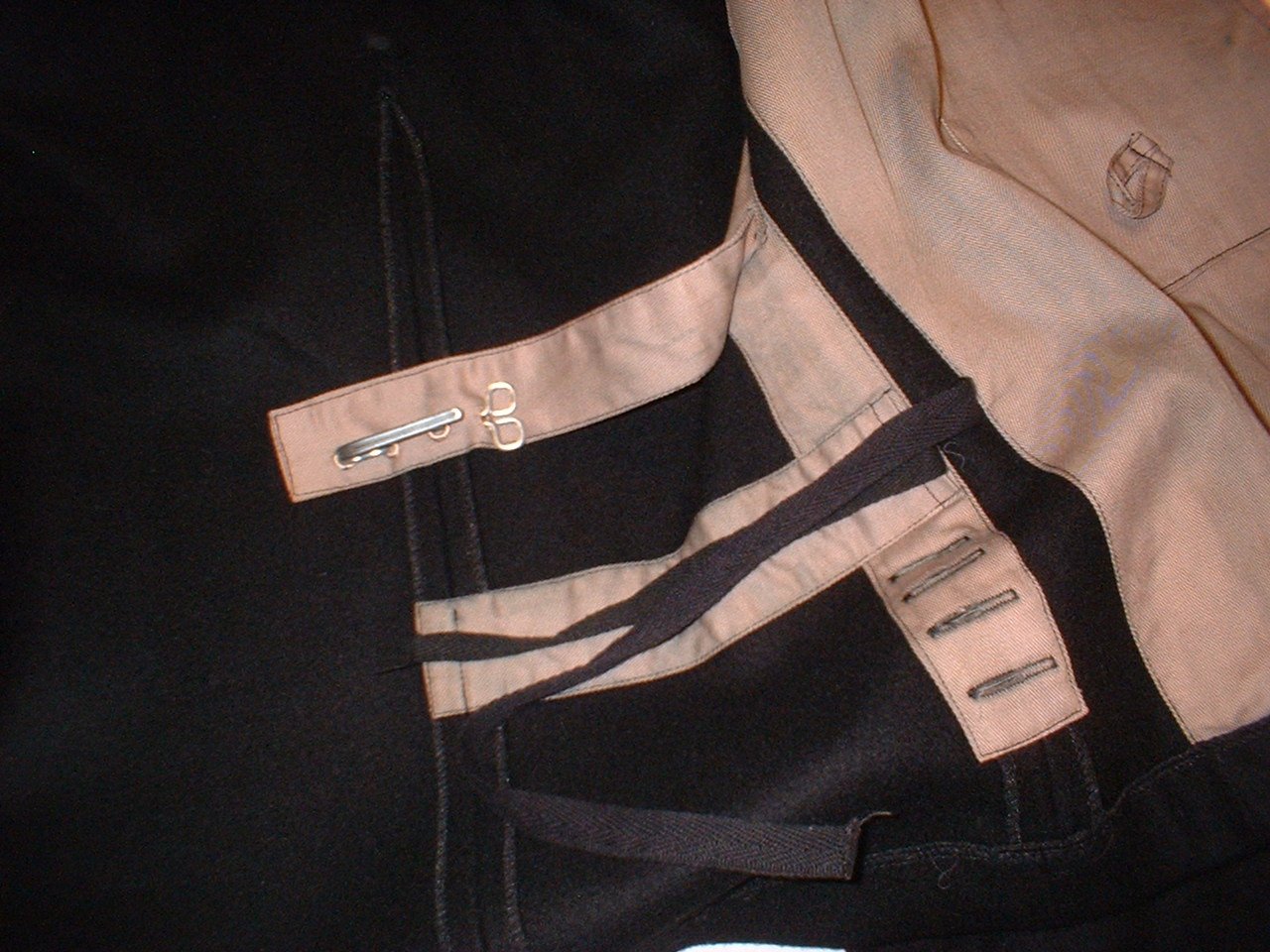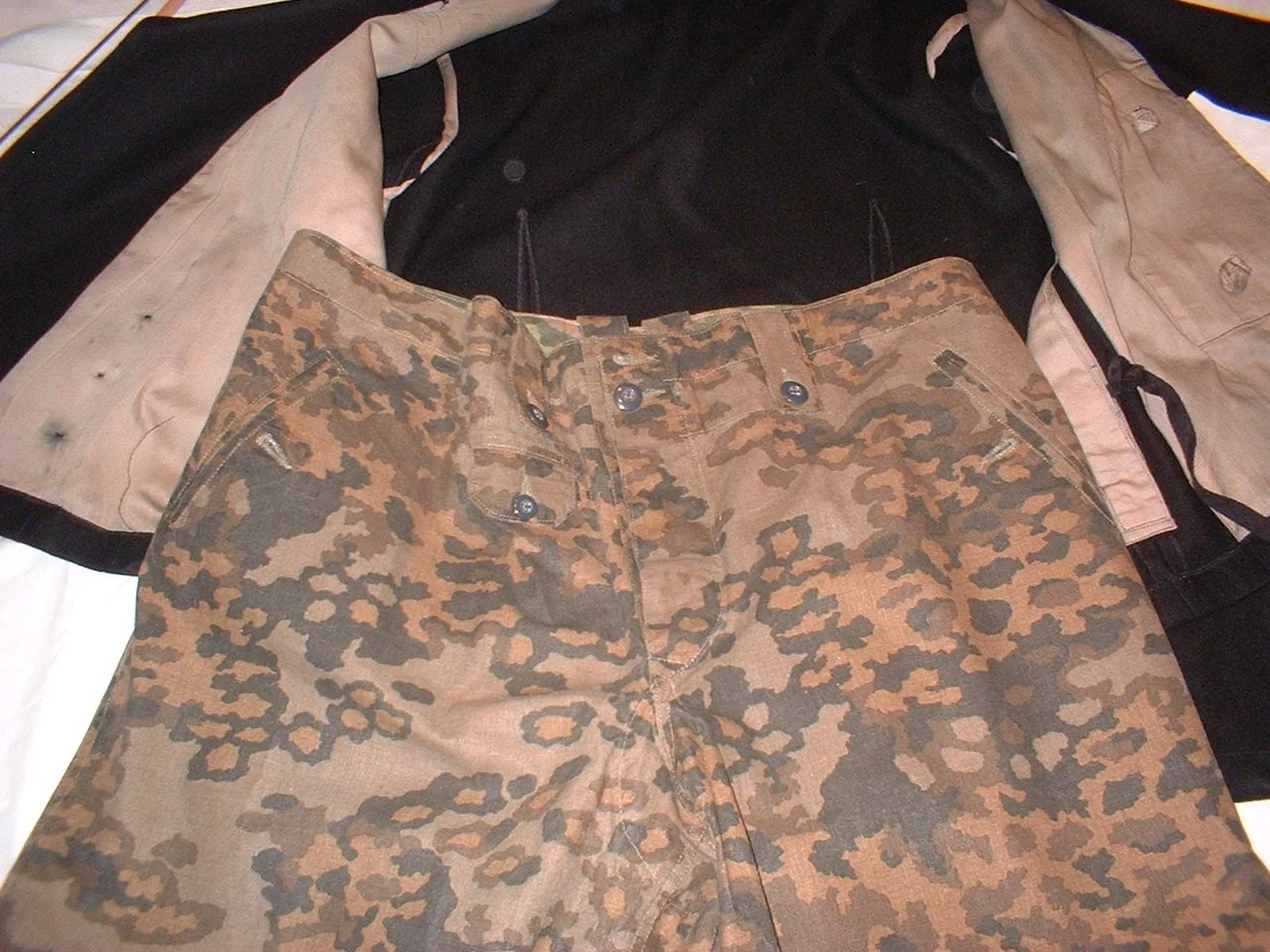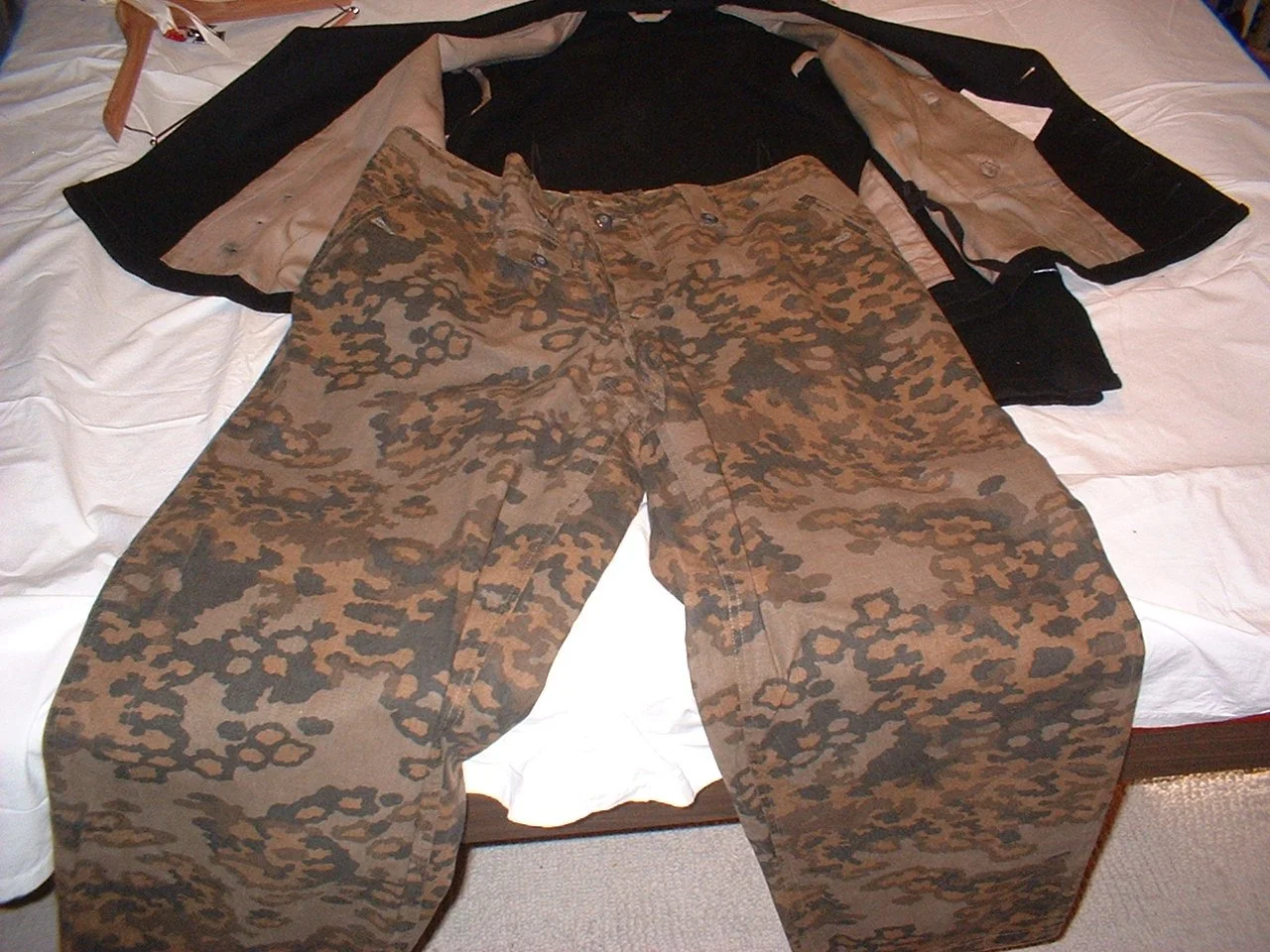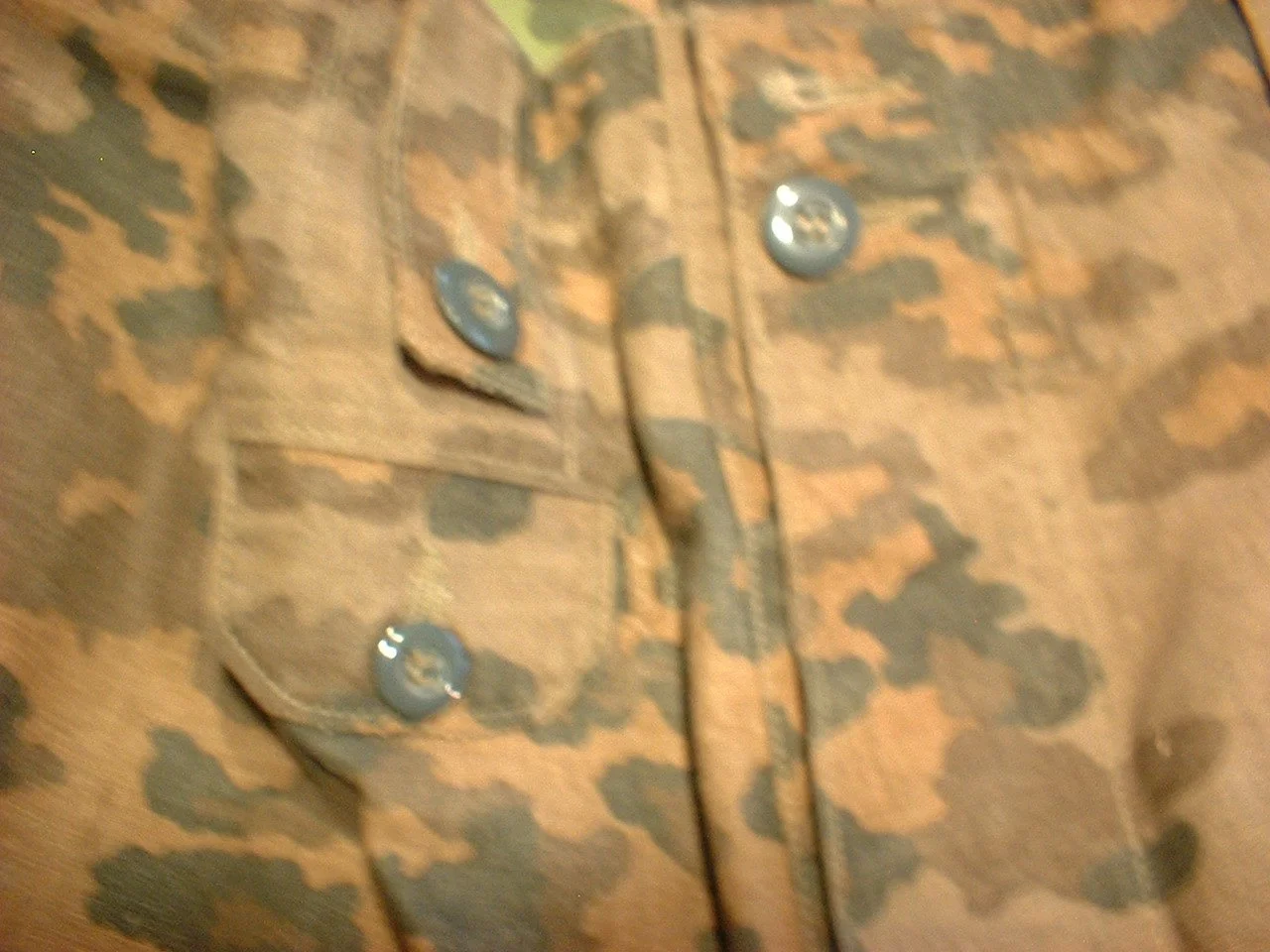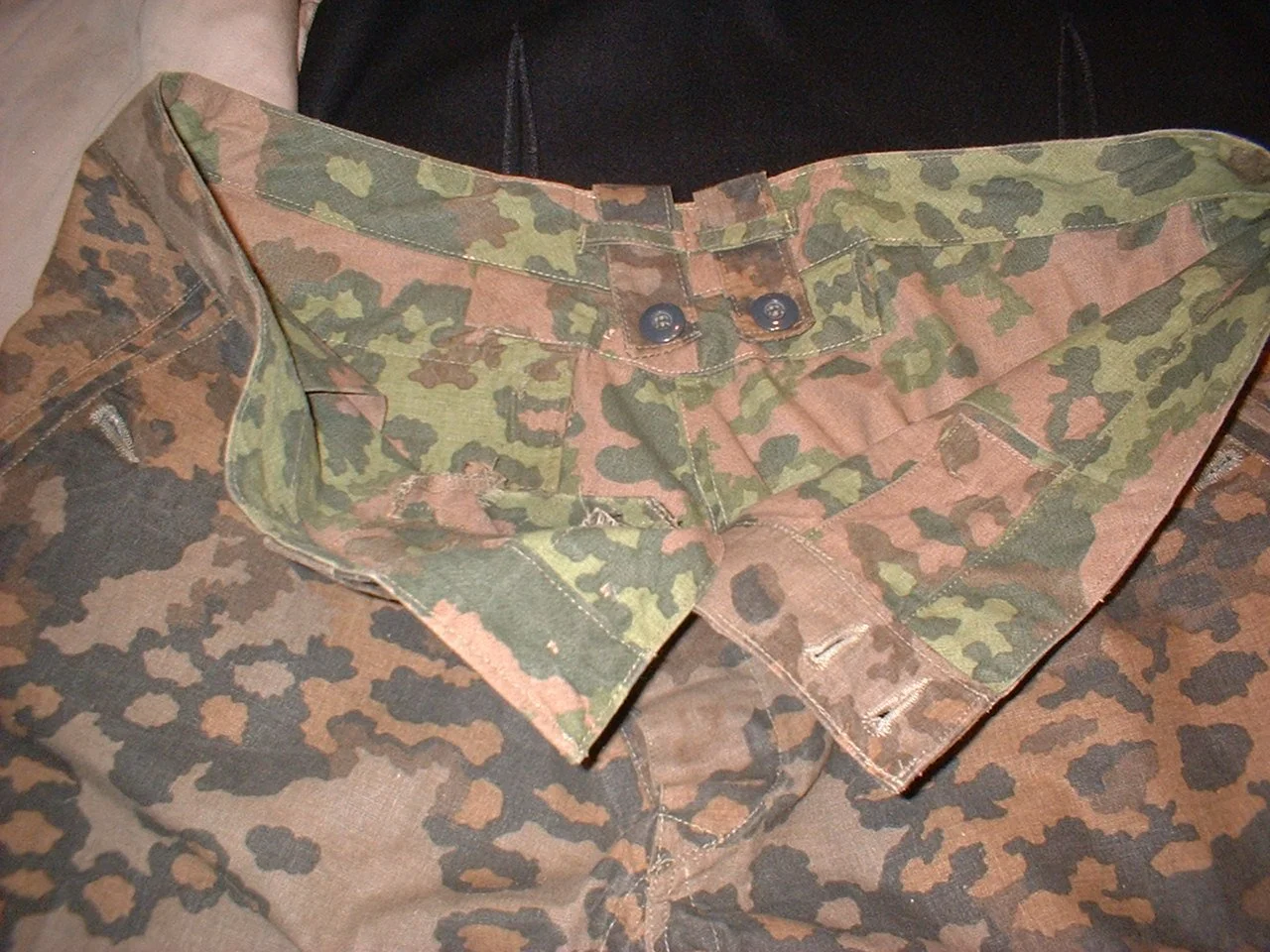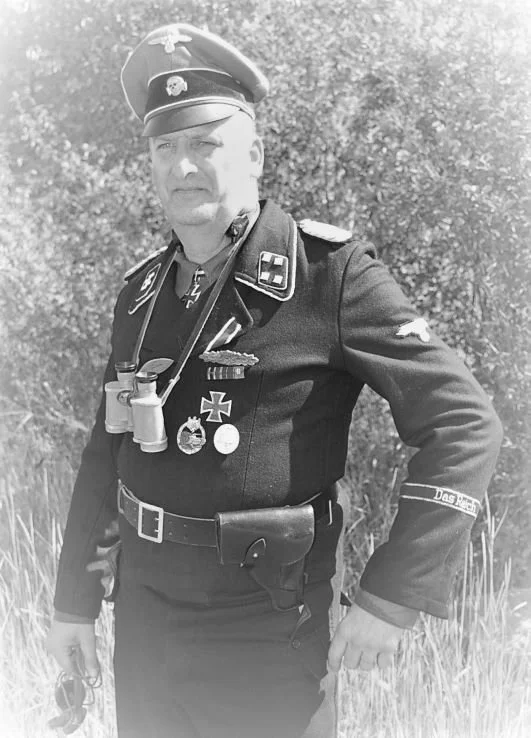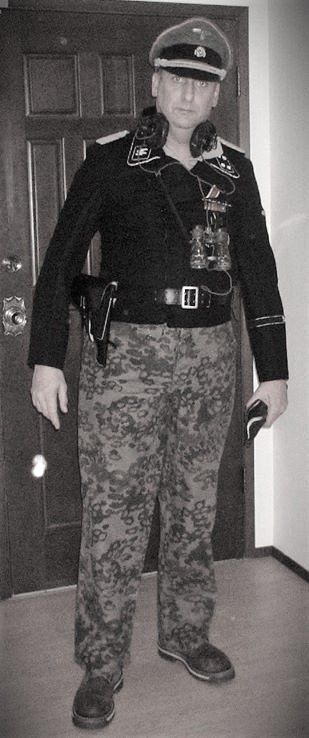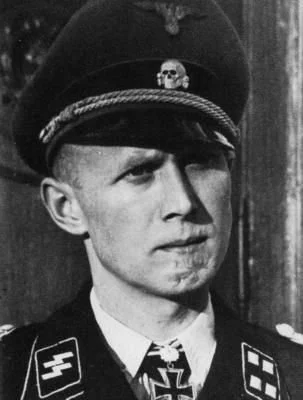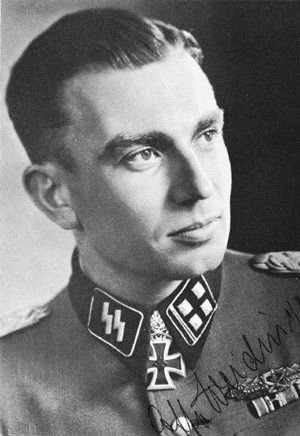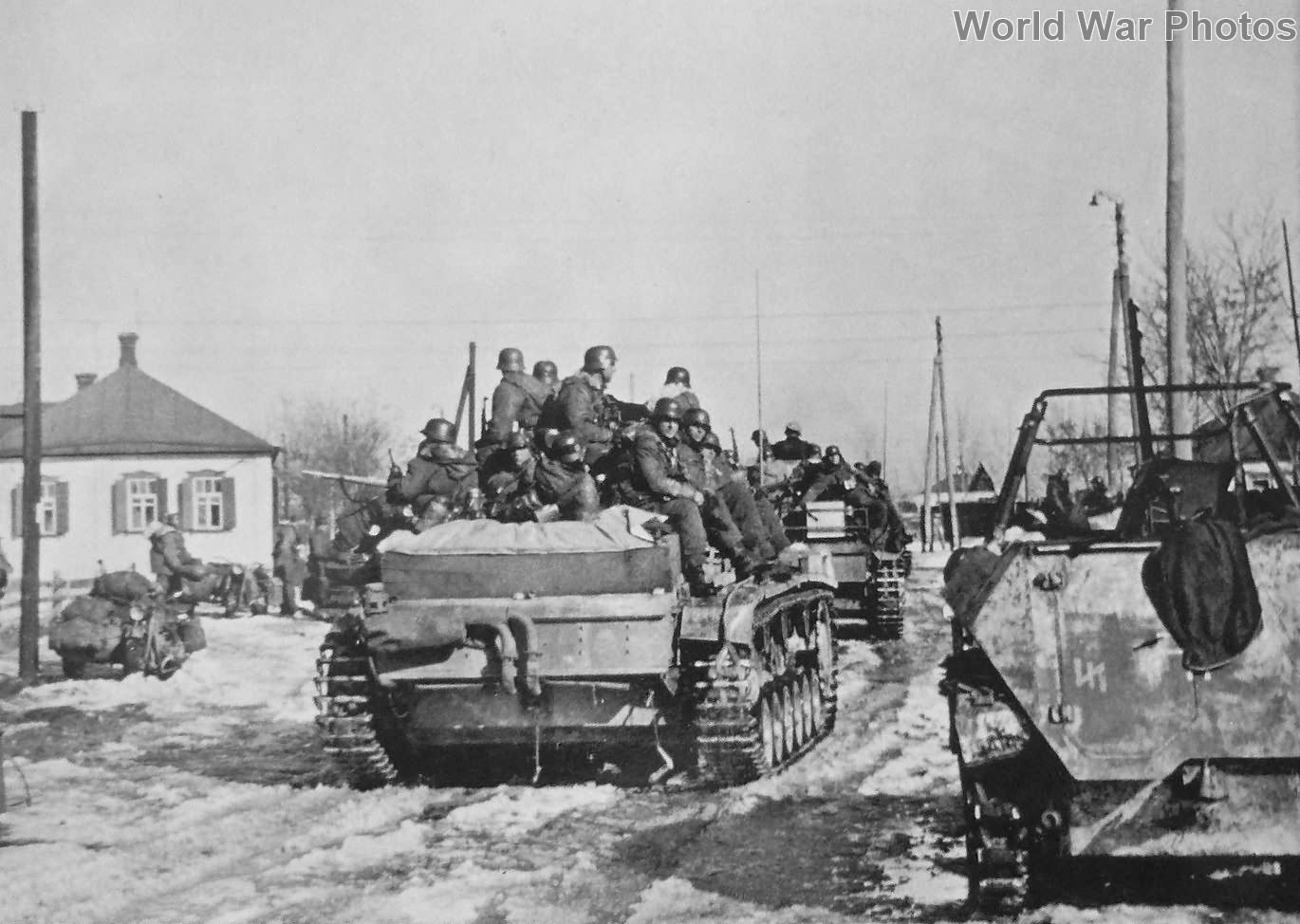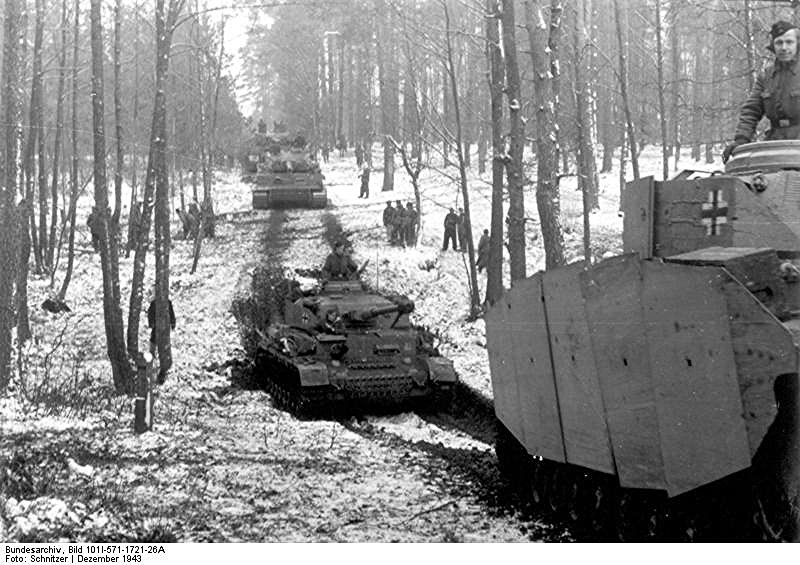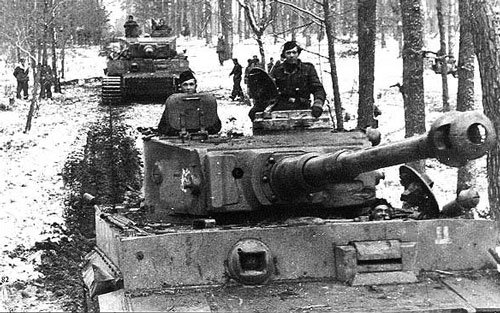2nd SS-Division, Das Reich:
SS-Sturmmann, *Flemish Friwilligen, SS-Grenadier Division “Das~Reich”:
In September 1940, the Algemeene-SS Vlaanderen announced its intention to recruit Flemish volunteers for the Waffen-SS, initially sent to the SS-Division “Wiking”. This began a "race" to recruit volunteers for the German military. Between April and June 1941, nearly 800 Flemish volunteers were raised for the SS-Freiwilligen Standarte “Nordwest”, a mixed Flemish-Belgian/Dutch unit. After the close of the Battle of France, the SS-VT was officially renamed the Waffen-SS in July 1940.
In December 1940, the “Germania Regiment” was removed from the Verfügungs-Division and used to form the cadre of a new division, SS Division “Germania”. It was comprised mostly of Danish, Norwegian, Dutch, and Flemish volunteers. By the start of 1941, the division was renamed “Reich,” and “Germania” was renamed “Wiking".
Not all foreign volunteers moved on to “Wiking”. SS recruiting chief Gottlob Berger anticipated the need to correct German errors in handling volunteers to salvage the faltering Germanic recruitment program. In February 1942, after the invasion of Russia, he outlined several issues that threatened to alienate all further recruiting efforts, such as the absence of sufficient measures to preserve the nationality of volunteer units when nine Danish volunteers were killed while in the ranks of “Das Reich”. During the invasion of the Soviet Union, Operation Barbarossa, “Das Reich” fought with the Army Group Center, taking part in the Battle of Yelnya near Smolensk; it was then at the spearhead of Operation Typhoon aimed at the capture of the Soviet capital.
By the time “Das Reich” took part in the Battle of Moscow, it had lost 60 percent of its combat strength. It was further reduced in the Soviet Winter Counter-Offensive: for example, the “Der Führer” Regiment was down to 35 men out of the 2,000 that had started the campaign in June. By February 1942, it had lost 10,690 men. By mid-1942, the division was pulled out of the front and sent to the west to rest and refit.
The SS-Strummann was married during well-earned leave during this period. His uniform clearly shows his Ost Front, Infanterie Sturmabzeichen, and the Tollenaere Kenteeken. The SS-Sturmmann wears the Heeres Dienstanzug Model 1936 with the new pattern of Feldmütz with metal insignia, which, while not regulated, may have been done to expedite these Ost Front veterans into a new uniform.
The Tollenaere Kenteeken was created to honor Reimond Tollenaere, who fell at Kopzy, near Leningrad, on 22 January 1942. The popular commander of the Germanic SS in Belgium, the “Black Brigade,” had been one of the first to volunteer for service with the Flemish Legion. The award commemorates his leadership in “Hero’s Death” and rewards the loyalty and sacrifice of the Flemish Friwilligen.
*This uniform could have been added to the “Foreign Volunteers Section”, but I felt he was a good example of an infantryman of “Das-Reich”, and the only Infantry representative of this division, so until more shows up, he’ll be here.
Again, I have to give credit to the period pictures, but I don’t know who the original photographs belonged to. These have been copied a zillion times already, mine too, great pictures though.
“STORY ADDED” SS-Rottenfuhrer, Nachrichten Abteilung. 2. “Das-Reich”:
The so-called Funktruppe generally operated German Feldfunken (Field Radios). Depending on the equipment and type of radio used, these “Truppen” could be anywhere from two men operating together, or up to several dozen in size. A typical Tornister Funktrupp, which would often be a part of a Zugtruppe, consisted of 2-4 men.
Generally, the members of a Funktrupp would be qualified radio operators, recognizable by a Lightning-Bolt Insignia sewn on the left sleeve. In a Torneister Funktrupp, there would typically be a corporal commanding, with the other members being lower-rank Funkers. Because most members of the Truppe were qualified radio operators, they would all be familiar with their equipment, and anyone could operate the radio. So, Radio watches would be organized according to the tactical situation, often manned constantly 24/7, so often, 2-4-6 hour shift patterns were set up. It would not be uncommon to have one radio operator handling incoming calls while another handling outgoing messages.
Often, one radioman would be relaying from a radio, another did the decoding, and another sent it in Morse code somewhere to higher command. Sometimes, there were extra runners there or a multitude of different frequency radios stacked together. As those Radios were no longer battery-powered but hooked up to generators, sometimes multiple generators, the men were in large bunkers or specially equipped Armored Cars, Semitracked vehicles, and even large trucks were commonly used. In any case, it was the Truppe Commander’s responsibility to ensure that the tactical needs were being met.
The Funker operator would listen to radio traffic, reacting to the transmission codes or Verkehrsziechen. In team situations, another Funker would concentrate on the message content, decoding, and transferring the message to the address. In most cases, the Funktruppen were assigned to specific tactical commands, and their role would be to provide all the communications for the Commander and his Staff.
This Nachrichten SS-Rottenfuhrer served in the initial invasion of the Soviet Union, probably carrying the Funktornister (Battery Radio Pack) on his back, which the operator would be using walking behind him, moving into the Soviet Union on foot, walking in, all the way, every day for months on end. By August 1944, he was probably commanding a Zug near Mortain, as the division was pummeled by the combined Allied Forces in Normandy, France. The combat-worn, mid-war pattern Feldbluse Model 1943 has Citrongelb (Lemon-Yellow) Waffenfarbe. Some insignia, like the machine-embroidered Radio-man “Blitz” on the sleeve, may have come from his previous uniform.
SS-Unterscharführer, SS-Artillerie Regiment 2 ,,Das Reich”:
2. SS-Grenadier-Division Das Reich was formed in October 1939 from the Deutschland, Germania, and Der Führer regiments of the SS-Verfügungestruppe (SS-VT). The regiment Germania was removed from the division in 1940 to form the 5. SS-Division Wiking.
Das Reich took part in the campaign in the west in 1940 and after spending some time guarding the border with Vichy France, it was transferred to the Netherlands. It took part in the campaign in the Balkans, where a small detachment led by SS-Hauptsturmführer Klingenberg managed to get the mayor of Belgrade to surrender the city without a fight.
Participating from the first stages of Operation Barbarossa, it fought on the frontlines until August, when it was withdrawn for refitting. It was sent back to the front in September, and a few months later, it took part in the failed offensive against Moscow. It was transferred to France in March 1942, except for a small Kampfgruppe, where it was upgraded to a Panzergrenadier Division. It was sent back to the Eastern Front in January 1943, where it took part in the capture and recapture of Kharkiv as well as fighting at Kursk.
Das Reich was transferred back to France, this time to be upgraded to a Panzer Division, and was sent to Normandy when the Allies invaded. It took part in the heavy fighting in Normandy before retreating into Germany. It later took part in the fighting in the Ardennes, Hungary, and Austria. Before surrendering to the US Army, elements of Das Reich helped large numbers of civilians in Prague escape the Red Army.
The 10.5 cm leFH 18 leichte Feldhaubitze was the standard artillery piece that was adopted for service in 1935 and used by all divisions and artillery battalions. Designed in the late 1920s, it represented a major advance on its predecessor, the leFH 16. It was superior in caliber to its early opponents in the war, with adequate range and firepower, but the modern split trail gun carriage provided it with more stability and traverse.
The Unterscharführer joined the Artillerie Regiment as part of the newly formed Panzergrenadier Division, moving to the Ost Front in January of 1943. Following the intense combat in Kharkiv and Kursk, he was awarded the Allgemeines Sturmabzeichen as well as the Eisernes Kreuz II. Klasse. Promoted to SS-Rottenführer, he took command of a gun crew. With the divisional transfer to France for refit into an SS-Panzer Division he was promoted to SS-Unterscharführer and issued a new SS-produced Feldbluse Model 1944 (nearly identical to the Heeres Feldbluse M43 except for retaining the earlier five-button front closure and reducing the belt hook eyelets from three to two at each position) has had tress added to the collar and locally made shoulder boards before his promotion party. He has inherited a Feldmütz für Unterführer piped in Artillerie Waffenfarbe, to which he has added a chinstrap and shined the visor to match his highly shined March Stiefel and cartridge belt.
SS-Obersturmführer Rudolf Garscha, SS-Panzer Artillerie Regiment 2 “Das Reich”:
Rudolf Garscha joined the SS-VT in 1938 as an Infanterie Soldat, moving into the Artillery Regiment SS/VT in June 1939. Showing promise of leadership as a gun commander, he attended the Junkerschule Braunschweig. Upon graduation, he was promoted to SS-Standartenoberjunker and assigned to the SS-Generalkommando until the spring of 1943, when he was assigned to SS-Panzer Division 2 “Das Reich”. From 1943 till the end of the war, Garscha filled various posts in the Artillerie with the division, from Ordnance Officer to Batterie Führer with 8.Batterie.
A bold leader, often in action in front of the division’s lines, Garscha earned Deutschen Kreuzes in Gold as well as both the Eisernes Kreuz I. u. II. Klasse, the Nahkampfspang I. u.II. Stuffe, the Allgemeines Sturmabzeichen, as well as the Verwundetenabzeichen in Silber. Garscha was promoted to SS-Hauptsturmführer in Januar 1945
Photographed following the award of the Deutschen Kreuzes in Gold in April 1944, Garscha wears a Panzerjacke made from the M44 camouflage pattern with a dress shirt and tie. Schulterklappen with Rote Waffenfarbe display a gold metallic ’2’ identify Garscha as a member of ,,Das Reich”, SS-Panzer Division 2. With the Jacke, he will wear Panzerhosen in matching camouflage print and SS-Feldmütze für Offizier
Sturmbannfhr , 2nd SS Panzer Division "Das Reich”:
Without going through the entire story of Das Reich, I’ll talk about the uniform and how I saw it in use for different photoshoots. it portrays just one of the officers running the outfit…with the black trousers in the Spring, and by the Fall, he was wearing the camouflaged trousers.
With over 12 years in service, as shown by his ribbon with the silver runic device, this Sturmbannführer (Major equiluminant) has been in the SS since the early days. As a member of the first paramilitary section of VT of the SS, he was one of the first Waffen SS soldiers. Before that, he was a loyal member of the partaking place in the attempted overthrow of the Bavarian government in Munich, for which he was awarded the "Blood Order" by Hitler.
His SS cut (no rear seam, straight cut front) panzer jacket shows him as a leader in the 2. SS Panzer Regiment, failure with combat, he is in control of one of the infantry regiments, his experience evident by his Silver Close Combat Clasp. He has battled in Russia since the beginning of operations there, having the Eastern Campaign Ribbon on his ribbons bar next to his War Merit Cross with Swords. He has won the Iron Cross 2nd Class and 1st Class for combat leadership. He has fought in over 50 tank battles and has been wounded at least 4 times in combat; this man is probably in line for the German Cross and then the Knight's Cross from the Führer's hand. In the photoshoots of the uniform, several caps were used, a “Crusher Cap” and an early pink-piped “Schirrmutz” Officer cap. Either would work, but I can see a Black M42 or M43 Feldmutze would work fine, too, and be wearable in the vehicle.
All his uniform insignia are hand-made with bullion embroidery, as customary for a man of his rank. He wears a Schirmmutz piped in pink branch color, at this time in the war, it is against regulations. Since he is rarely out of battle at this point, few would care to bring that point up. Keeping with living in his command tank, he wears camouflage trousers so all he must do is throw on a camouflage smock kept close at hand for a dismounted recon or if forced to the bailout of a destroyed panzer, still, it took a while before all armies adopted camouflage uniforms, something so practical too. He had a handgun in a holster on an officer’s belt and finished off with a shirt and black ankle boots. Most Waffen-SS Officers life span was cut very short after being captured by the Soviets, all German troops were hated and treated poorly, but the SS, well that was on a different level, and the SS knew it, so, they fought on till the bitter end…and it was all of that.
This represents no specific person, but it wouldn’t surprise me to find someone with a similar uniform. And as a Major, he very well may have ridden around in a Command and Control Vehicle, such as Sd. Kfz 250 or 251 Semi-Track, or drove around in his own 4x4 vehicle. I know some of the pictures I have are blurry, but they are the best I have at the moment, and one day, I hope to get better ones.
